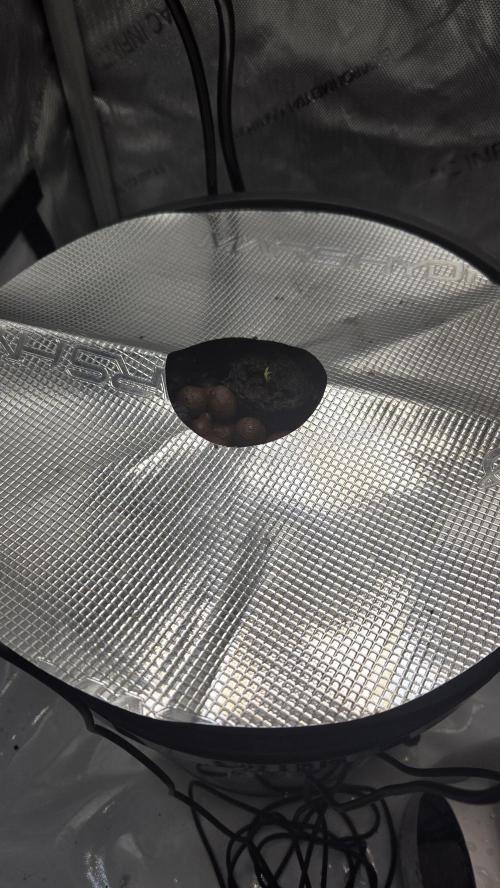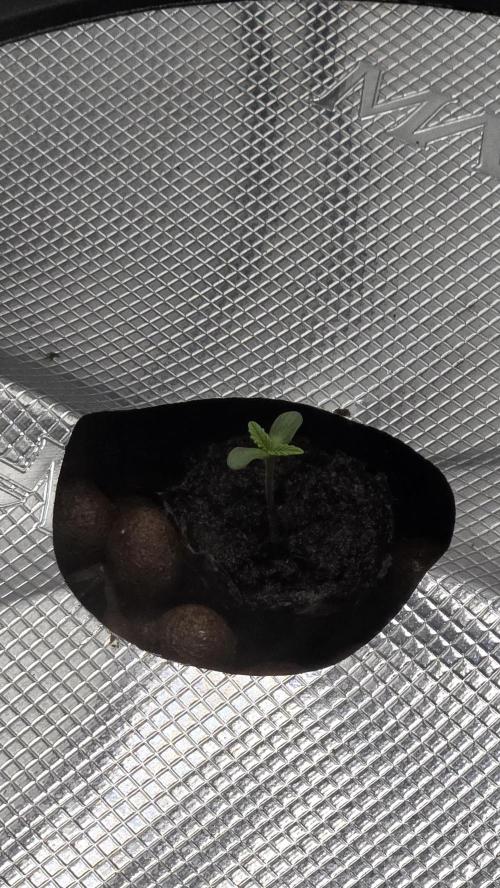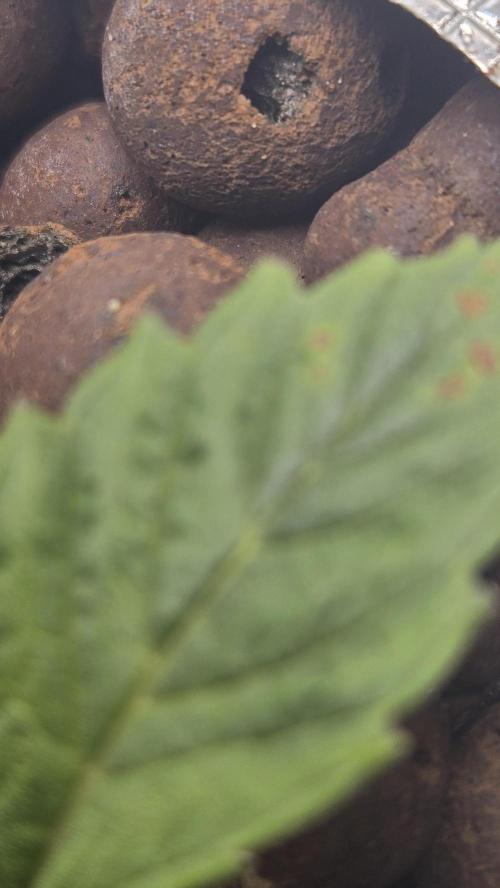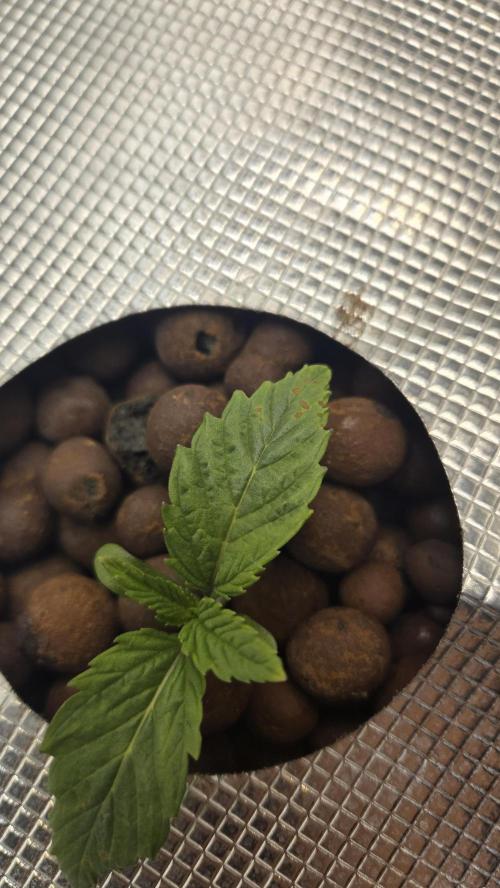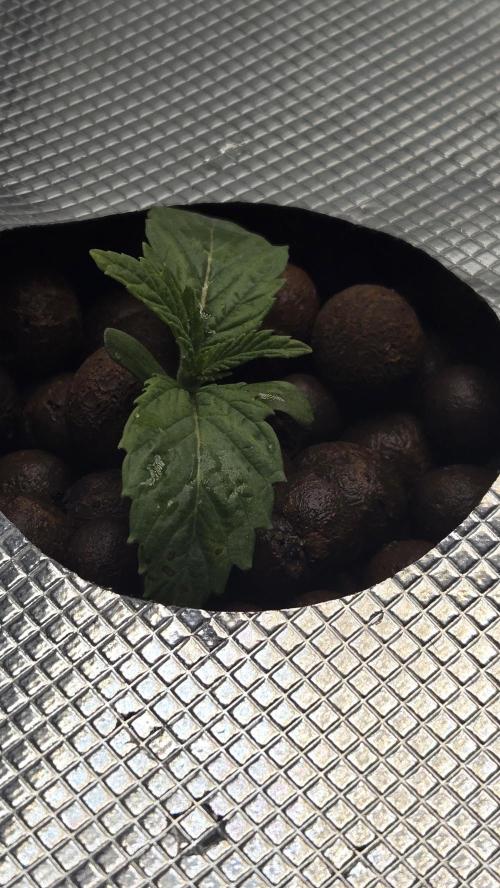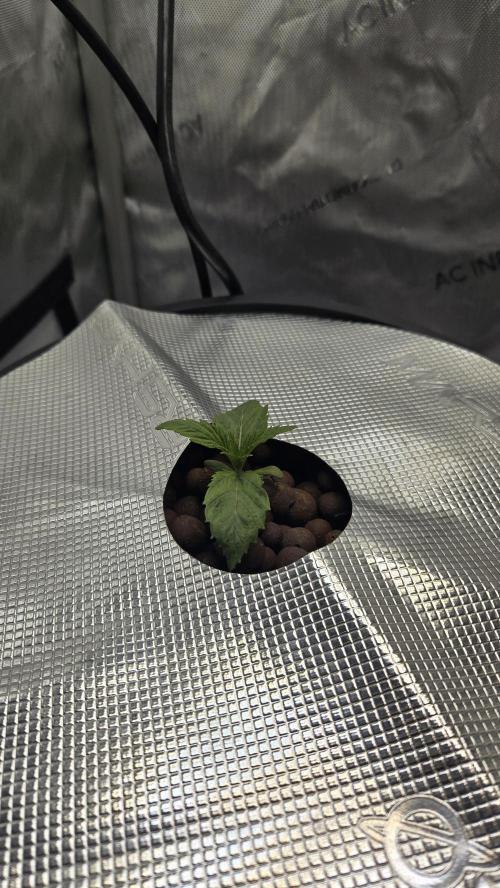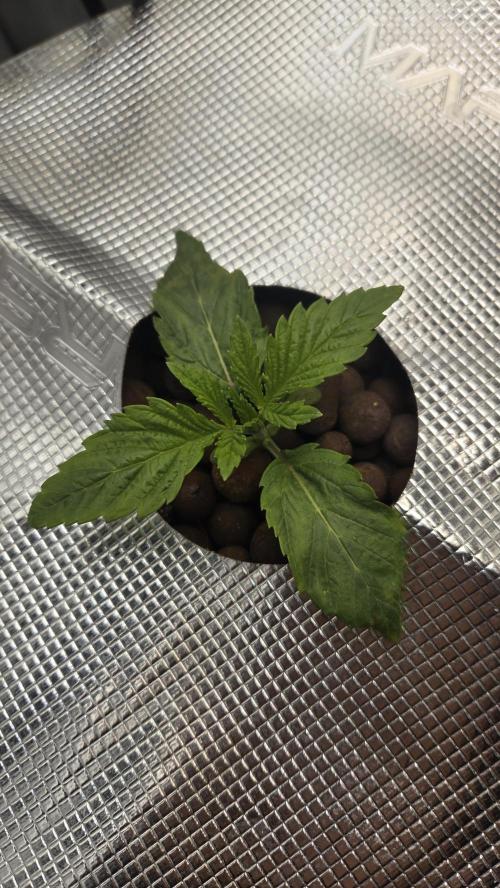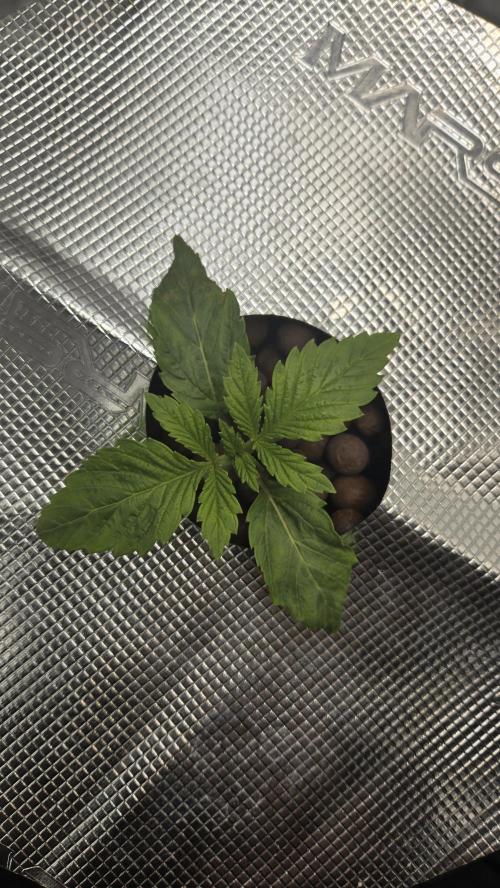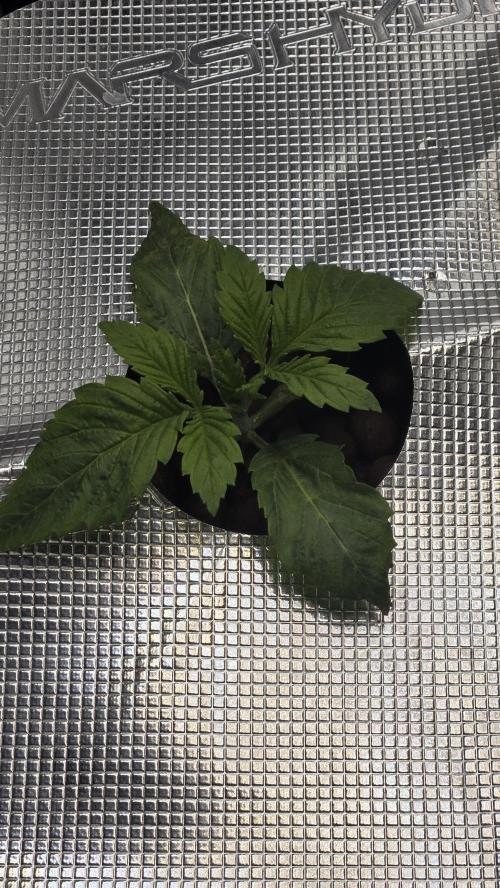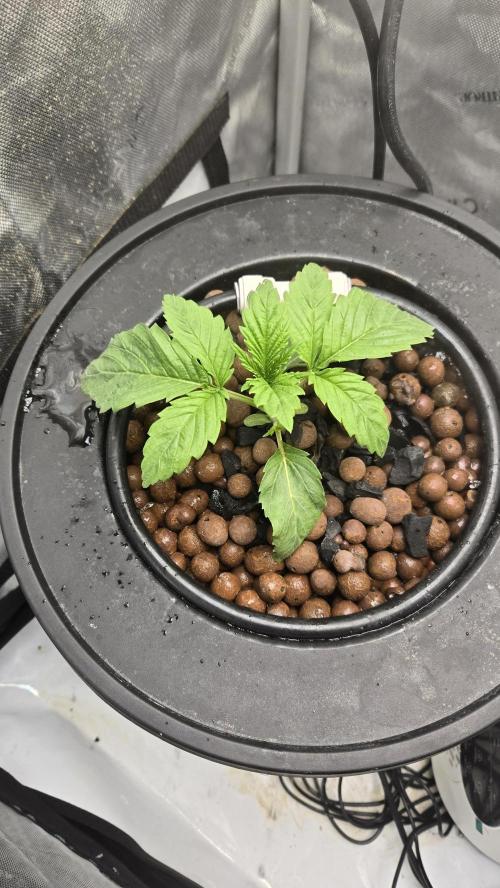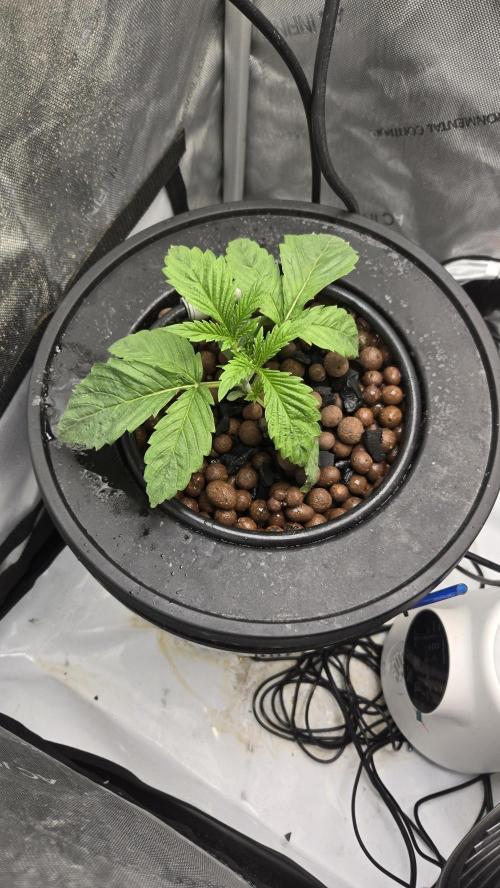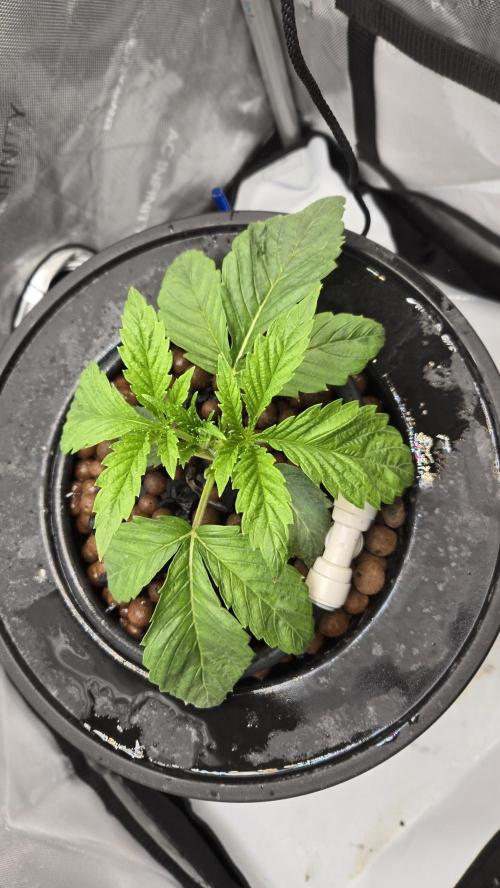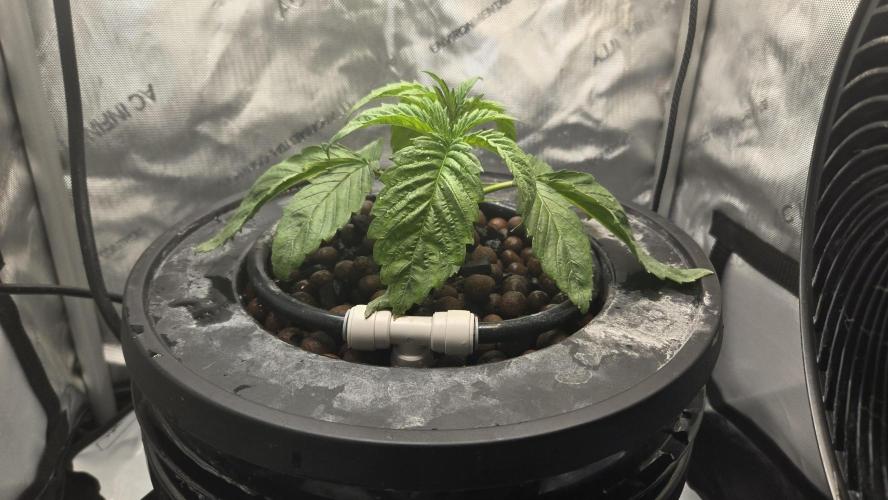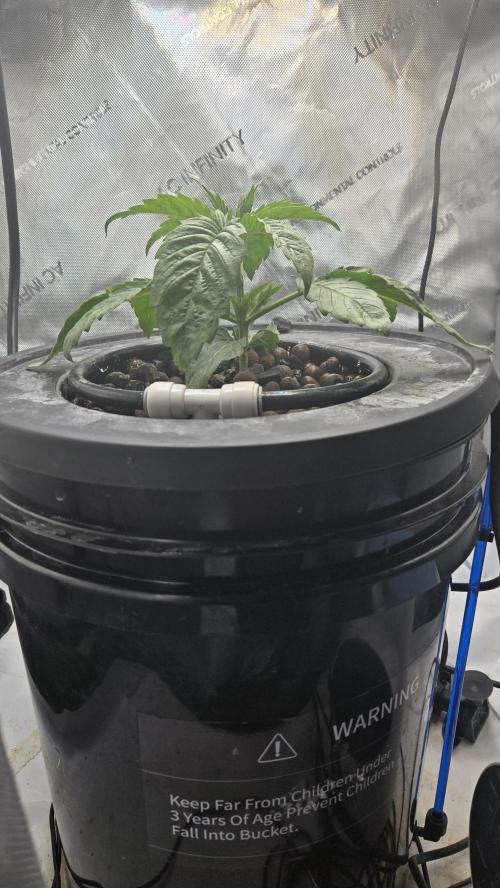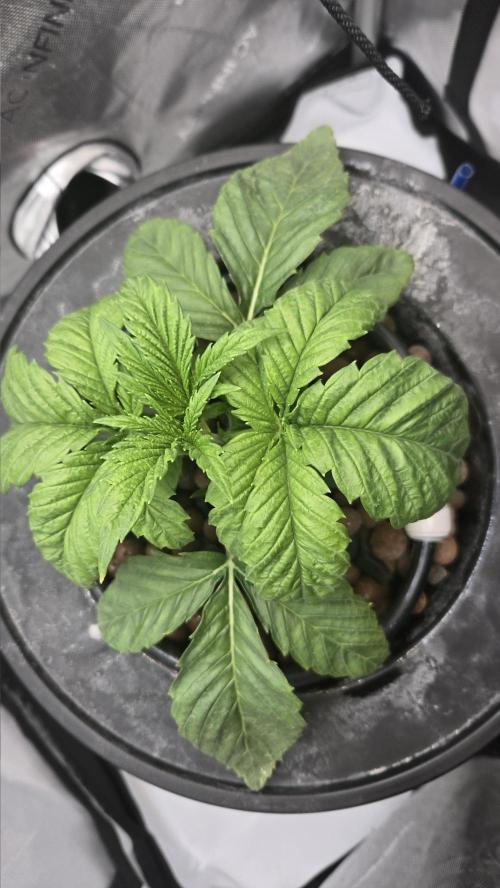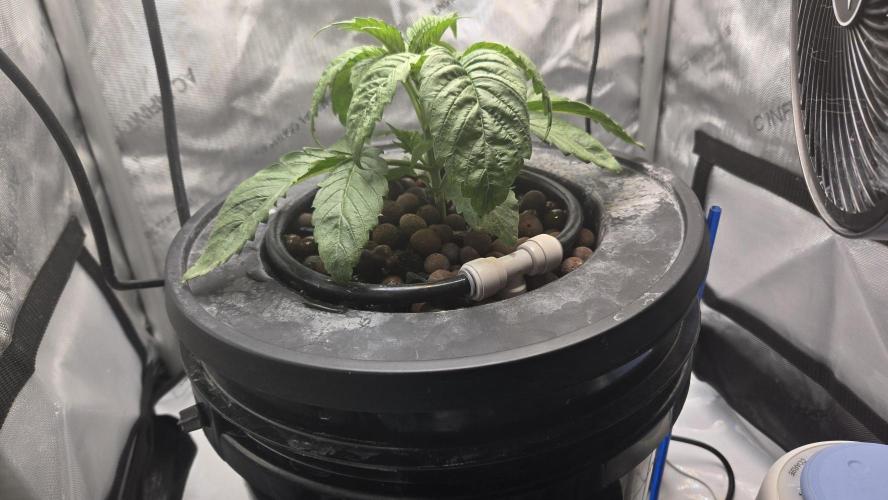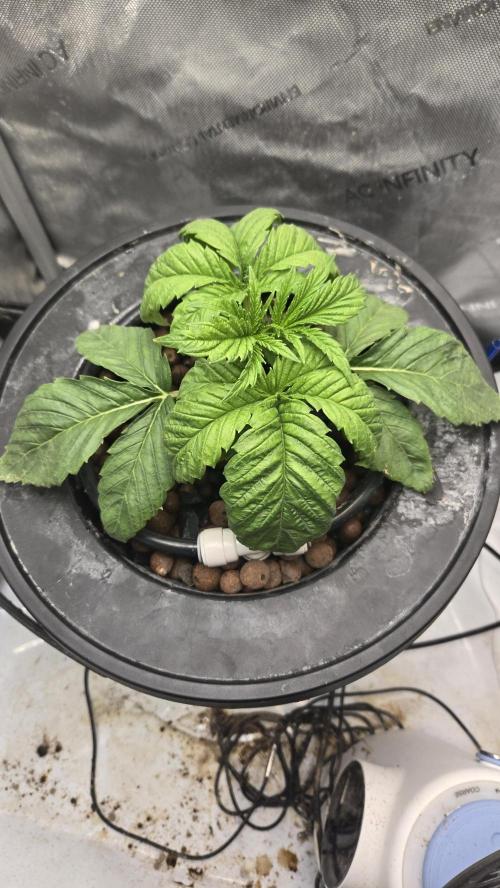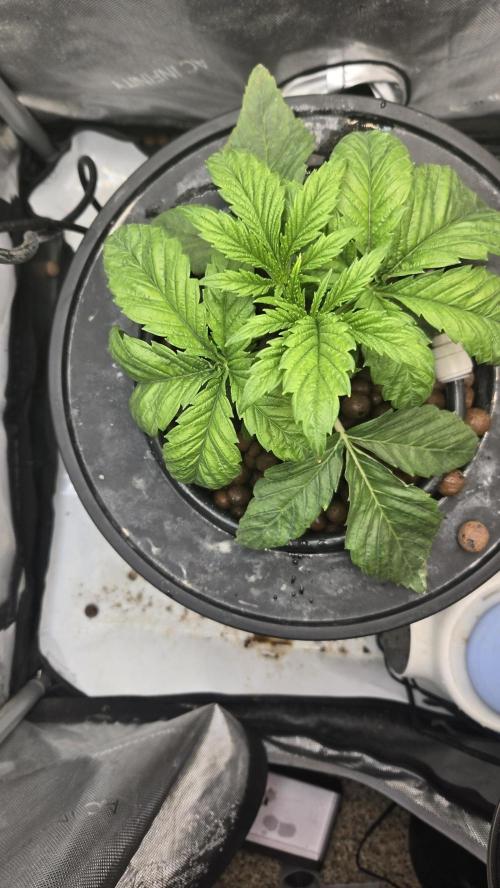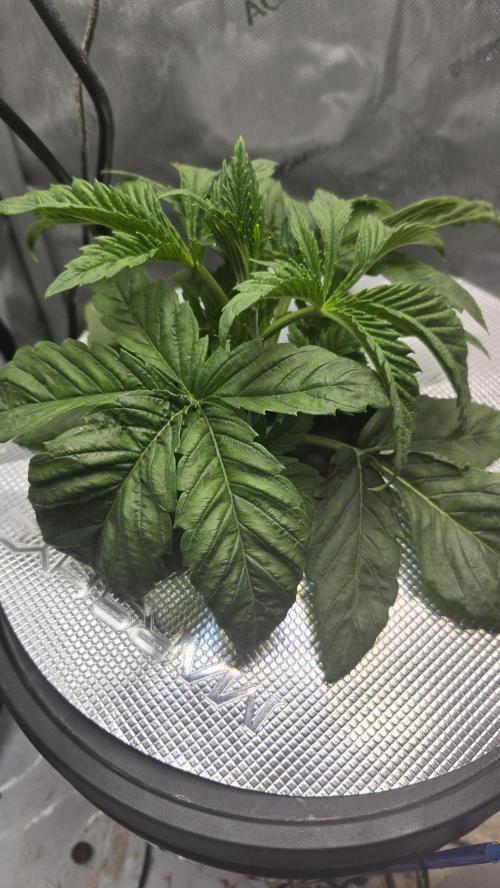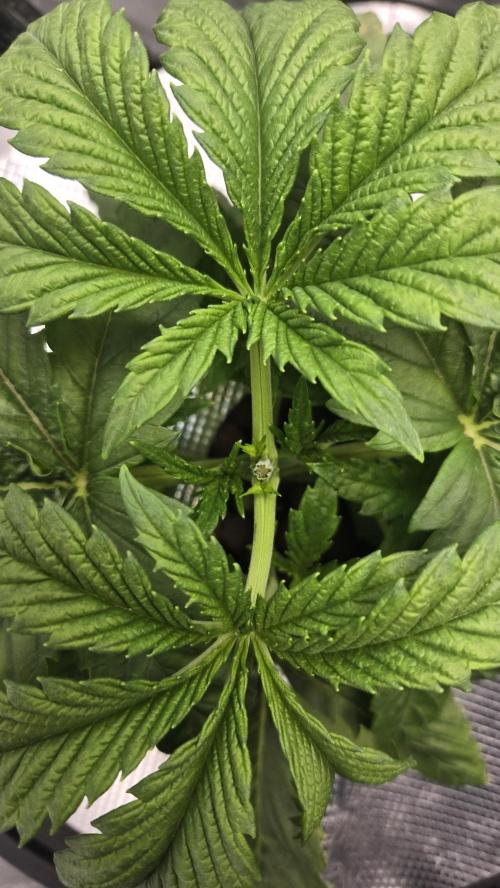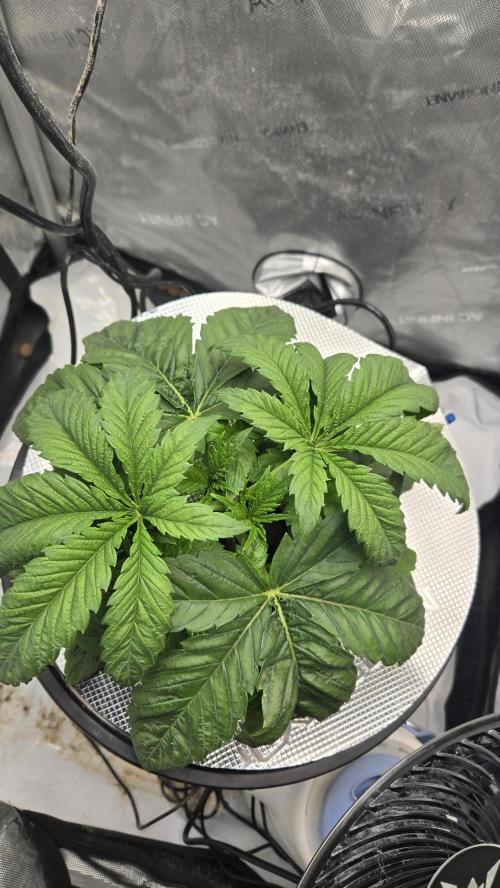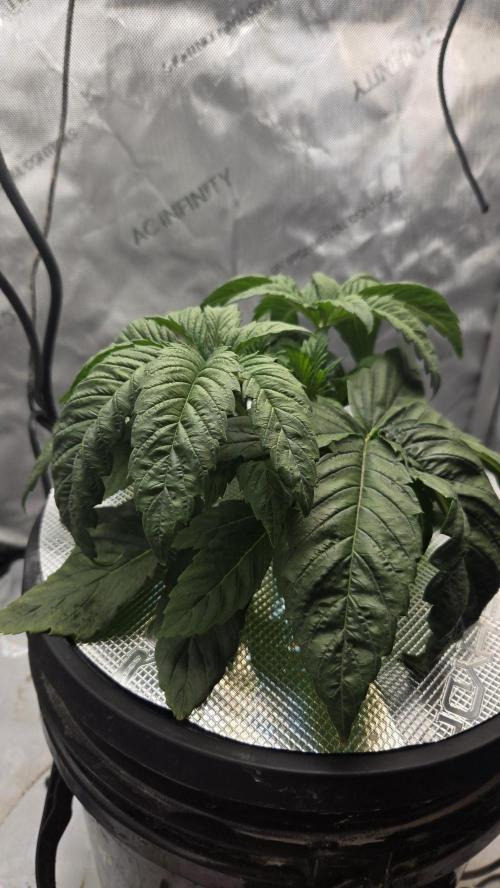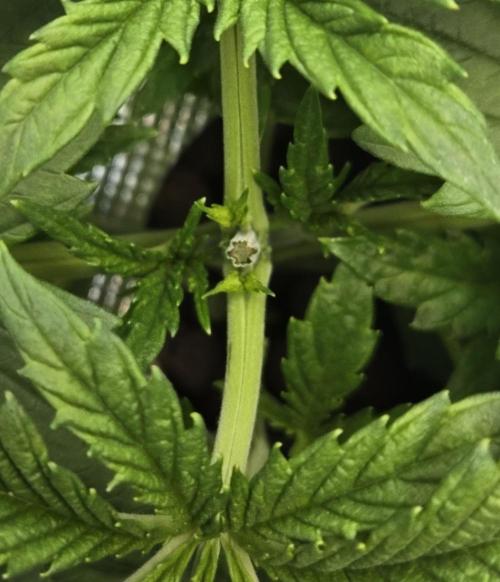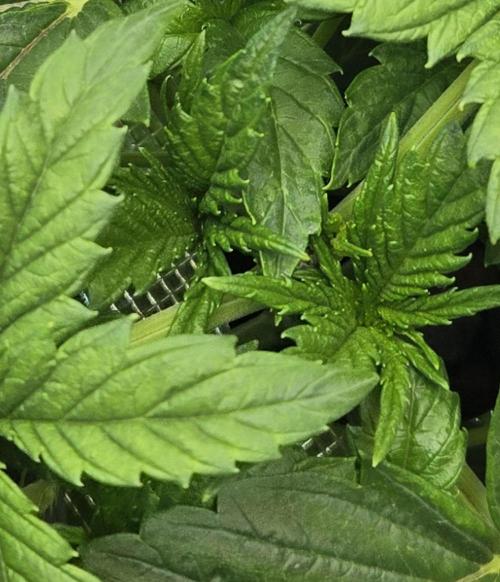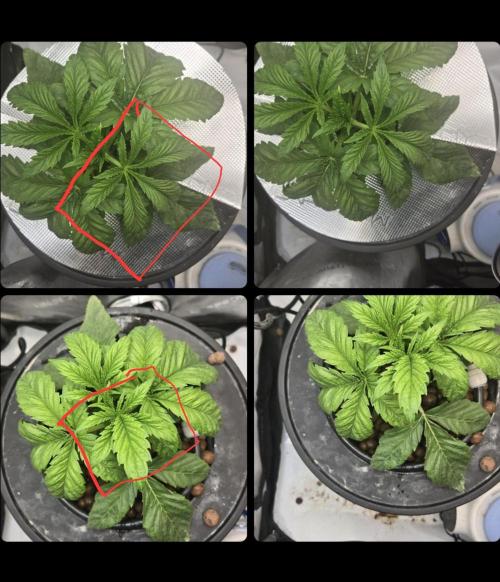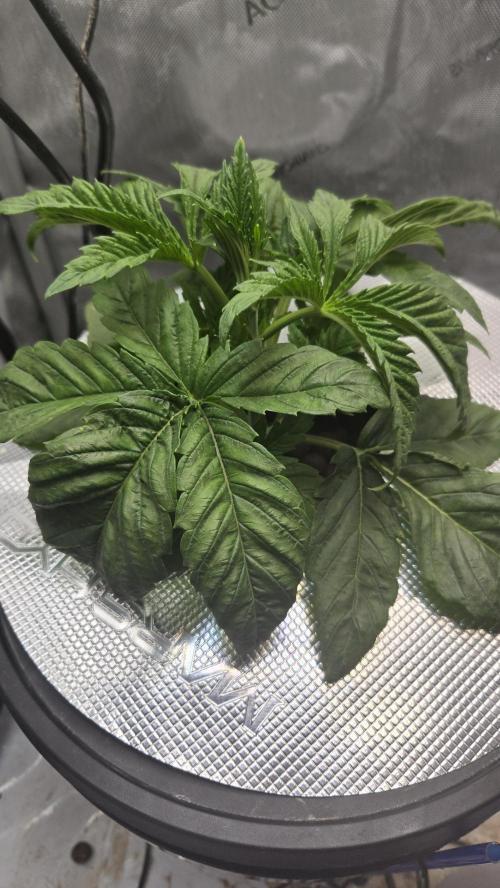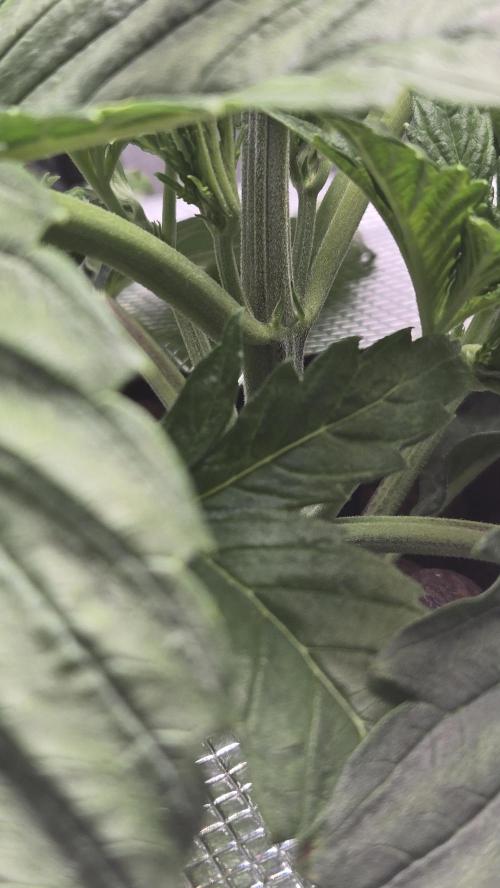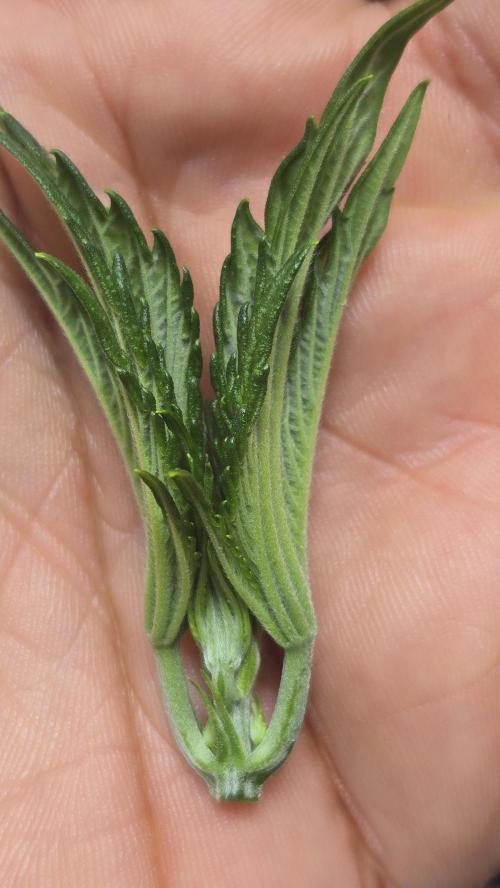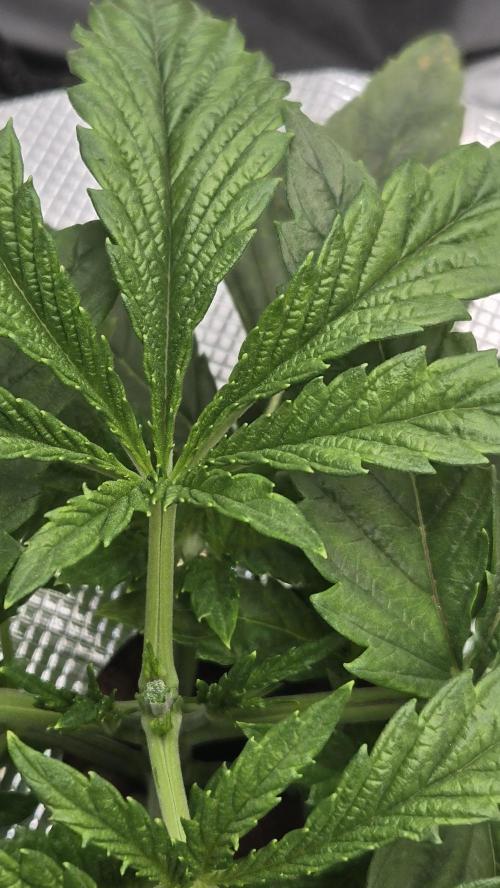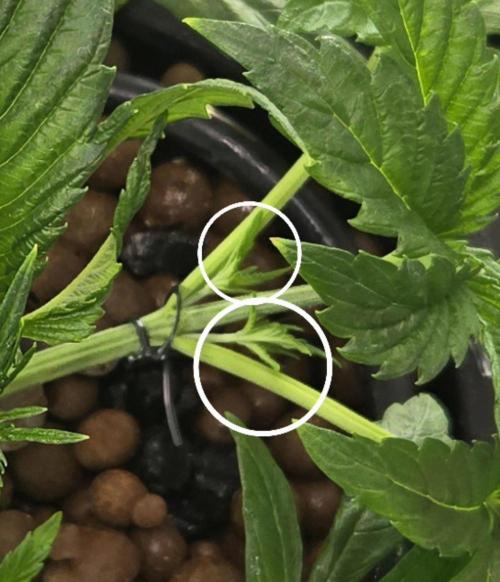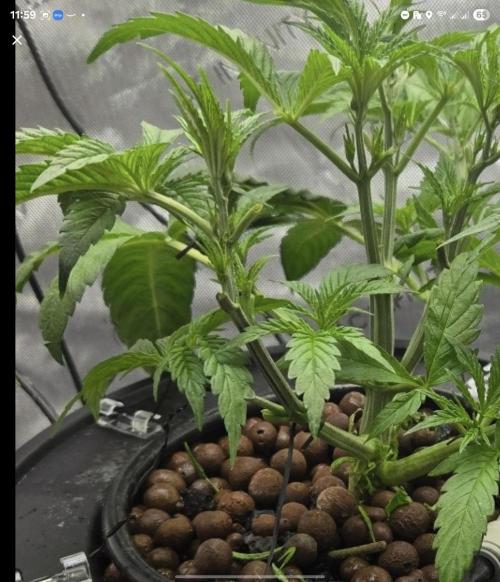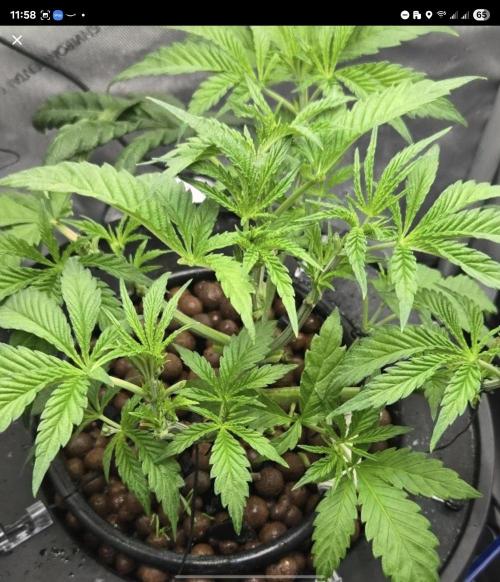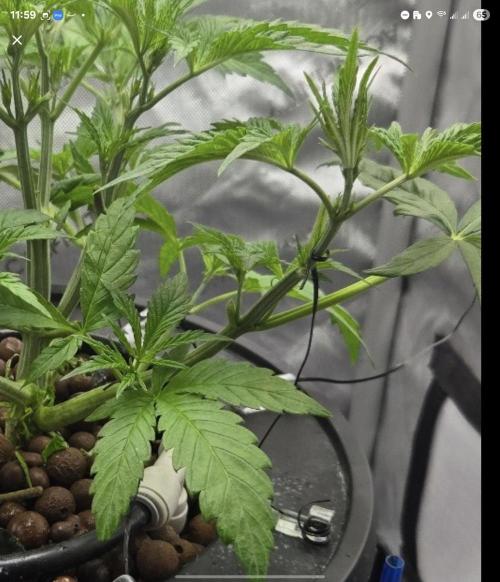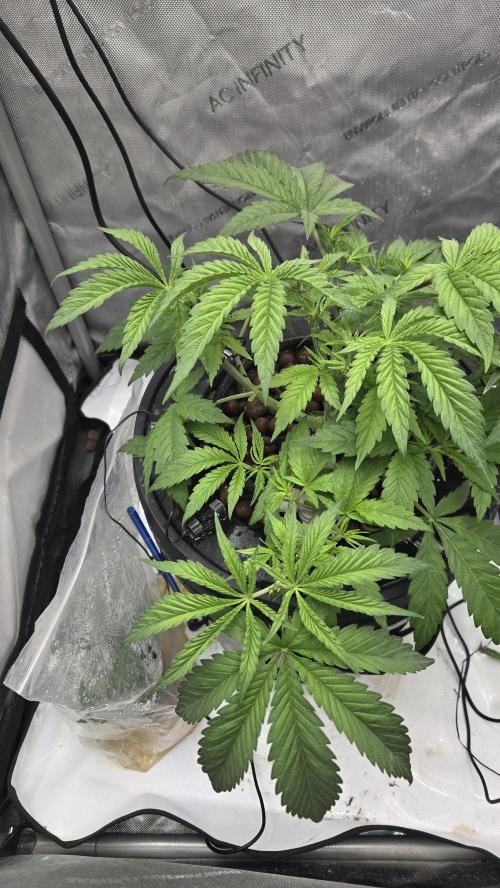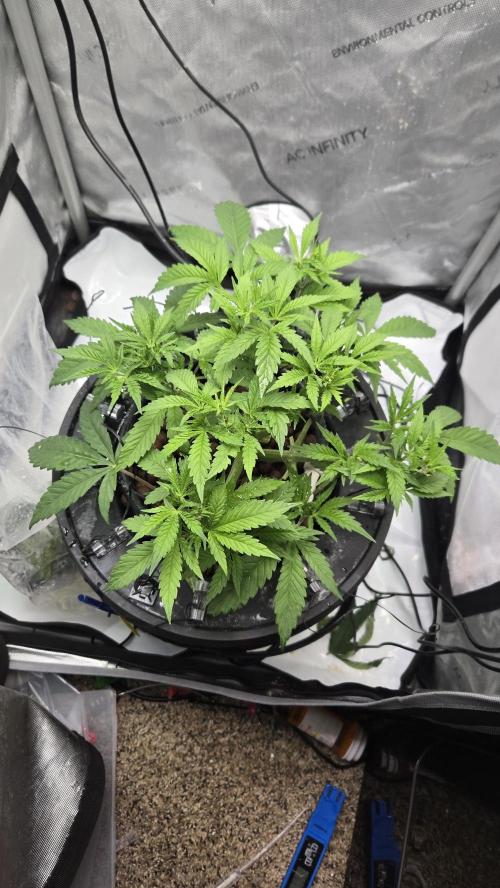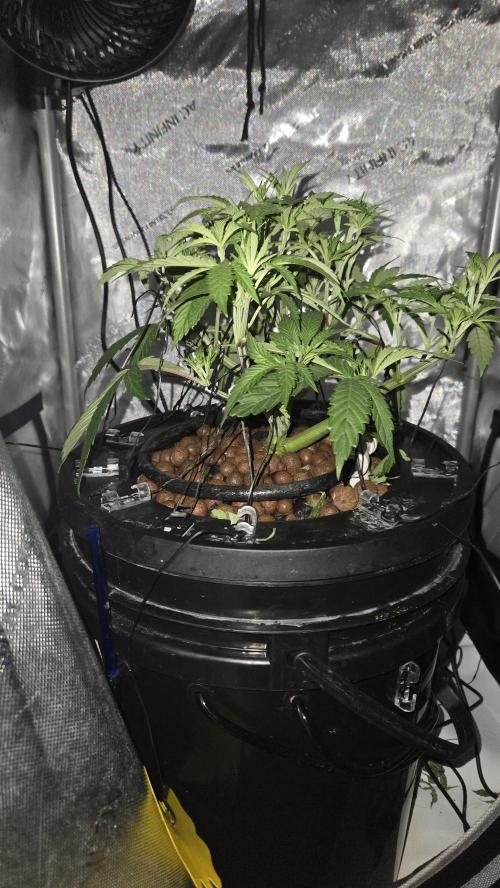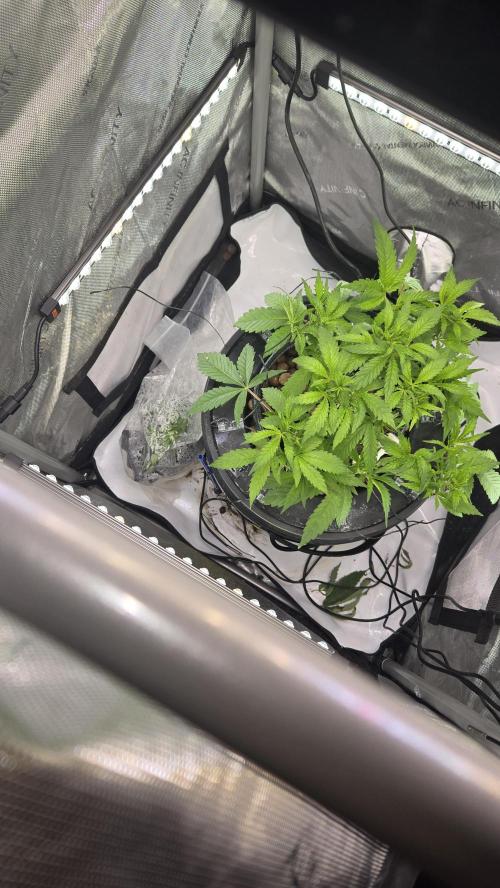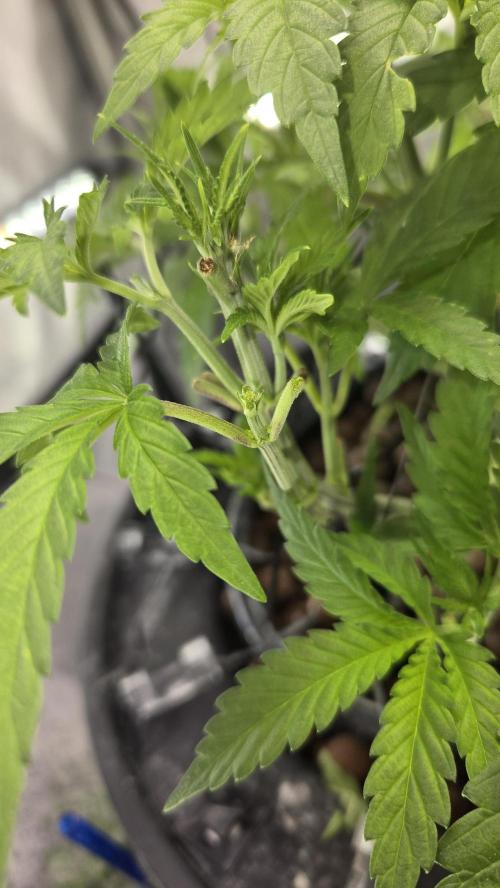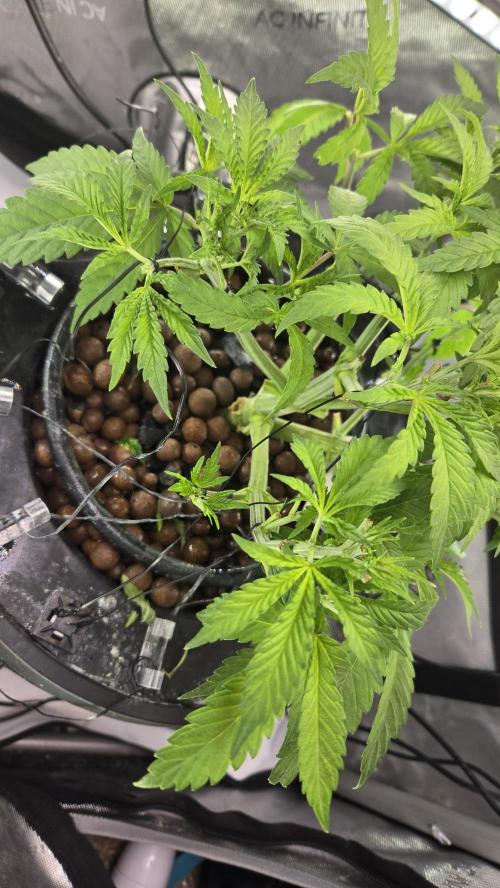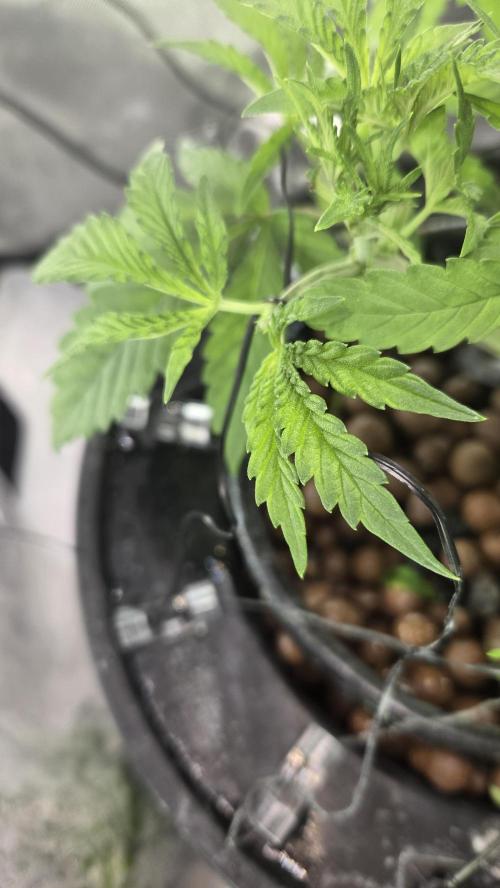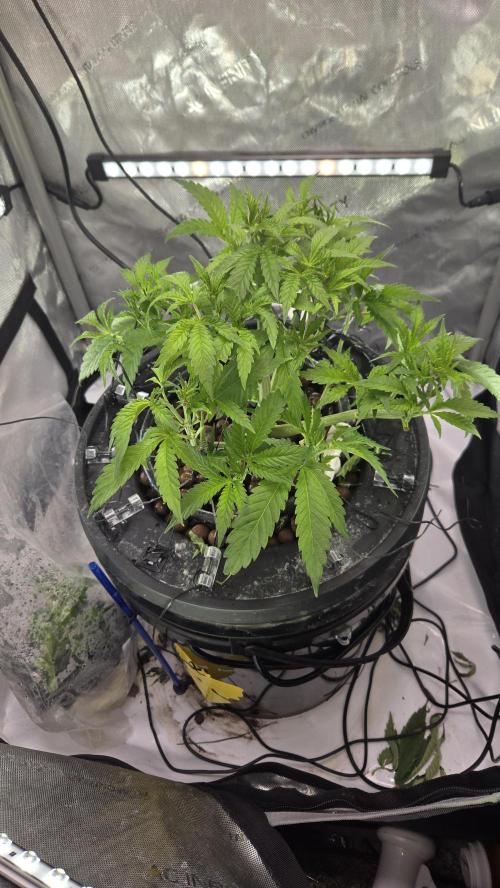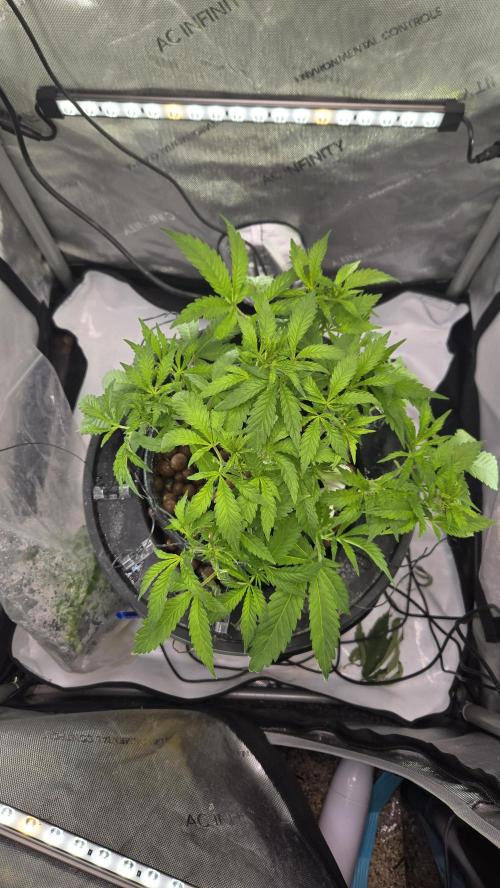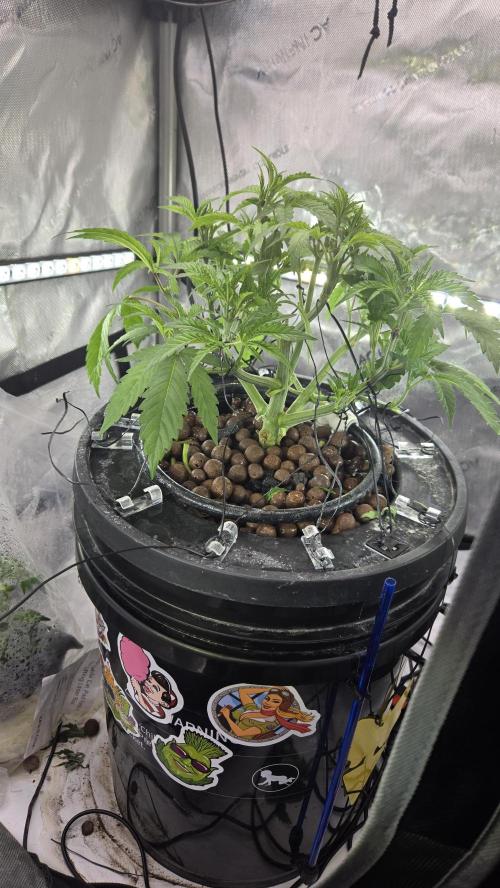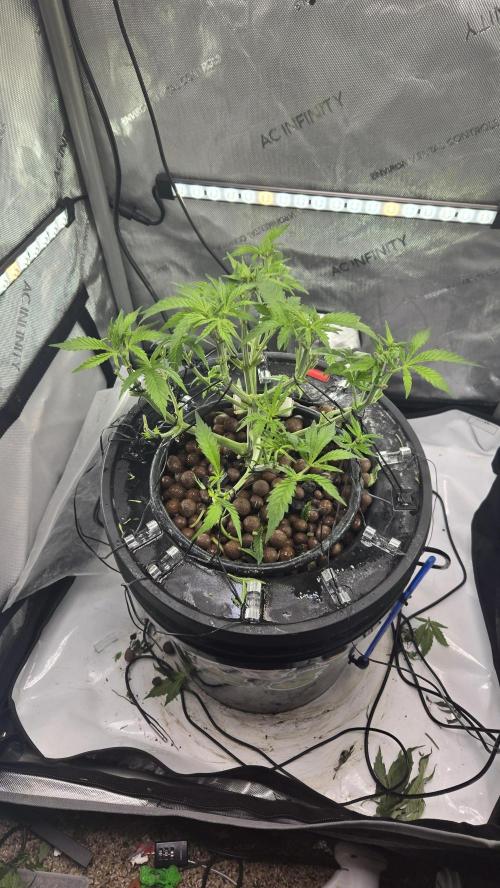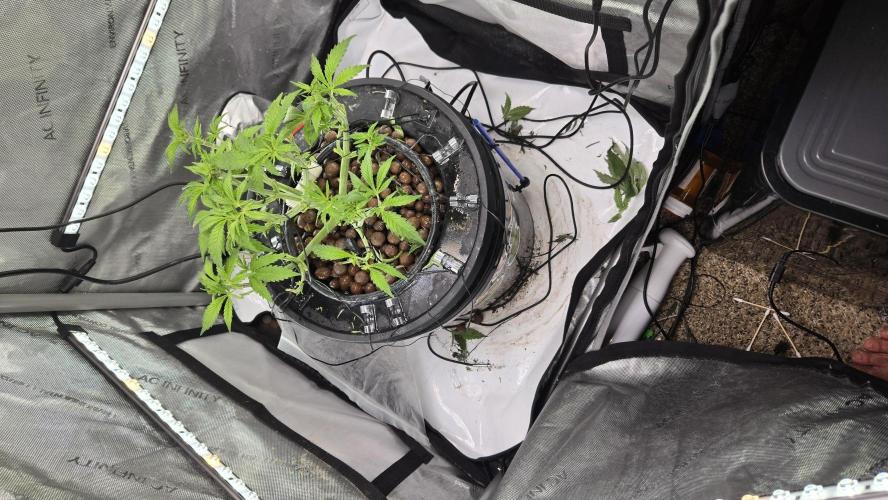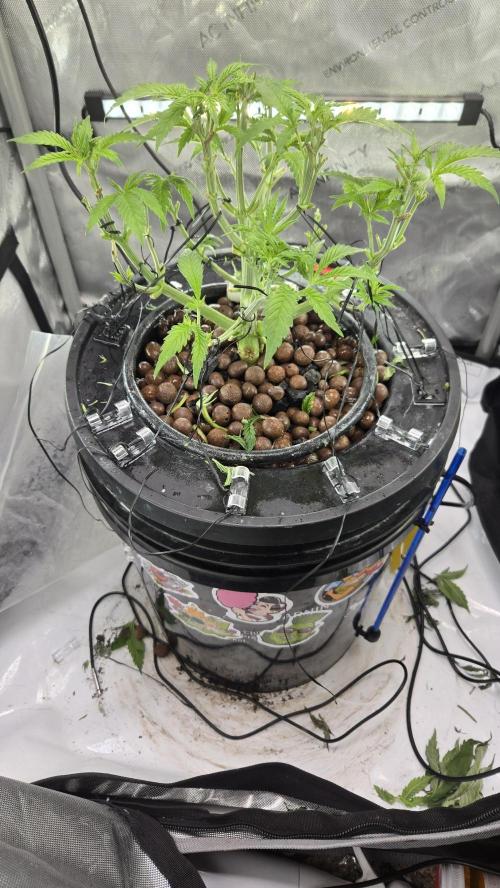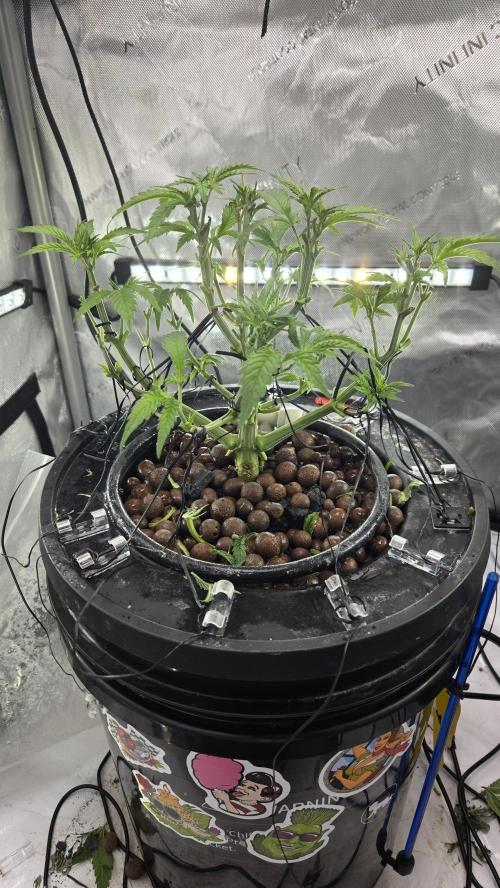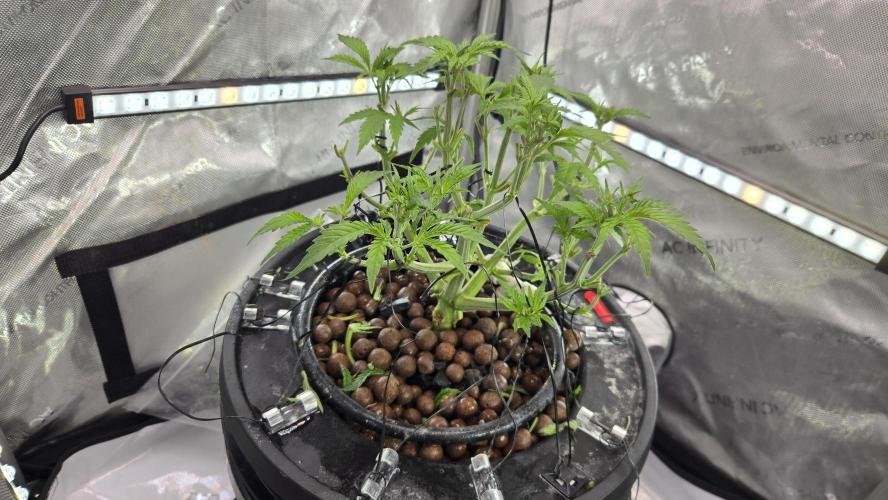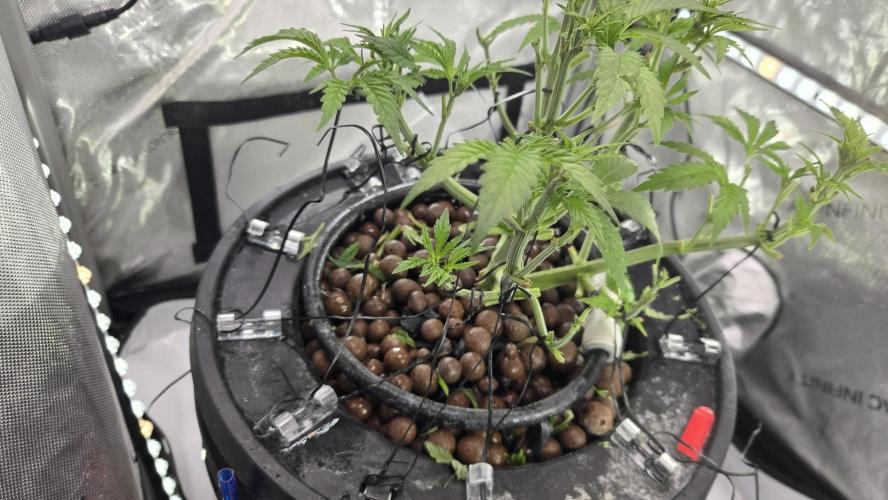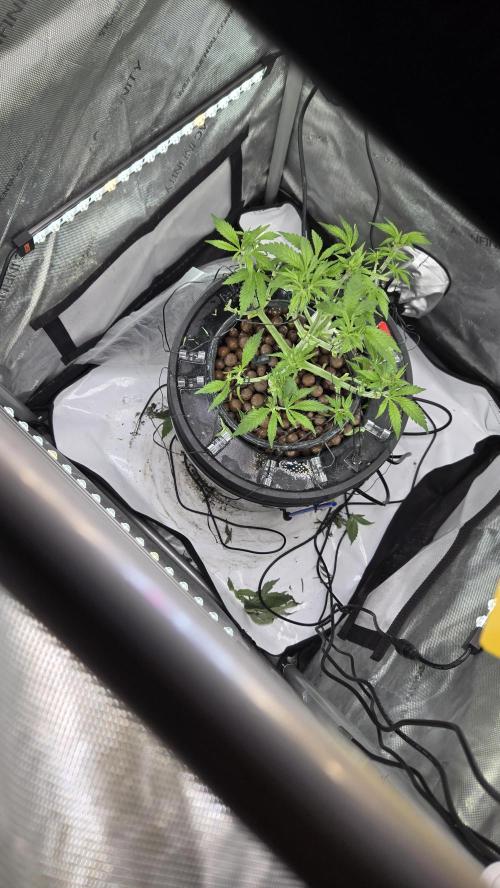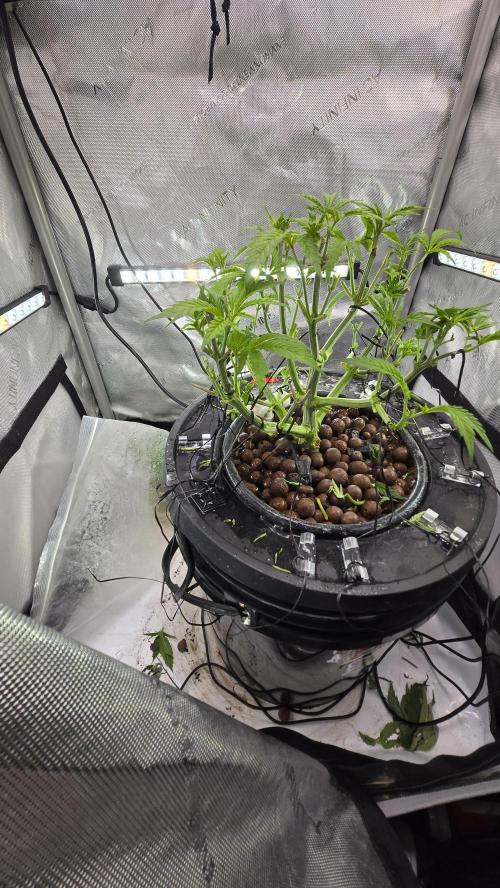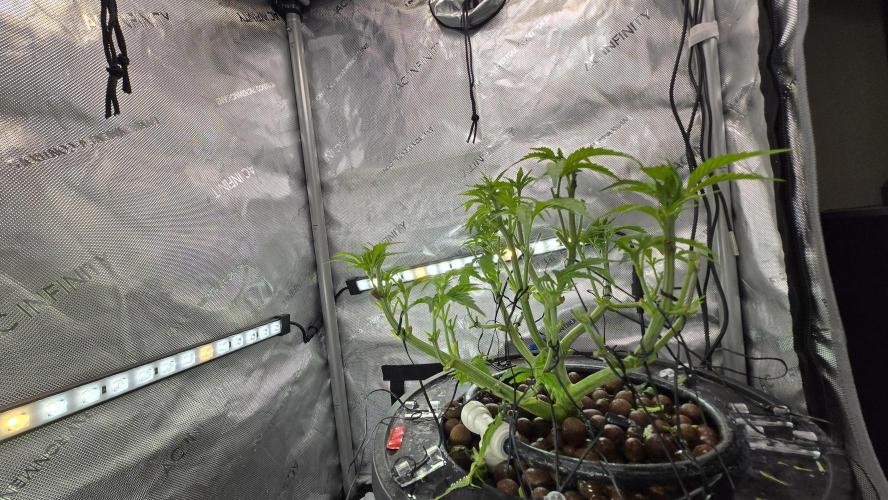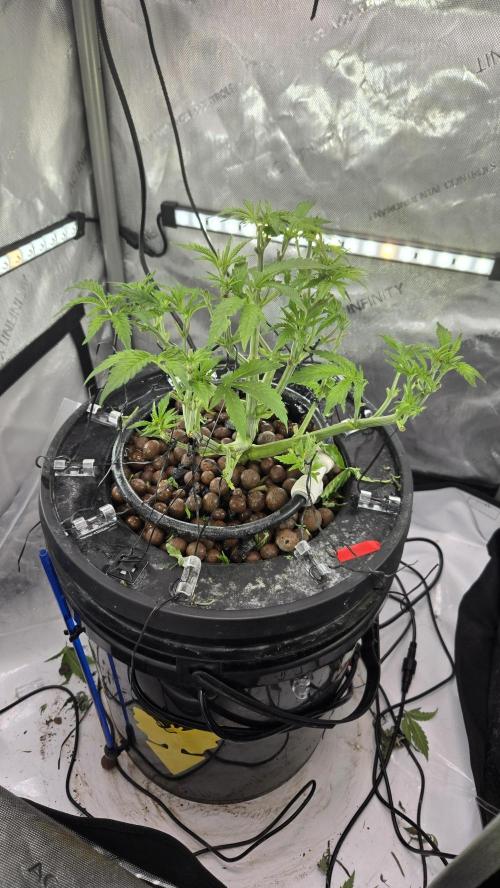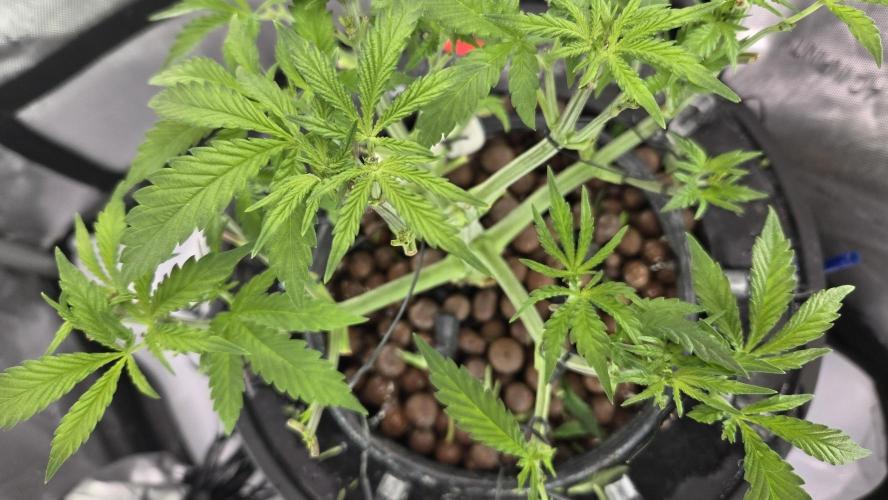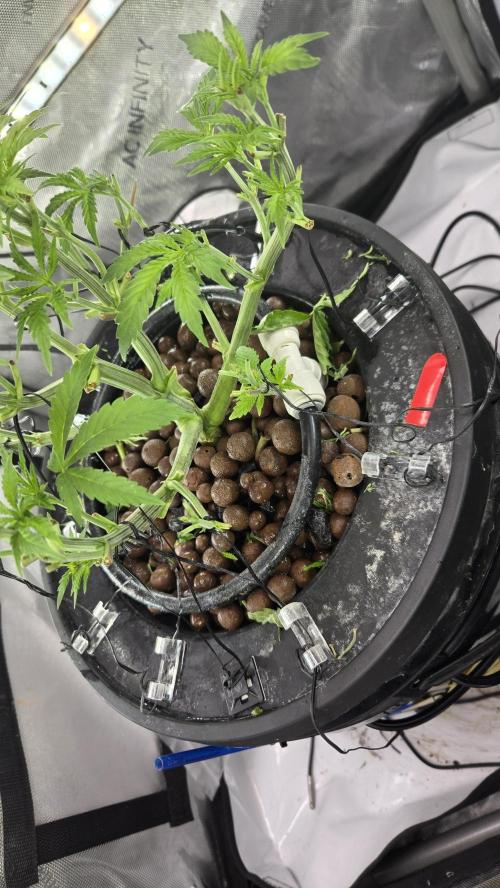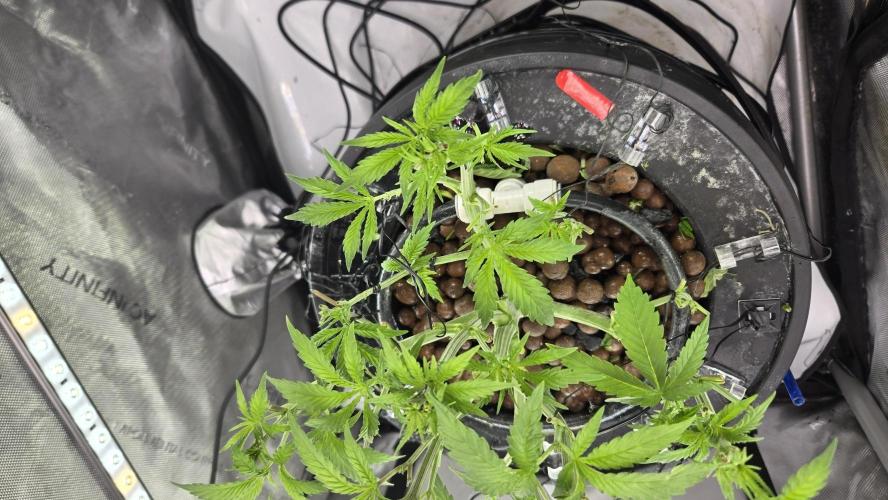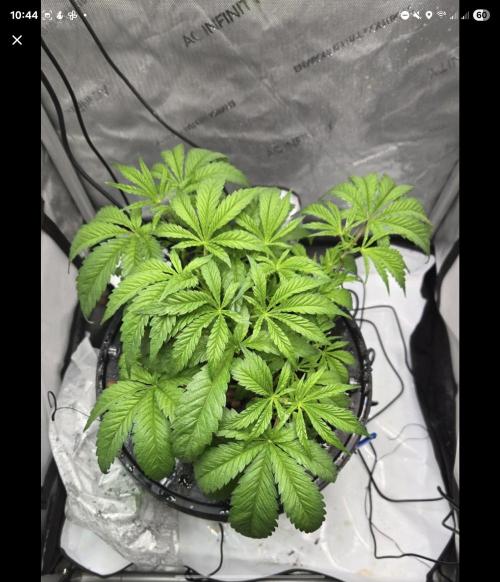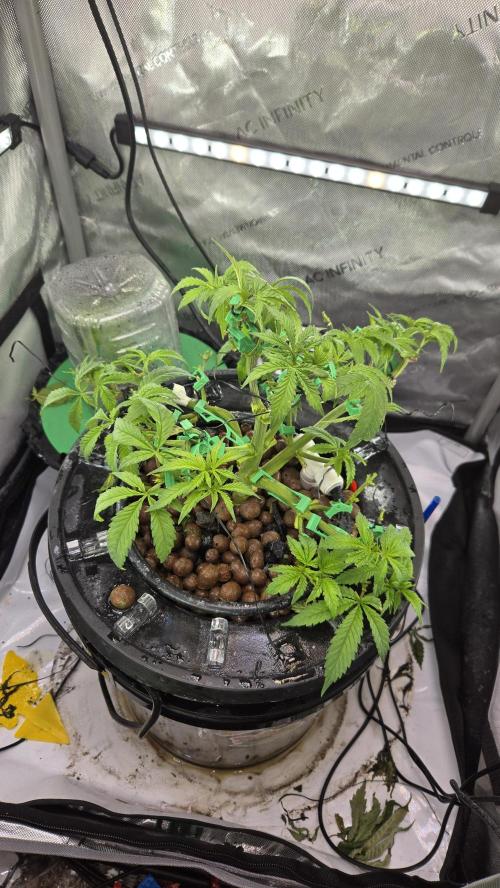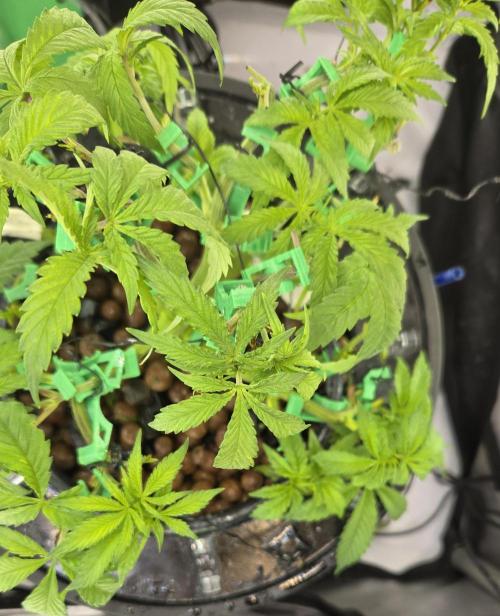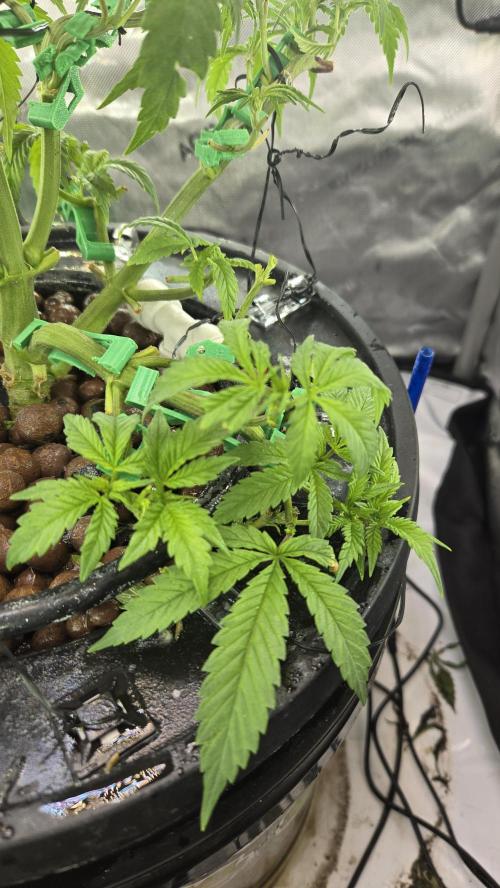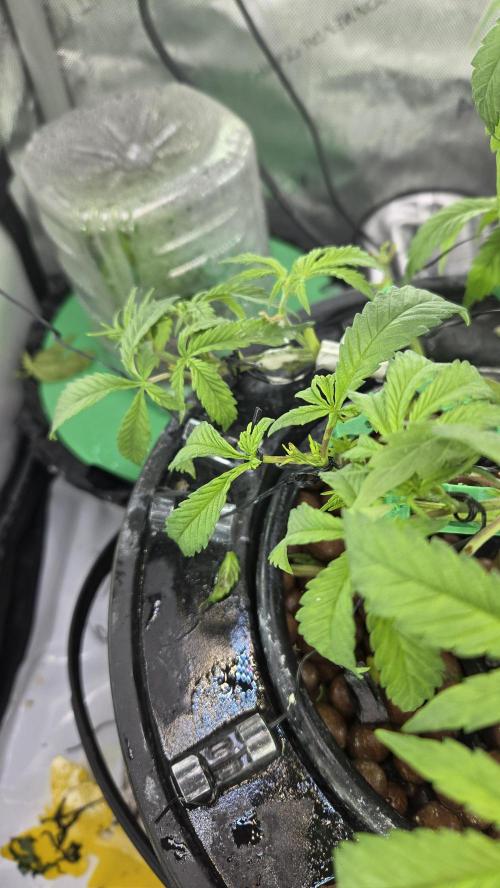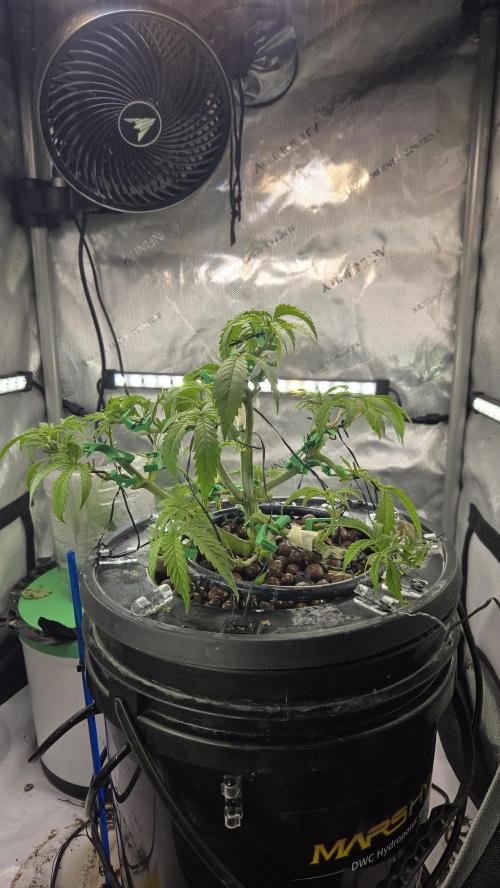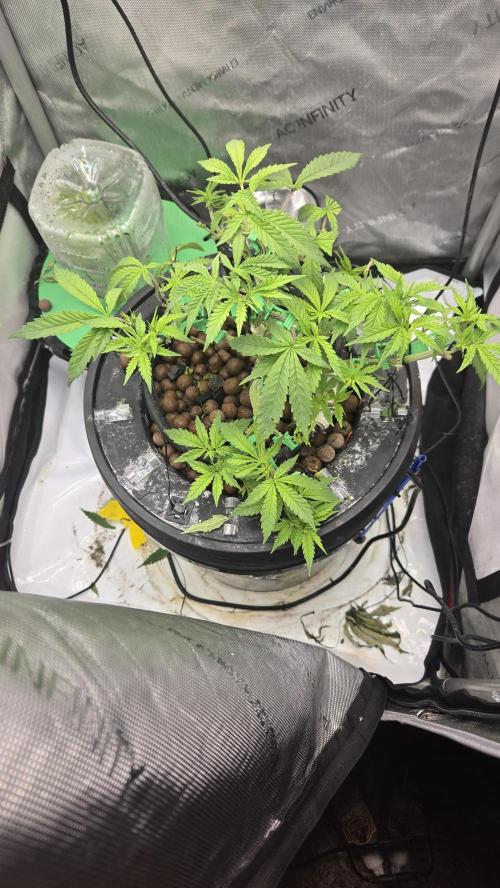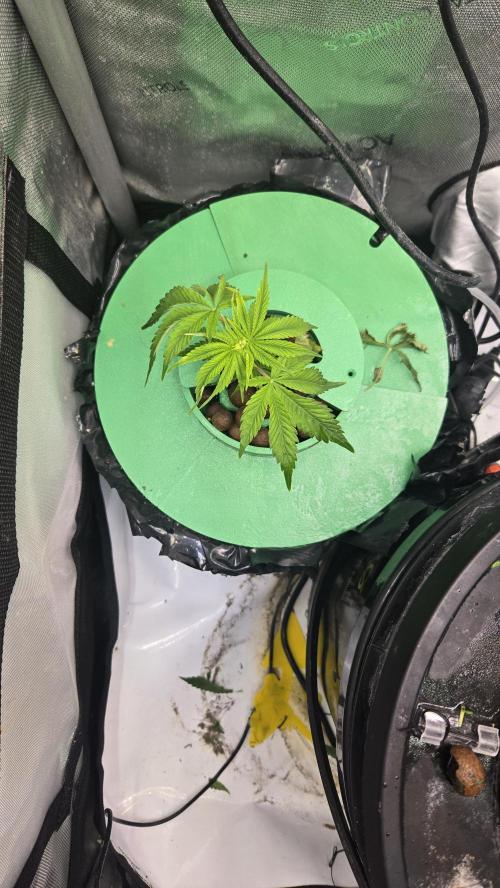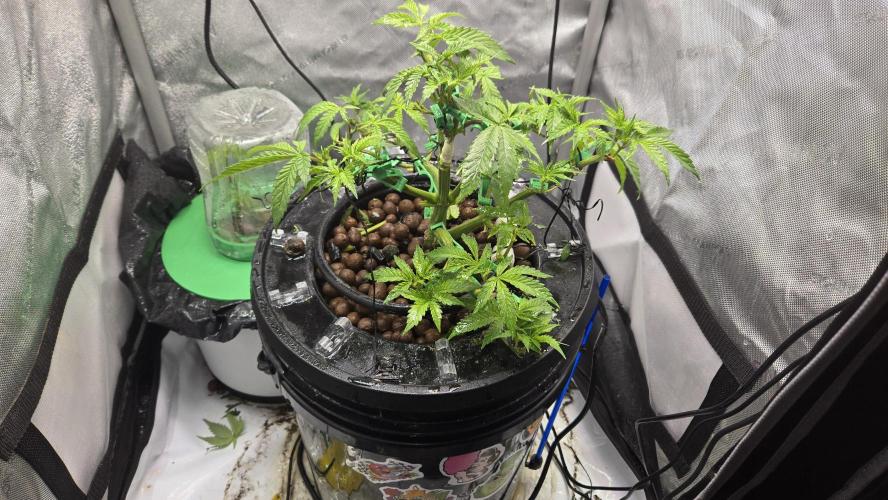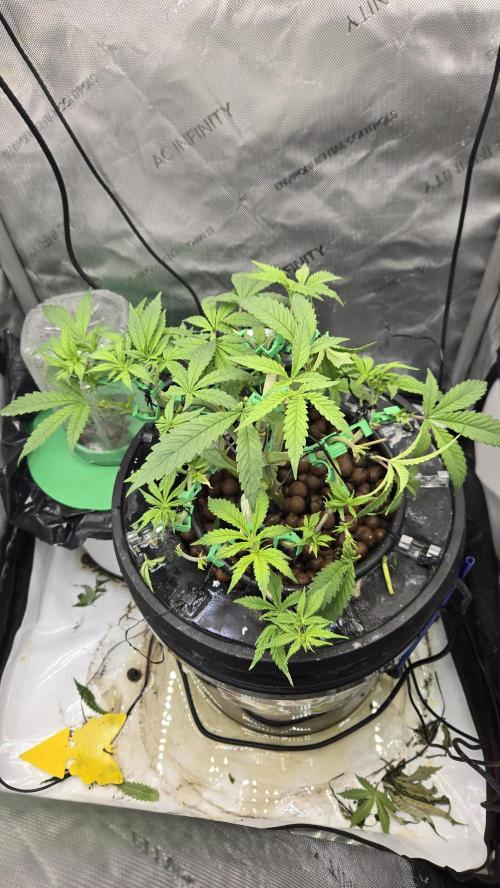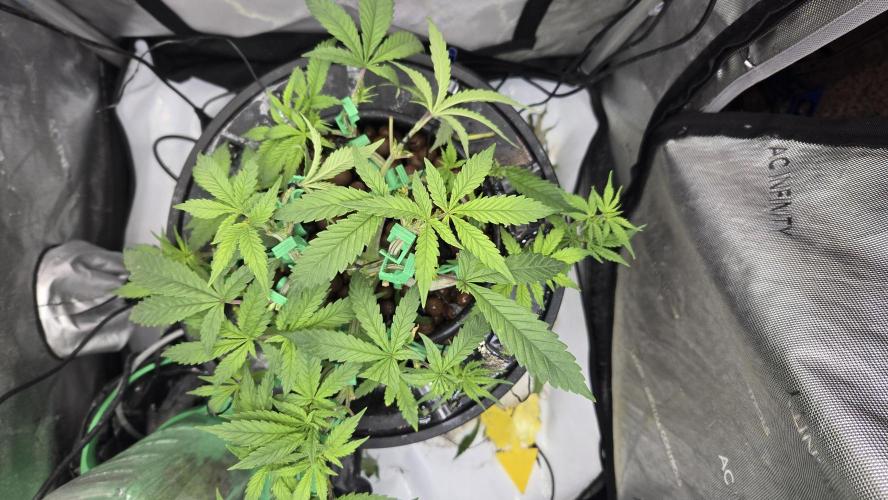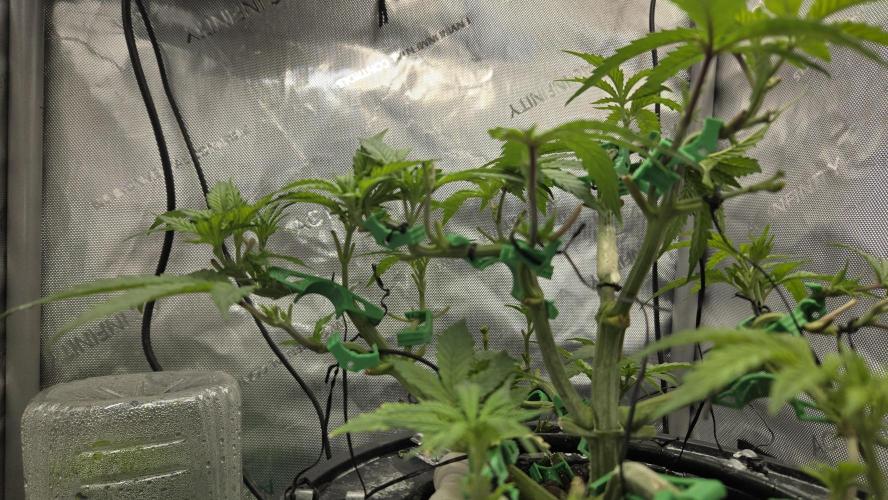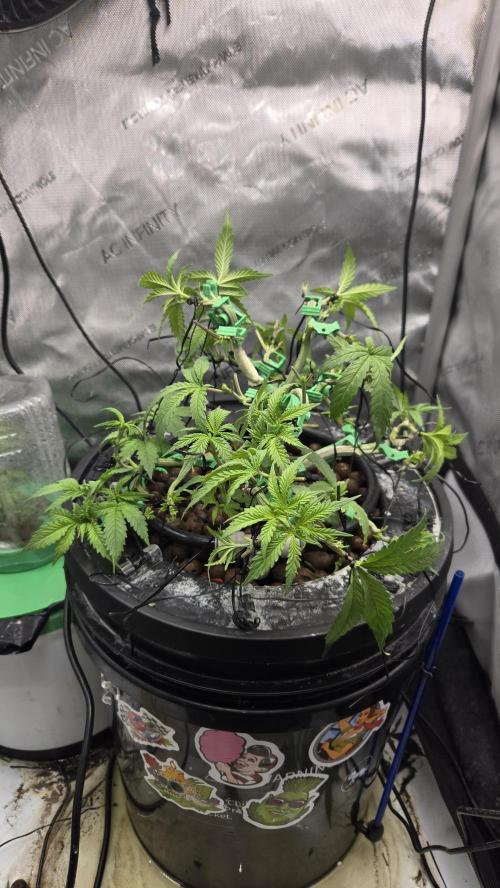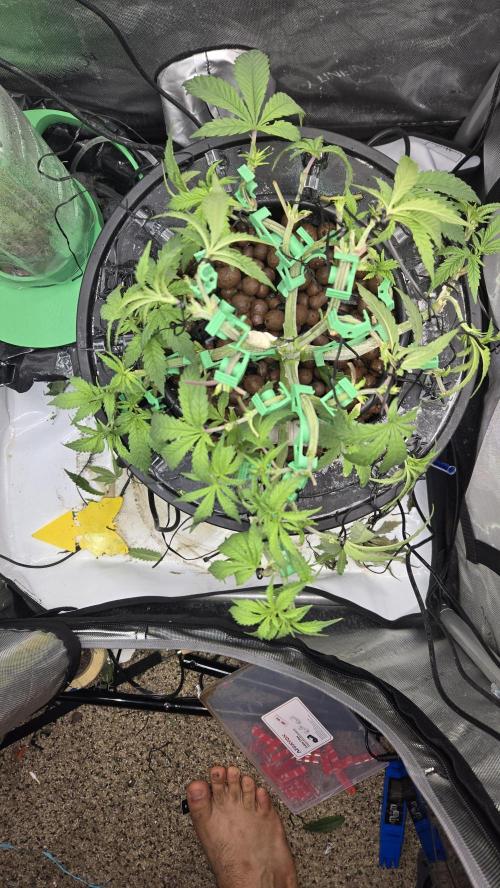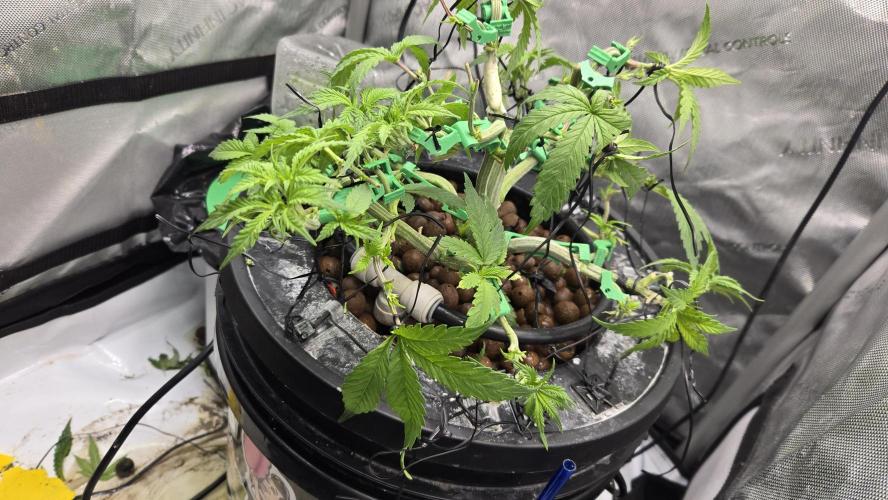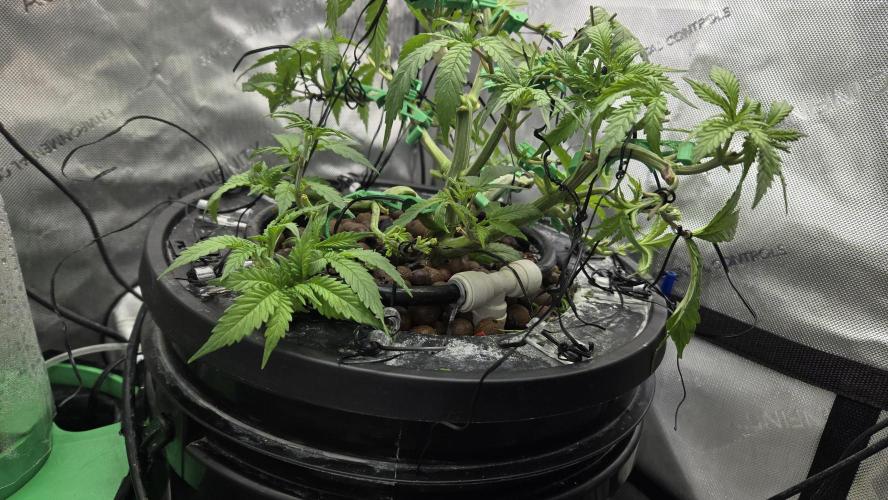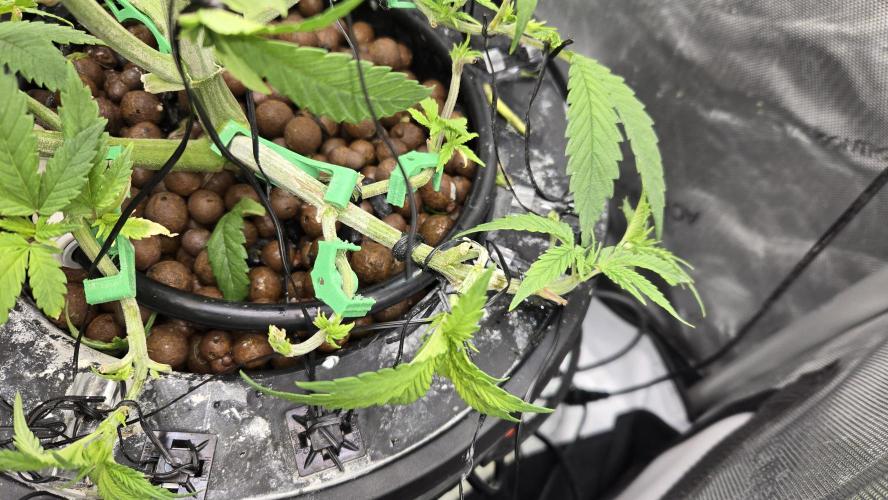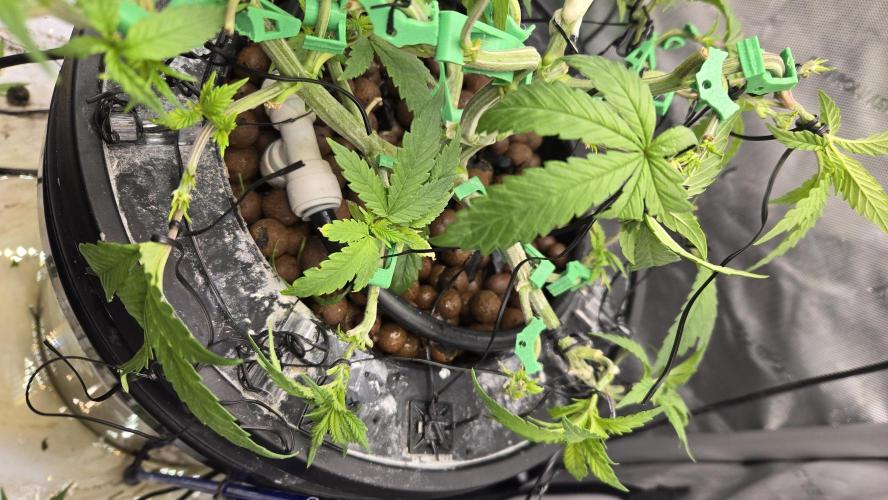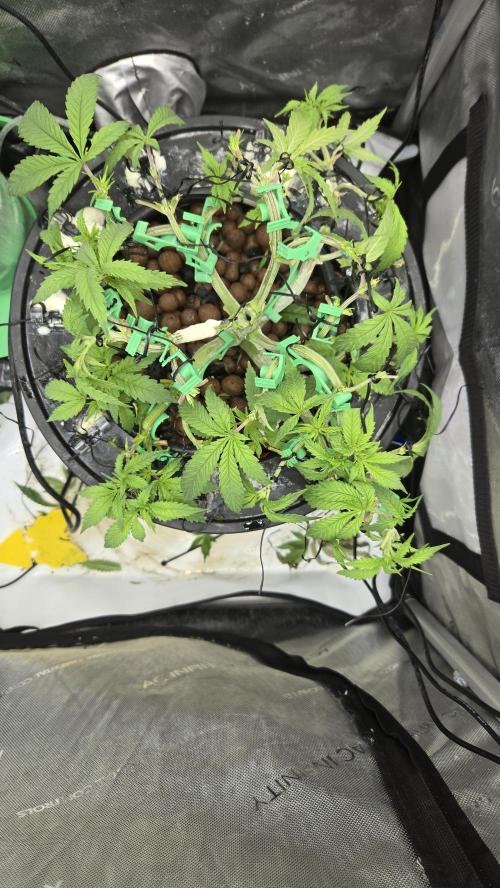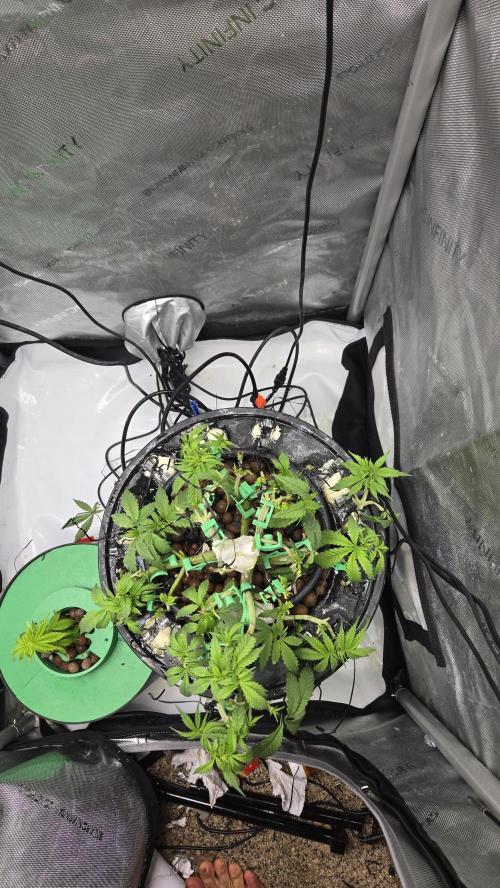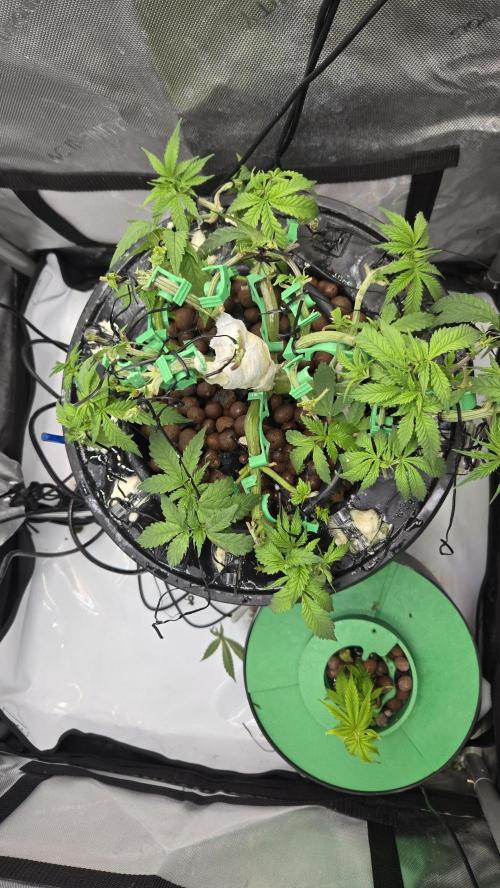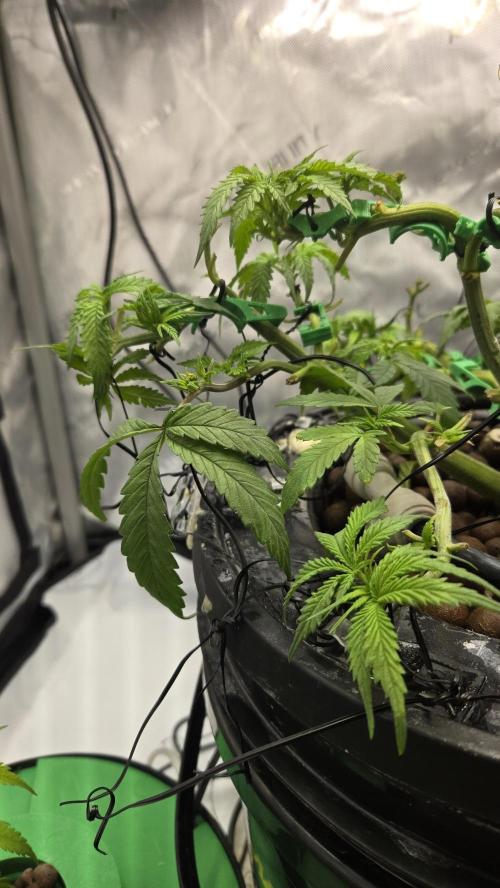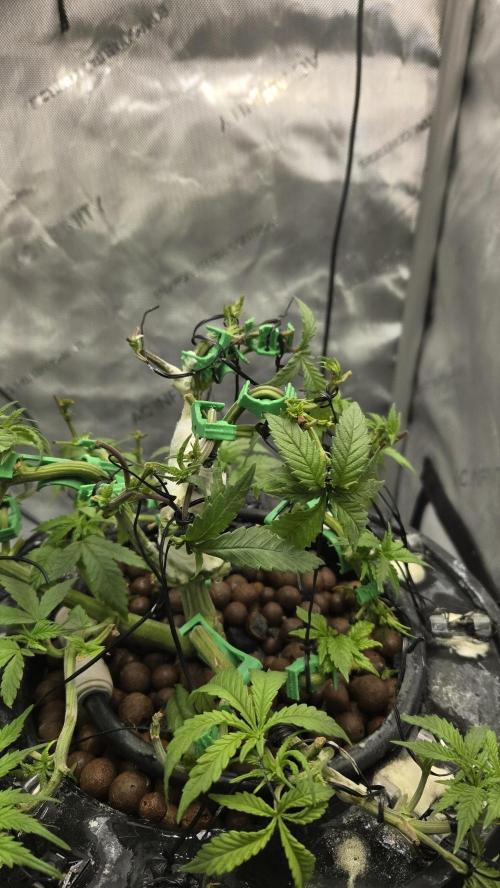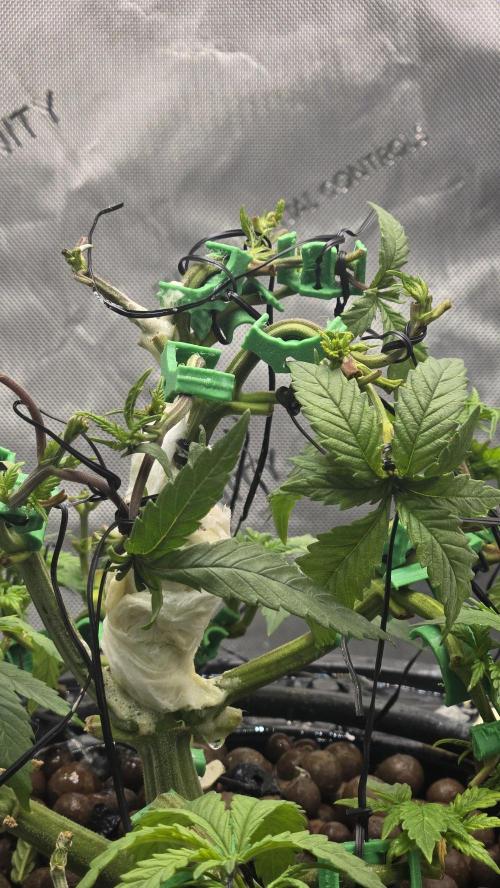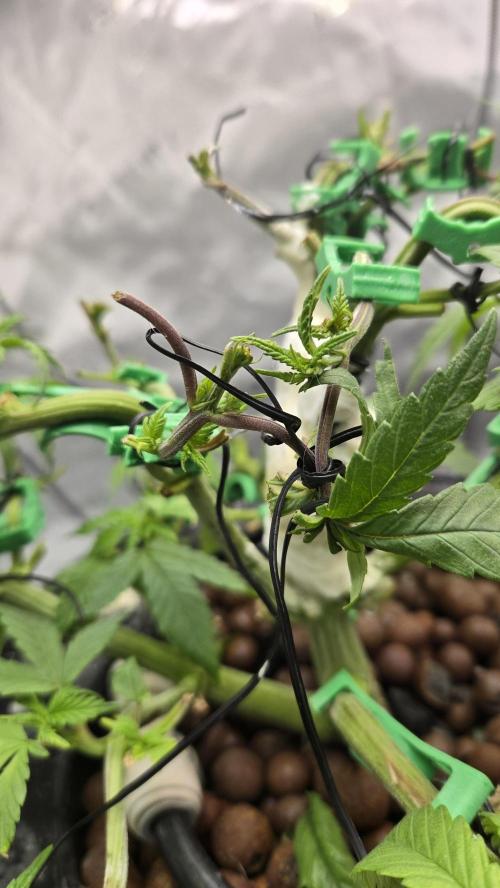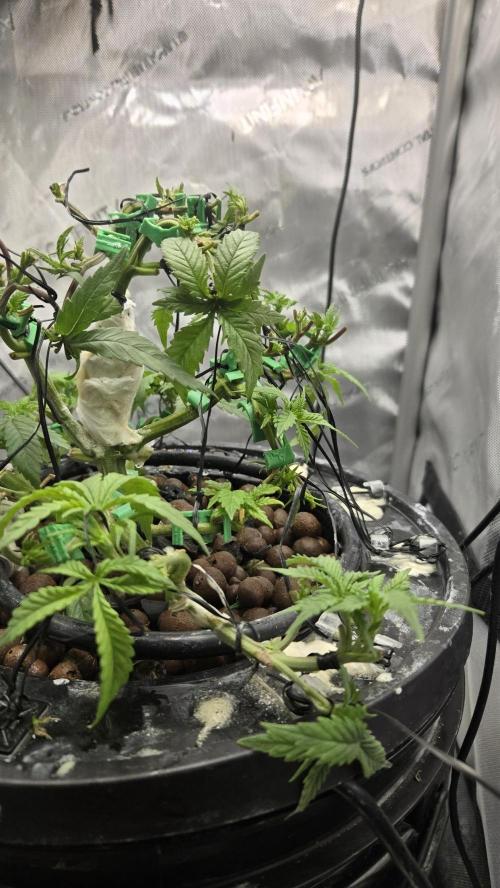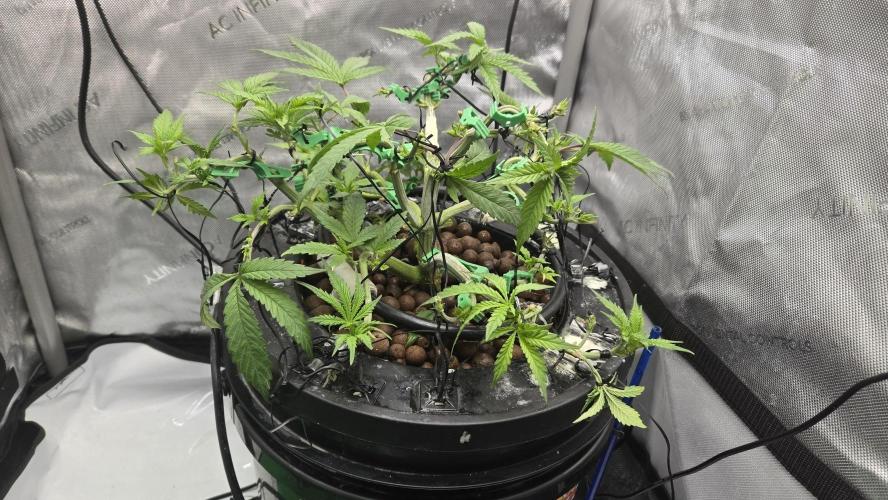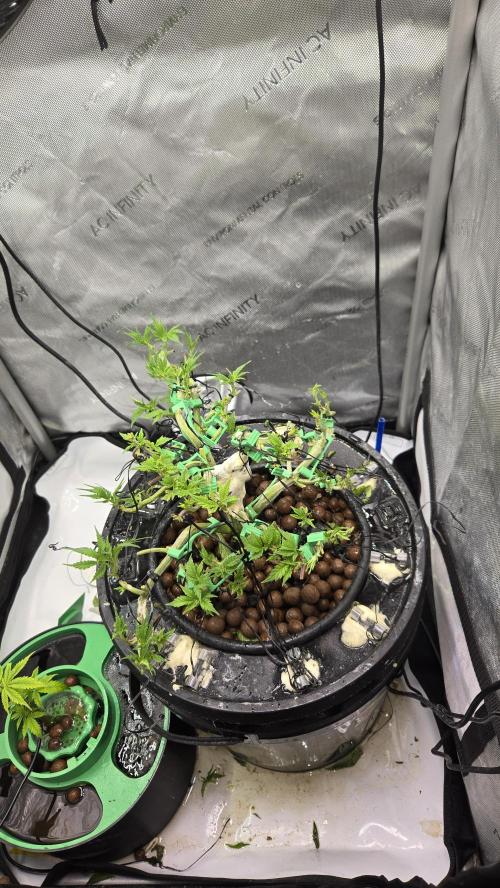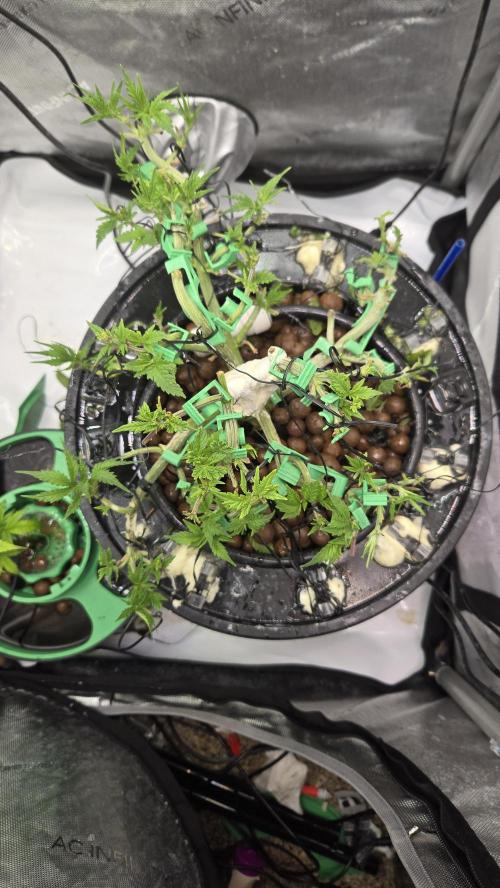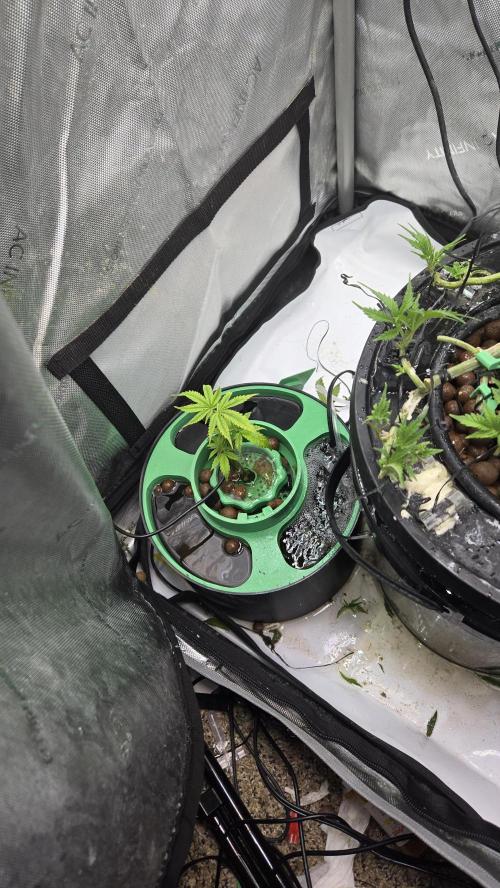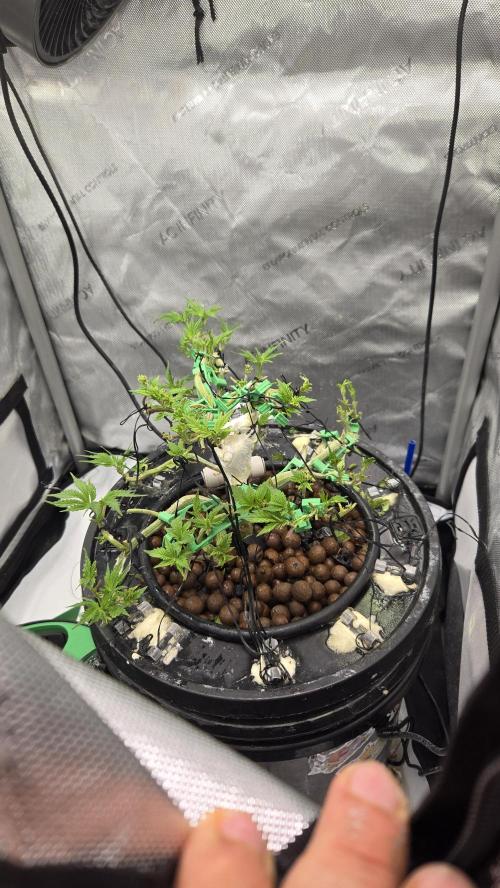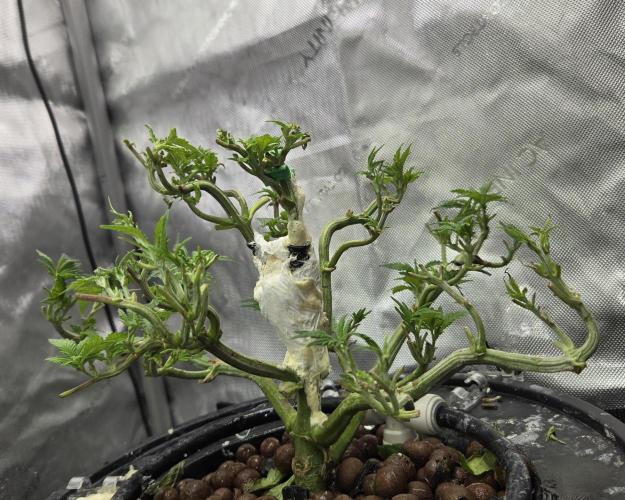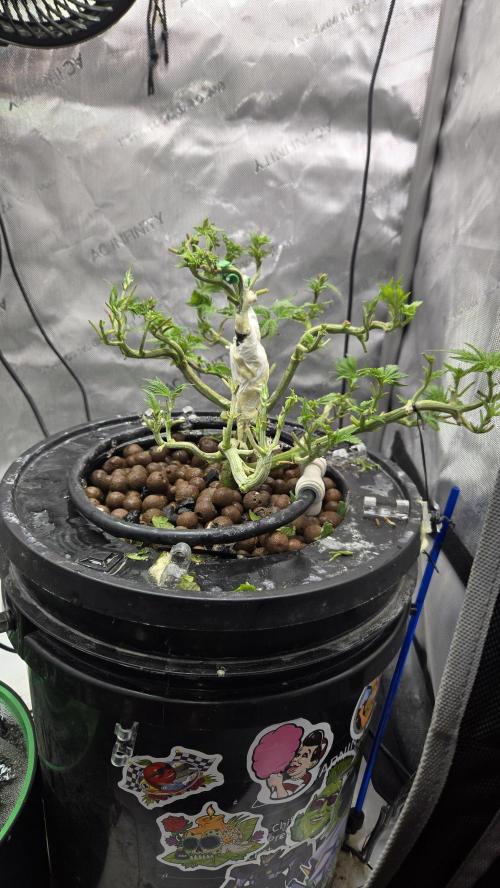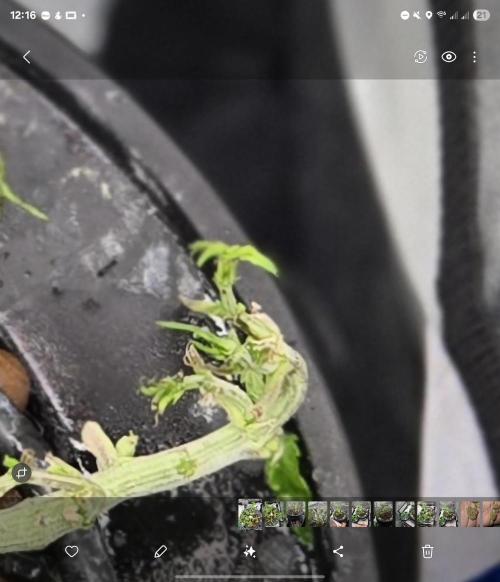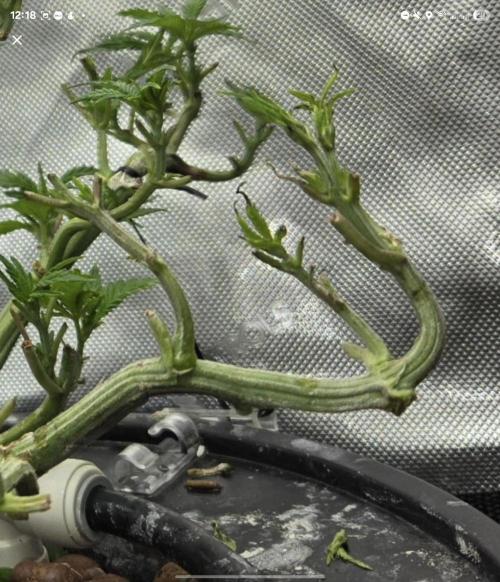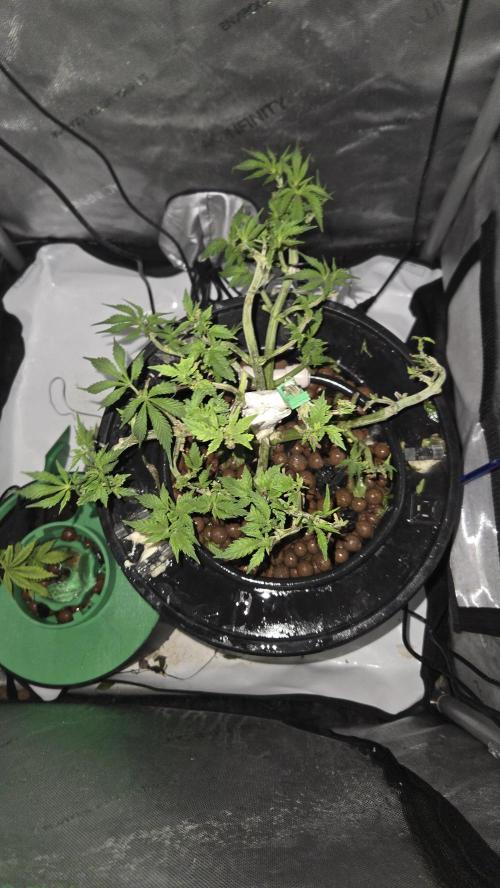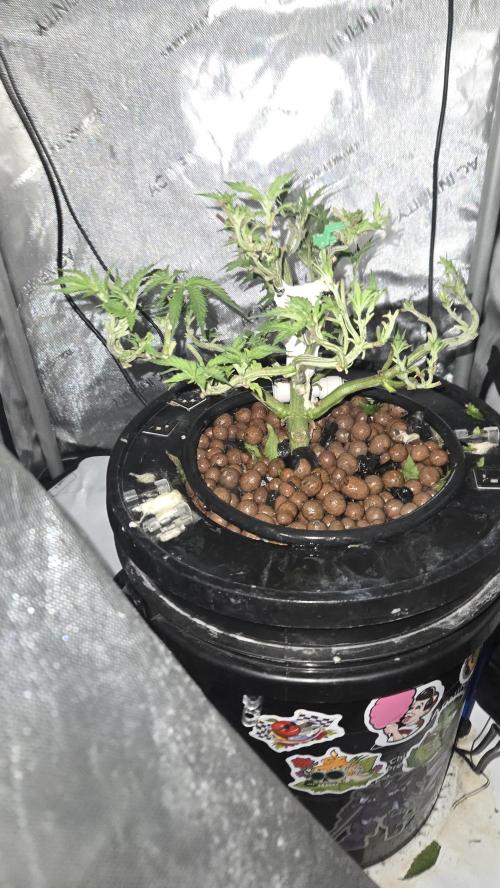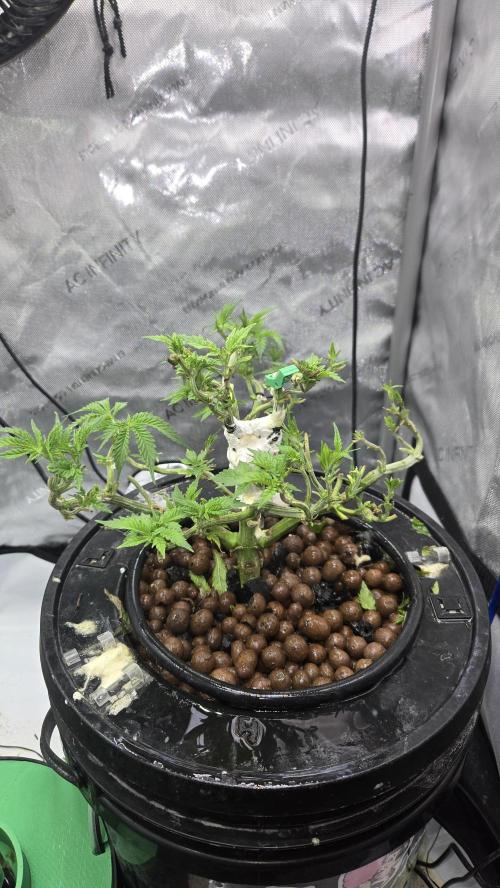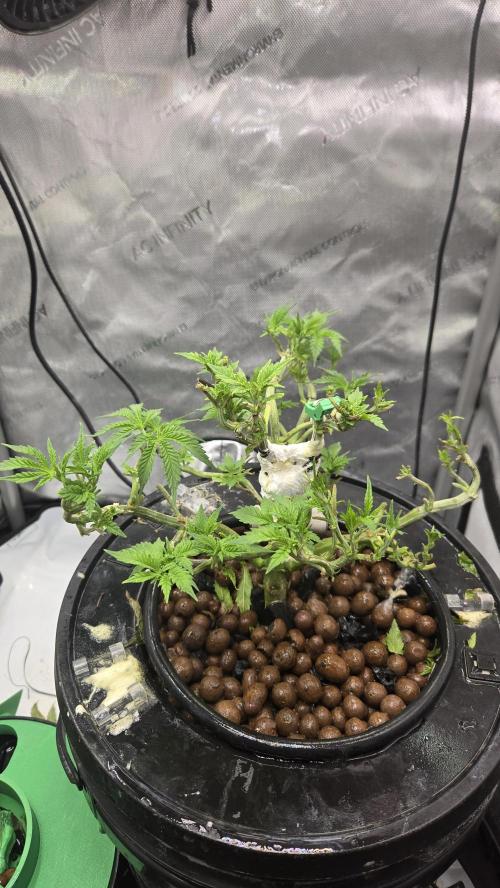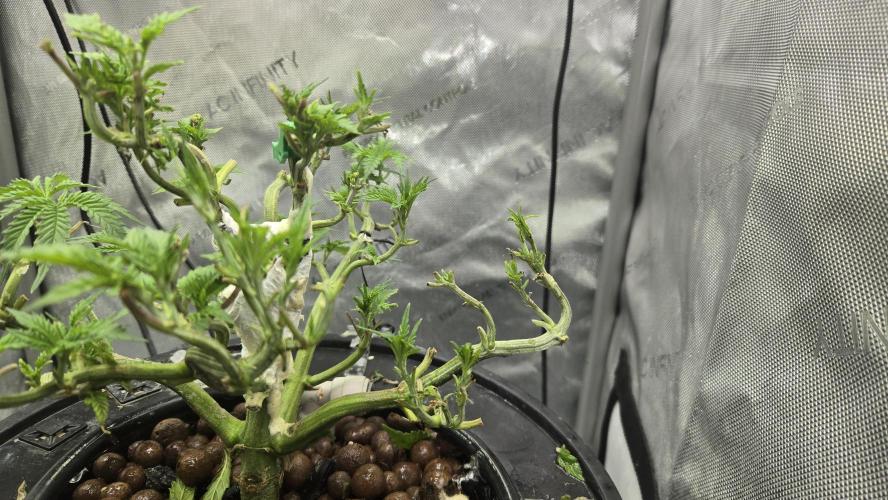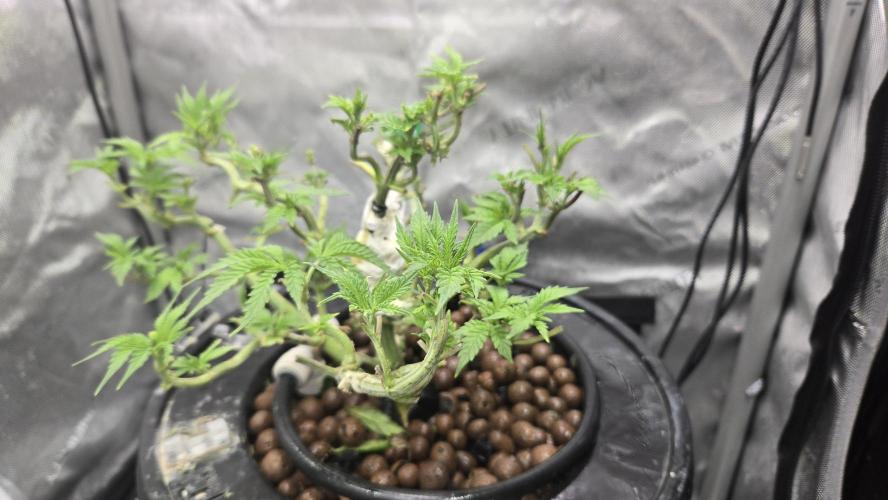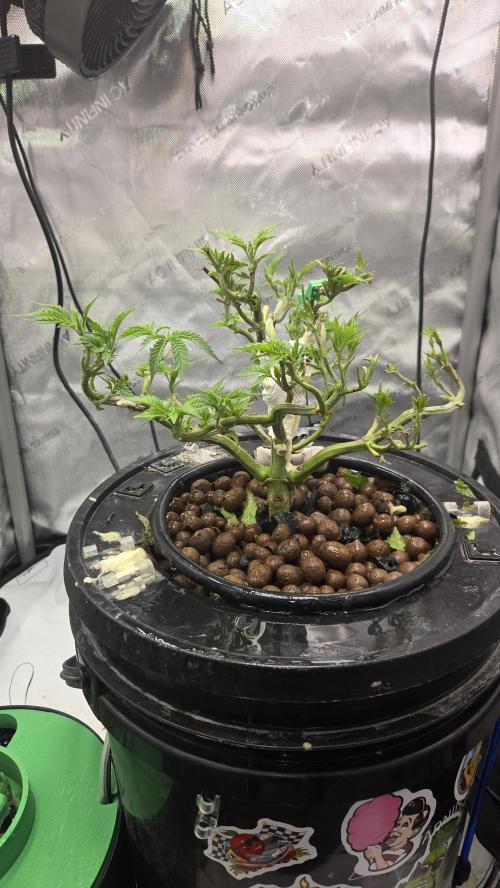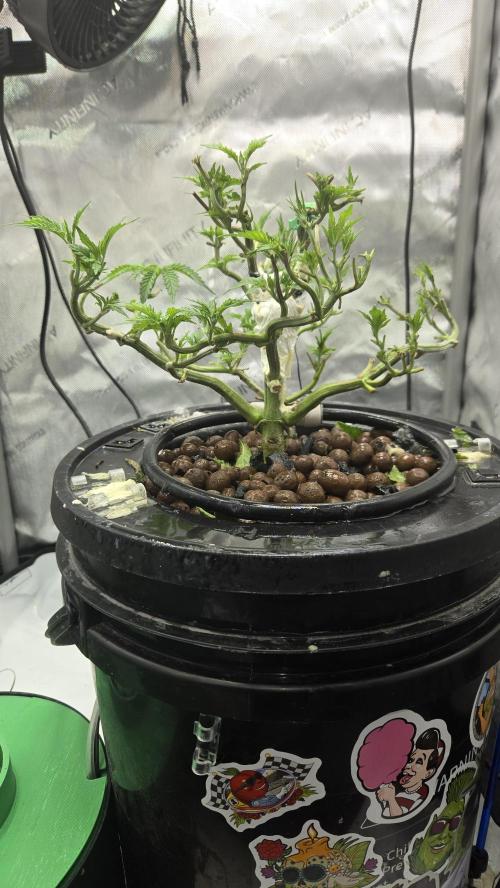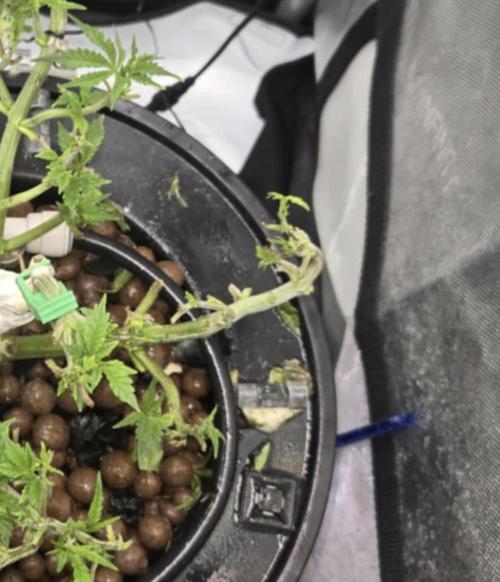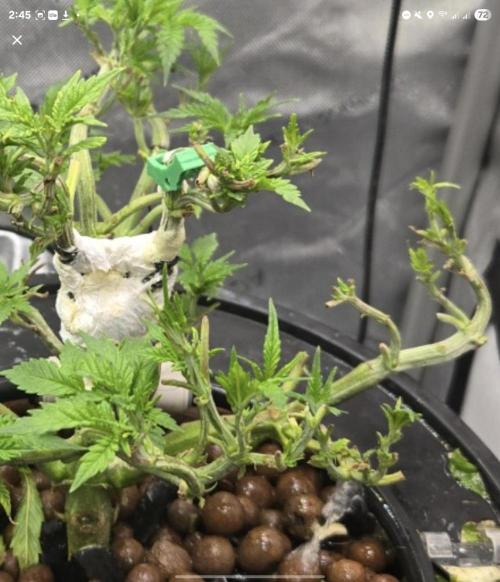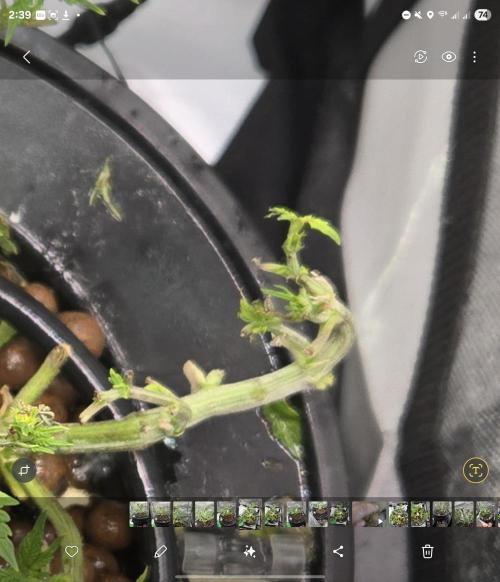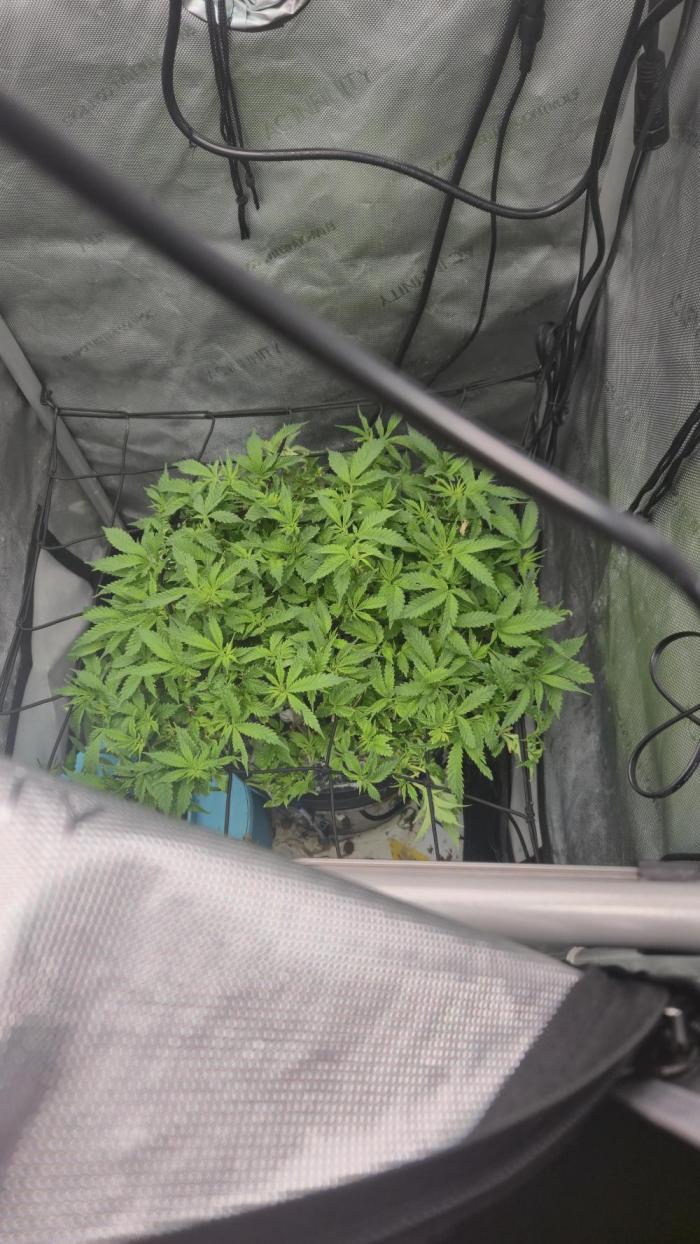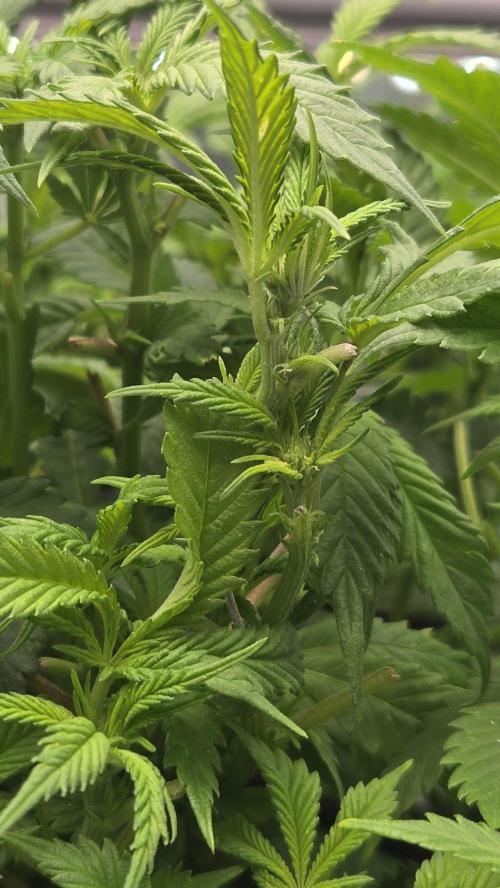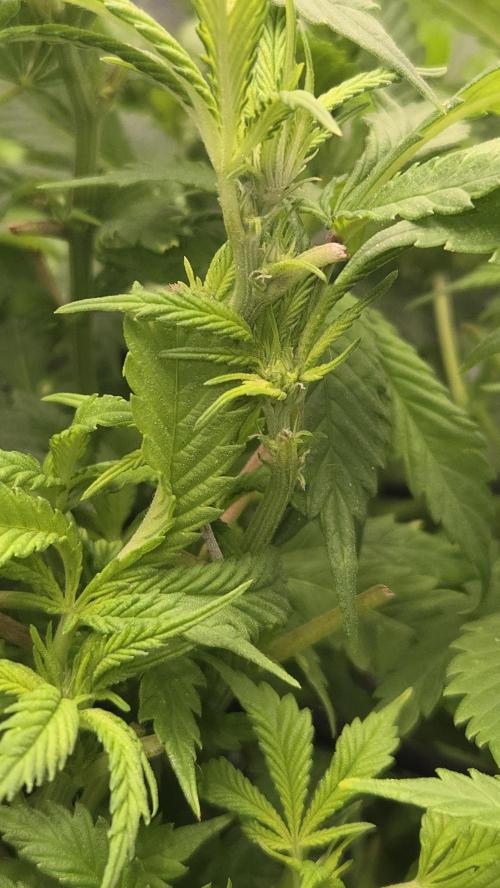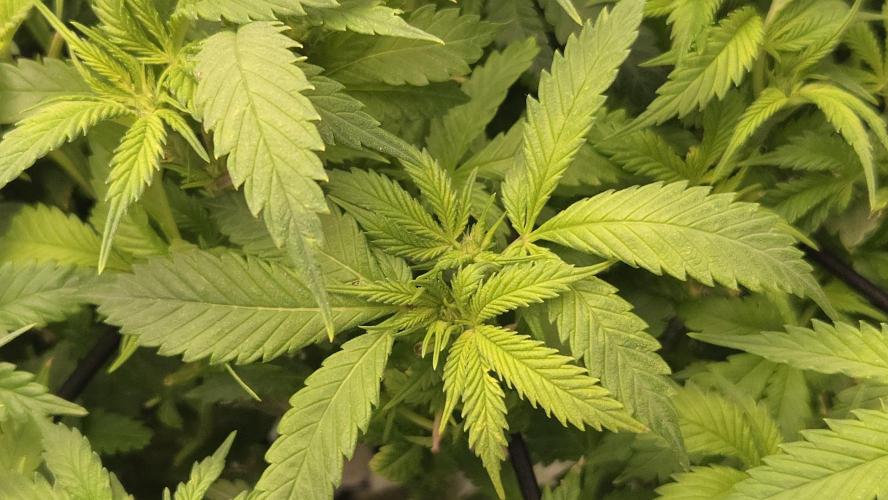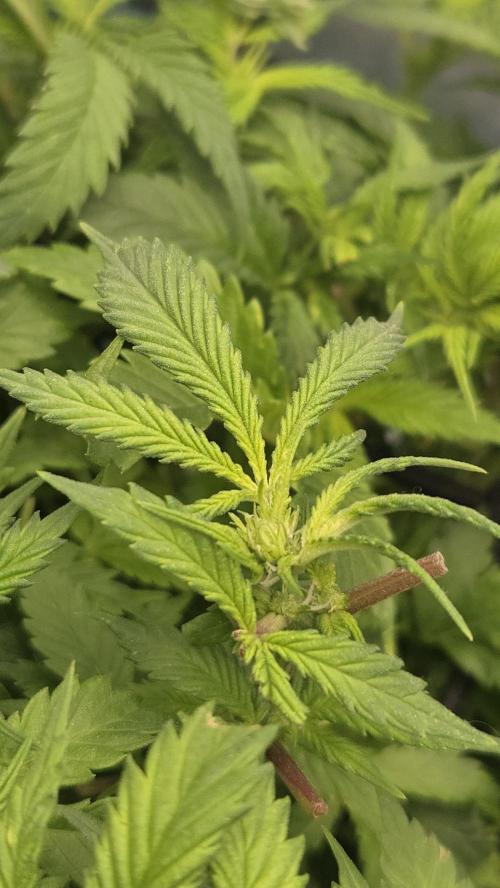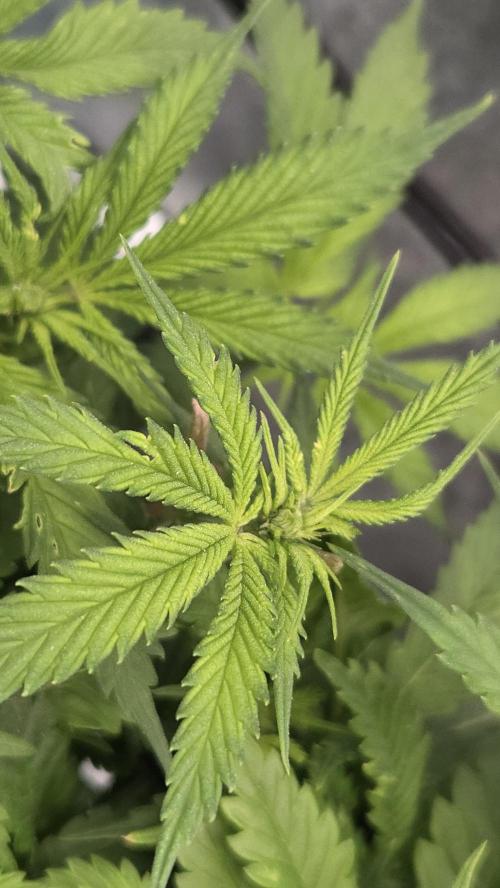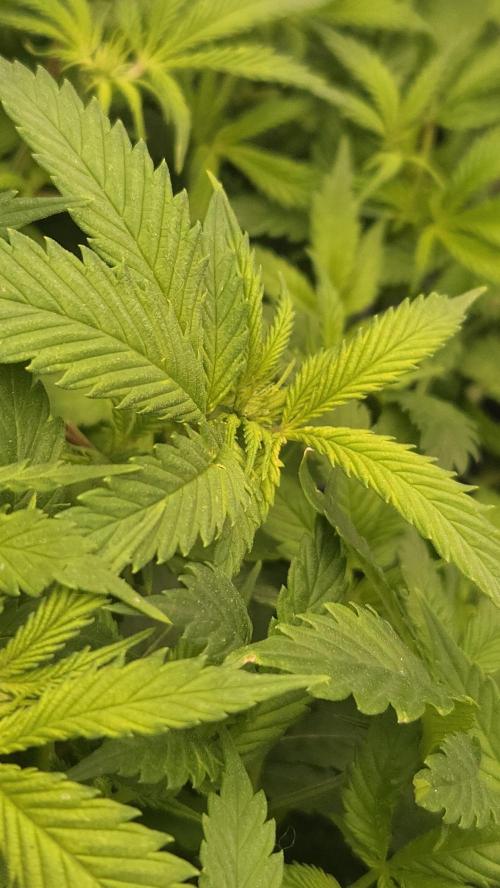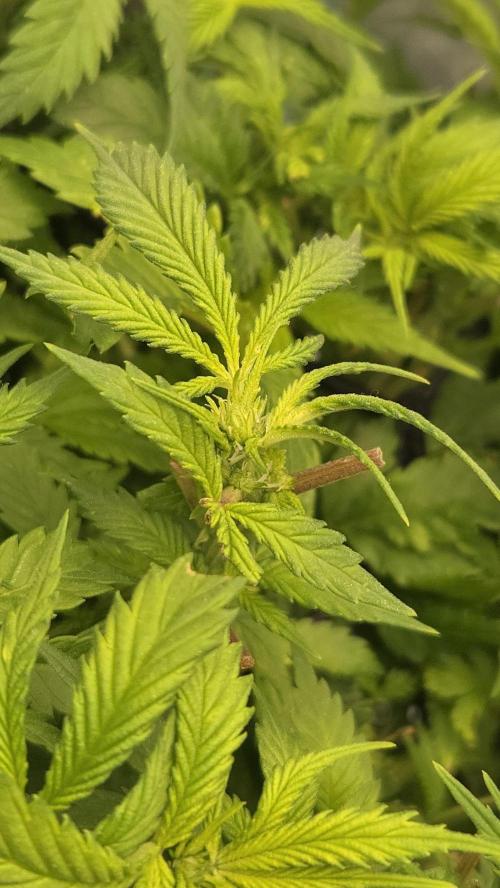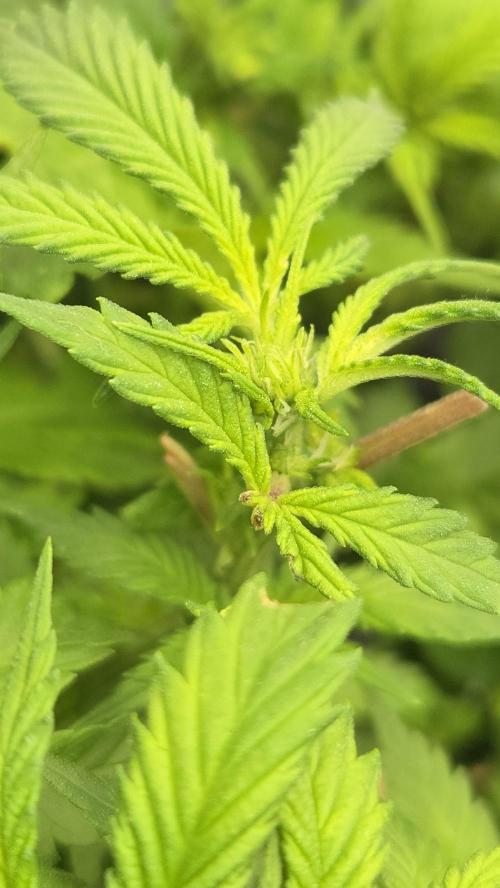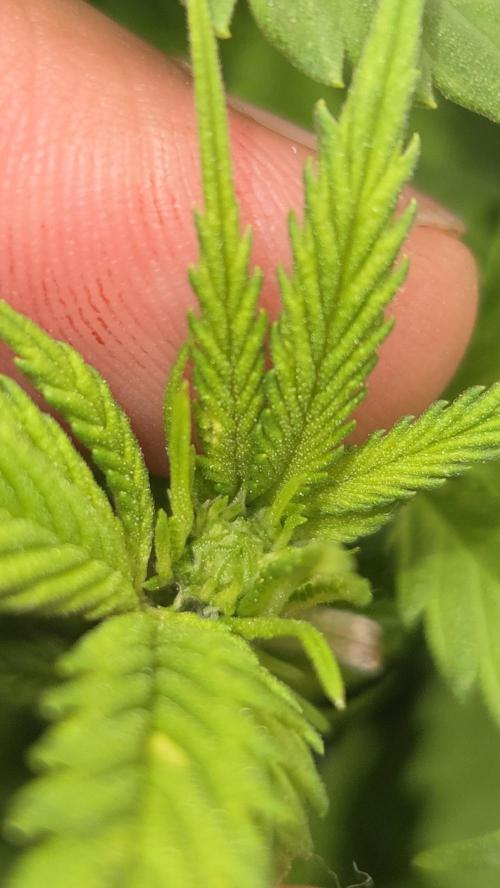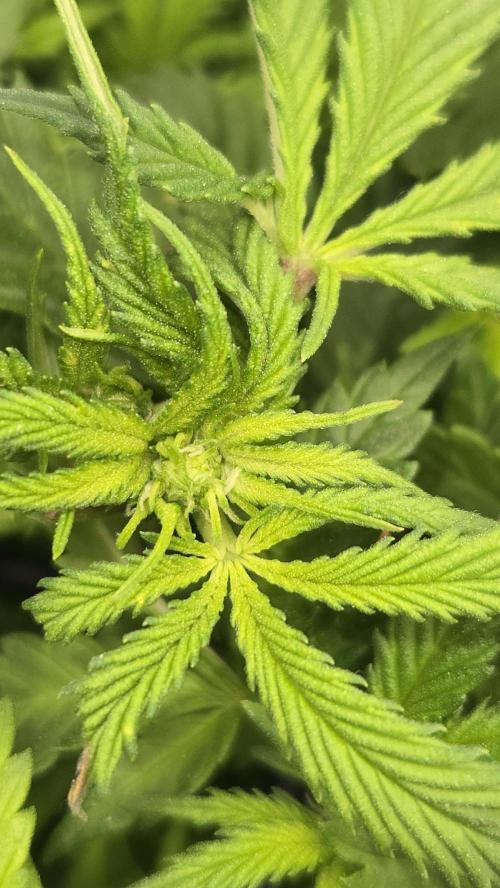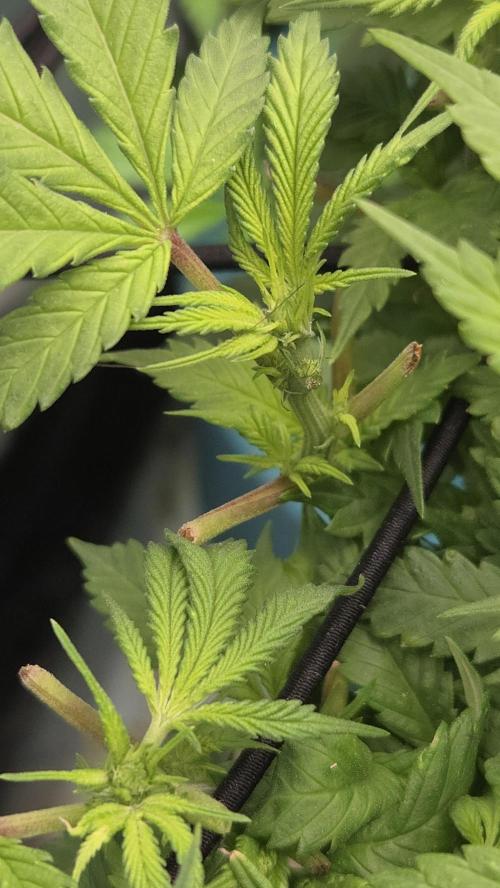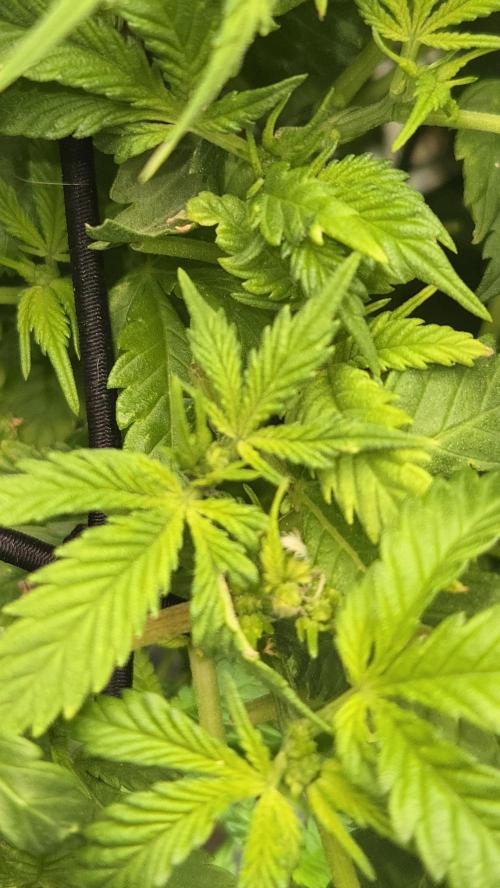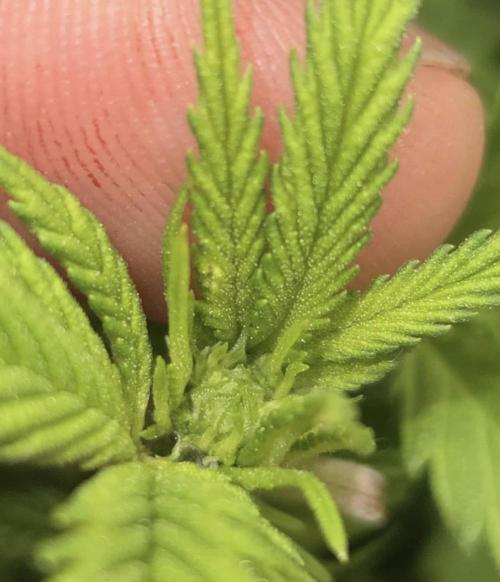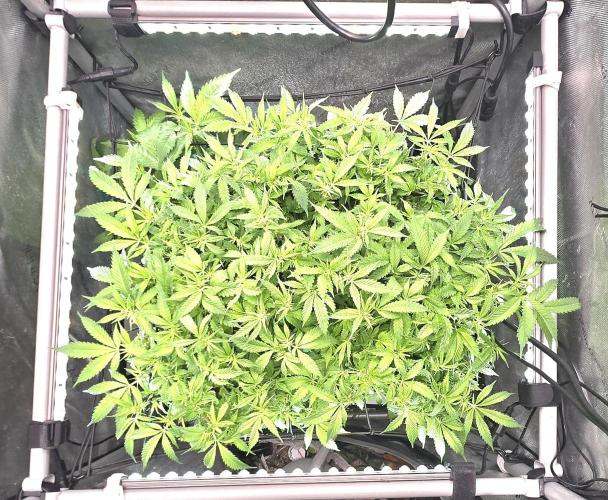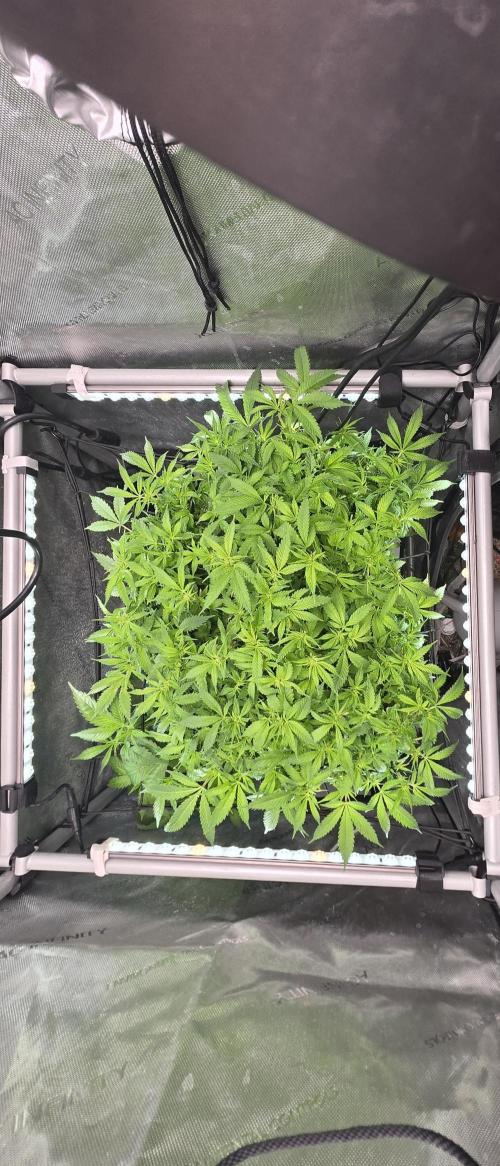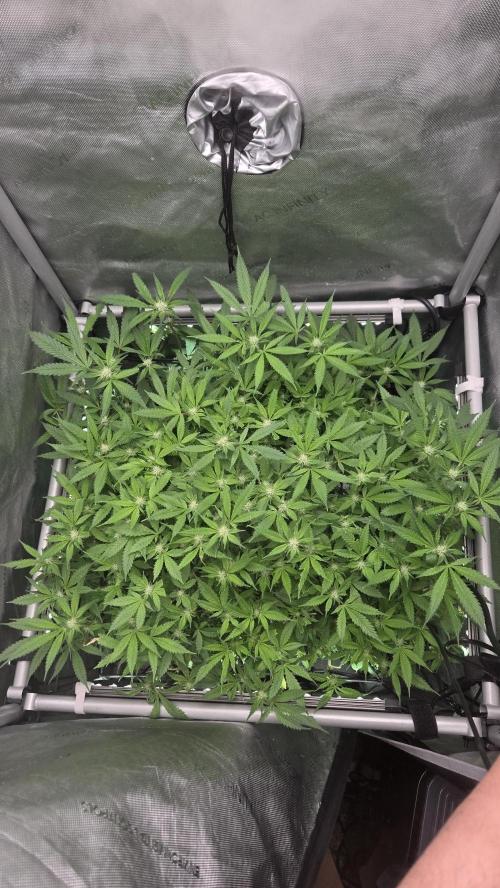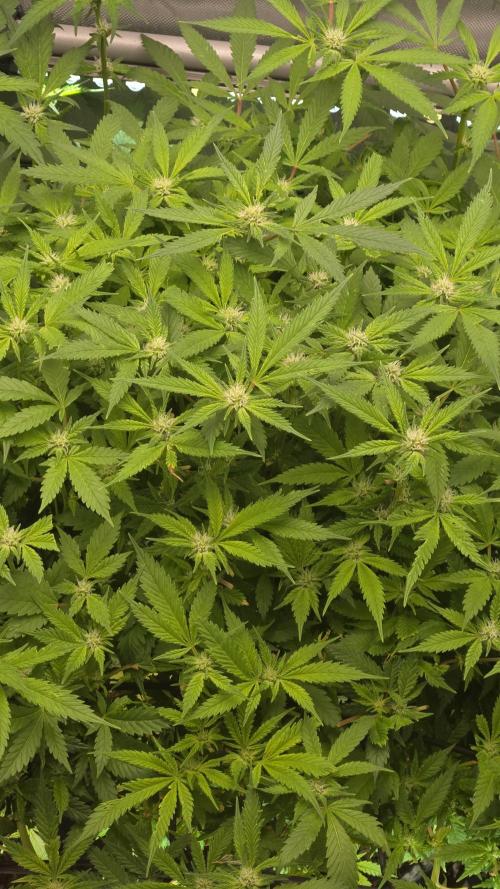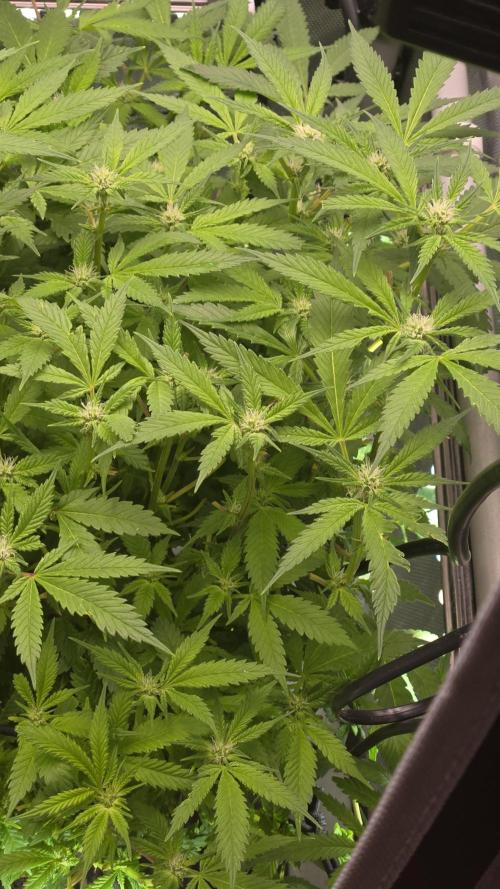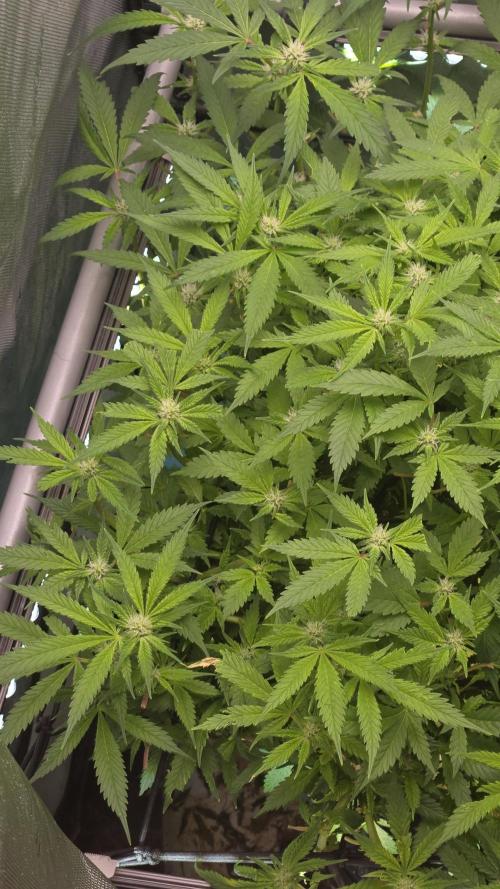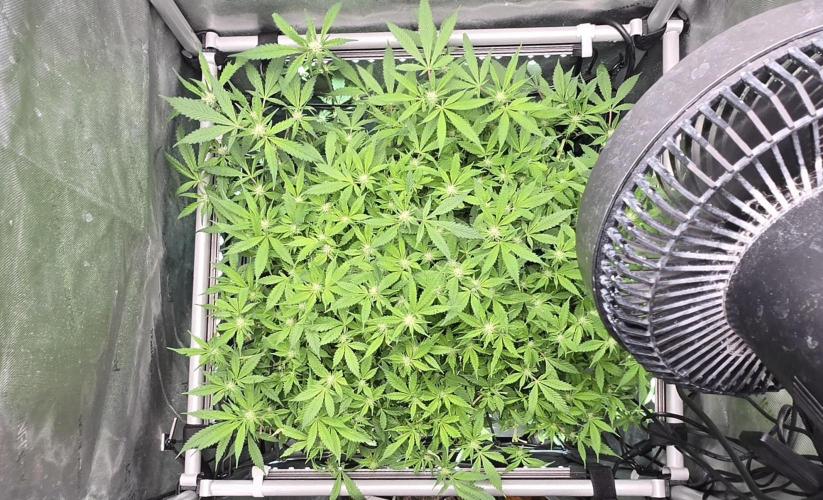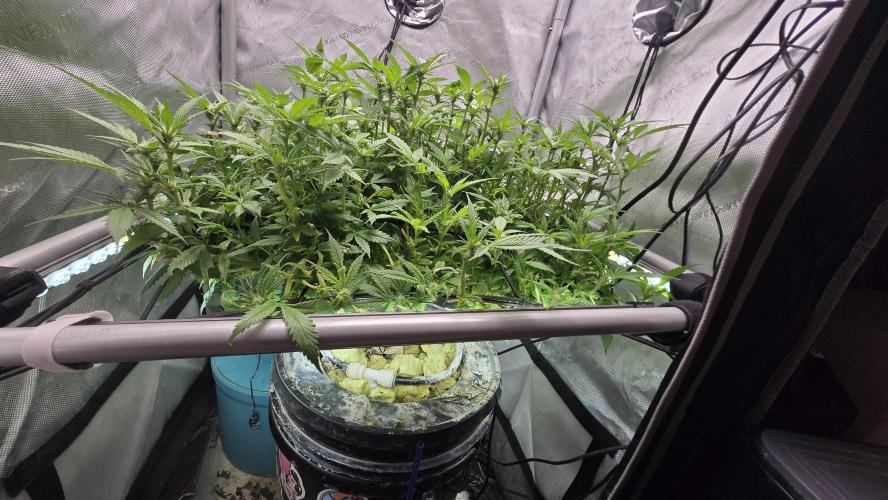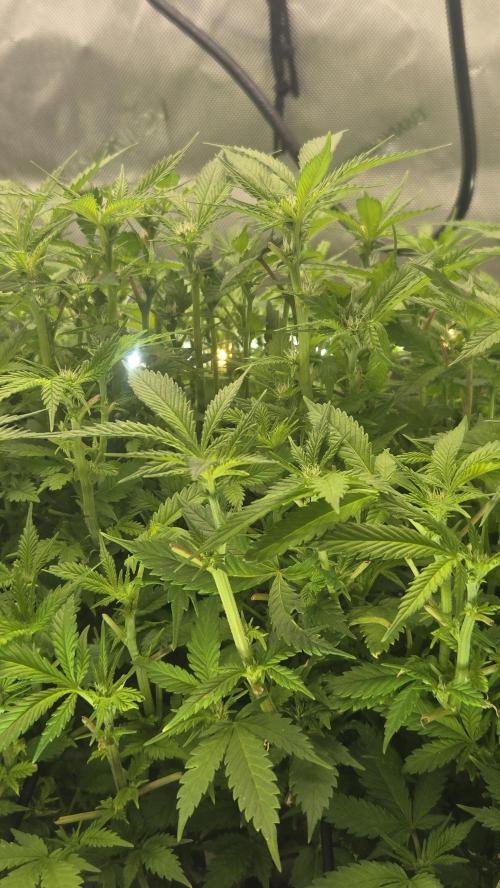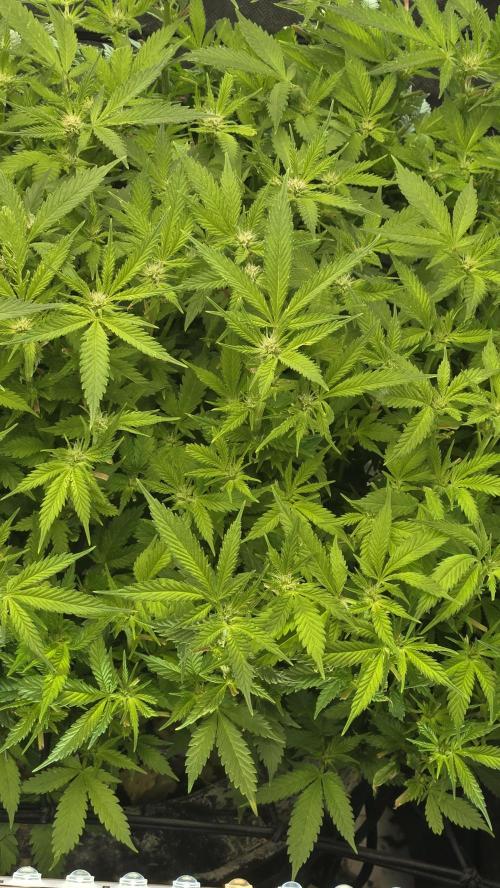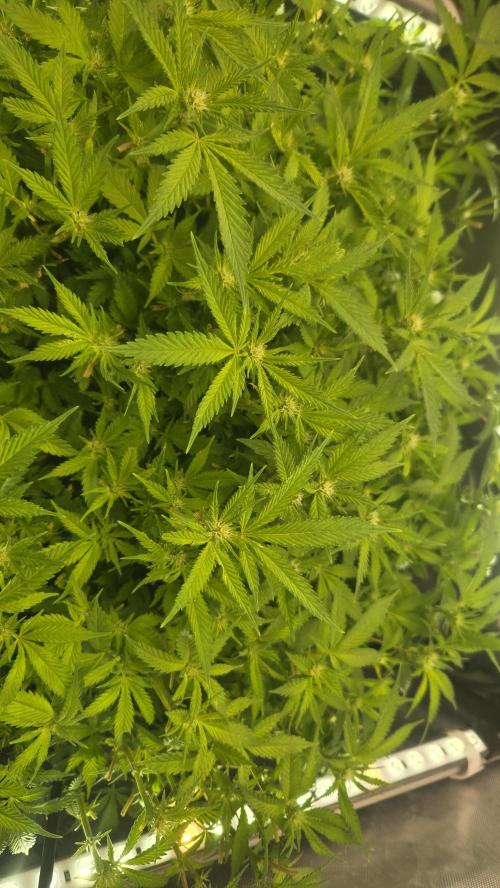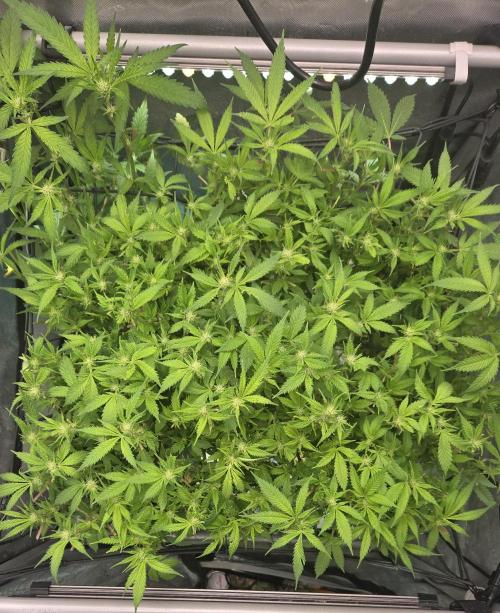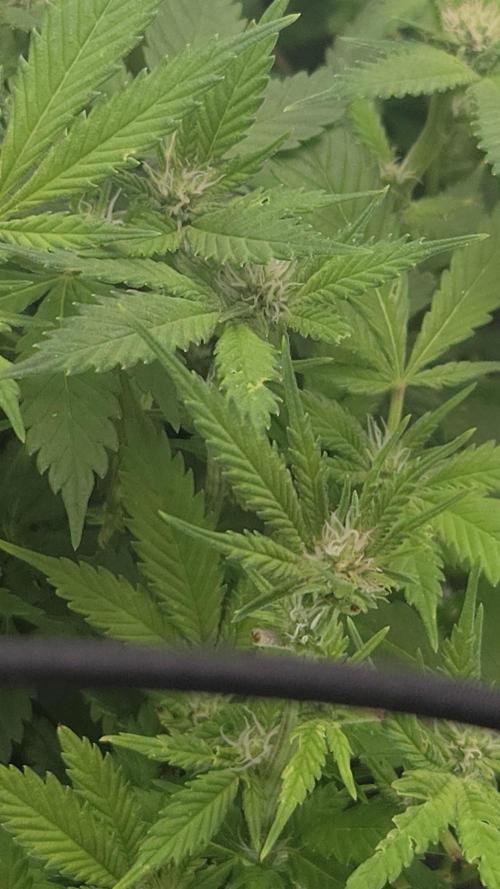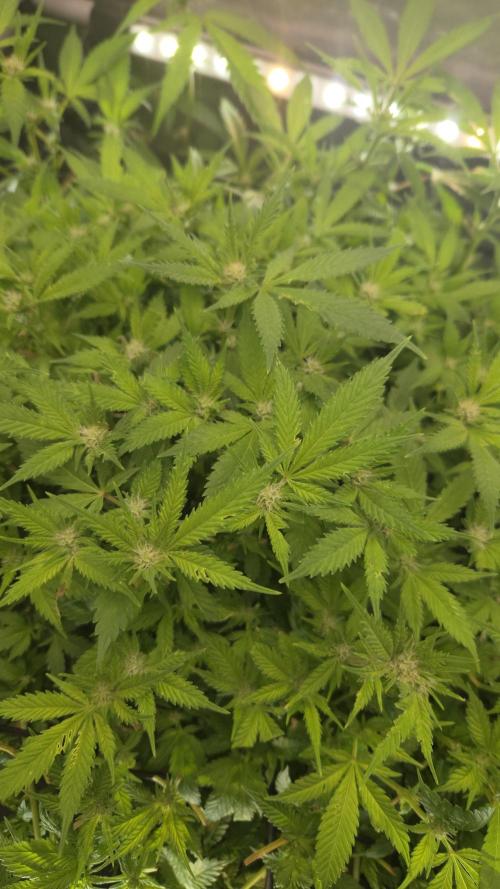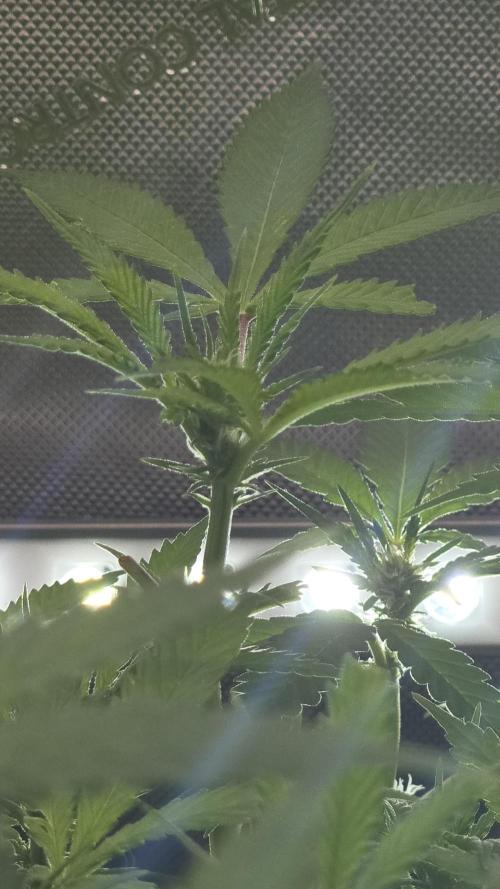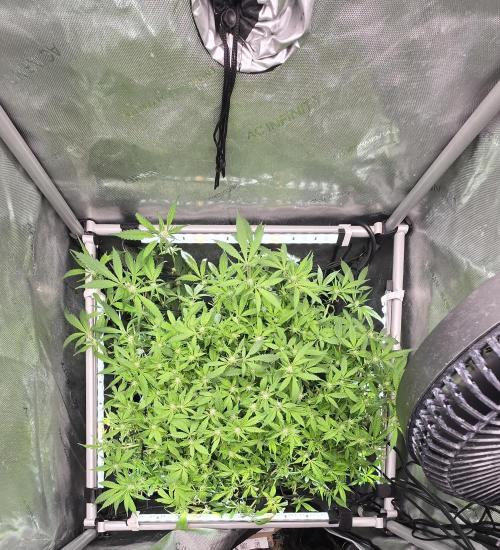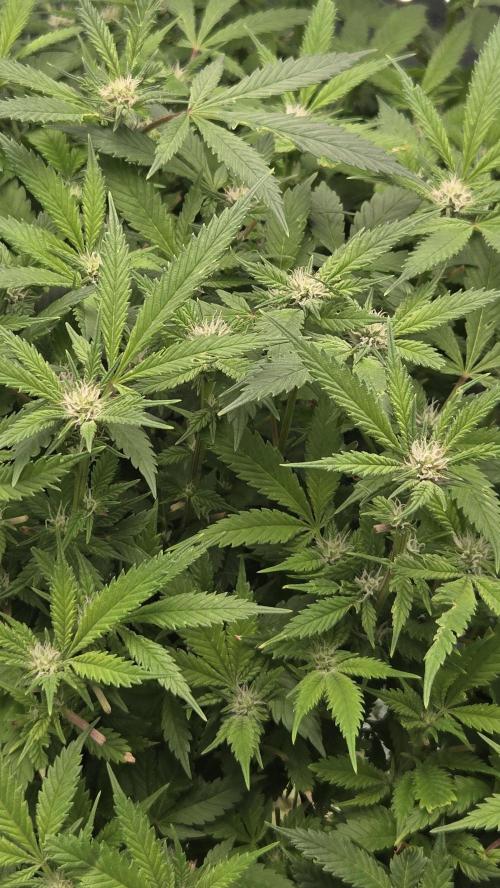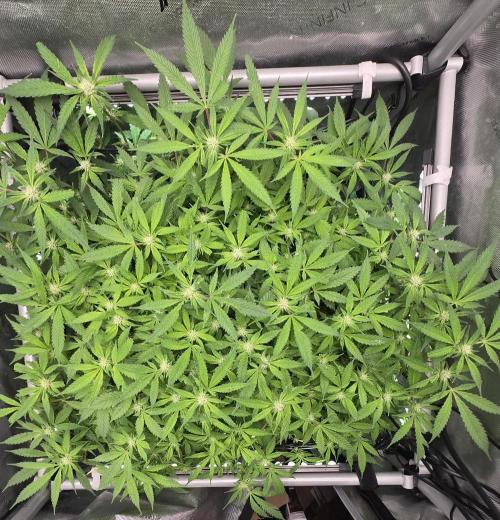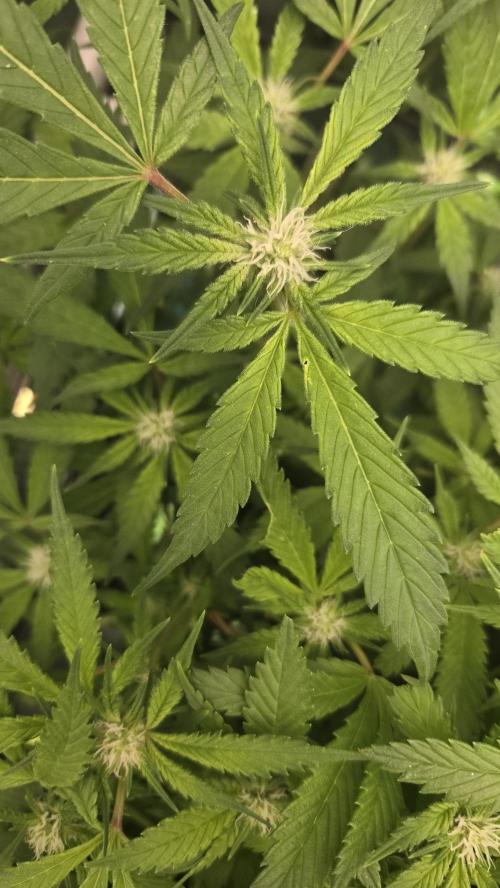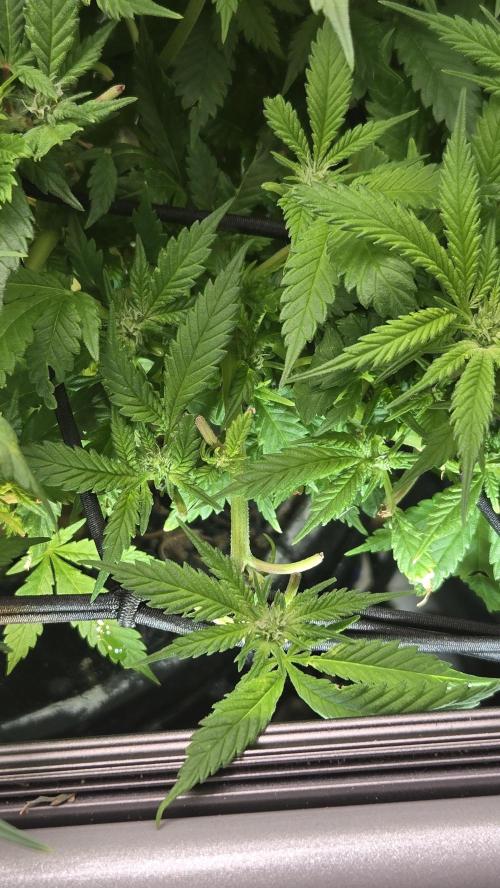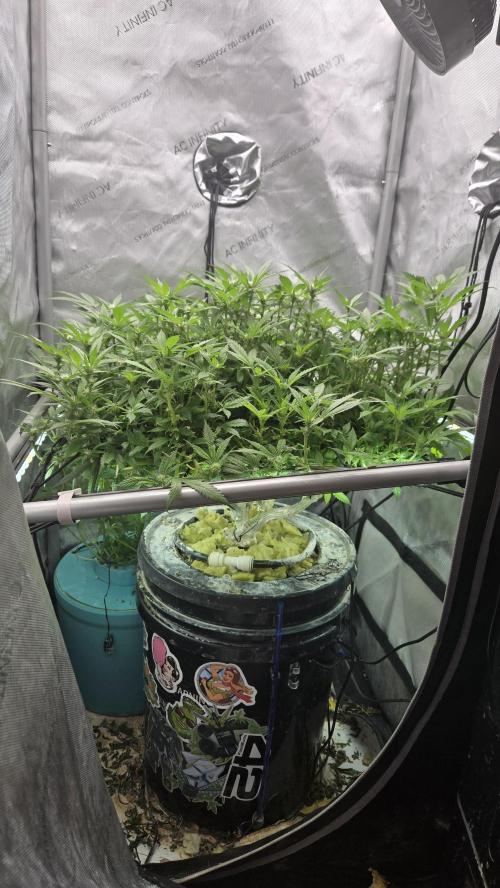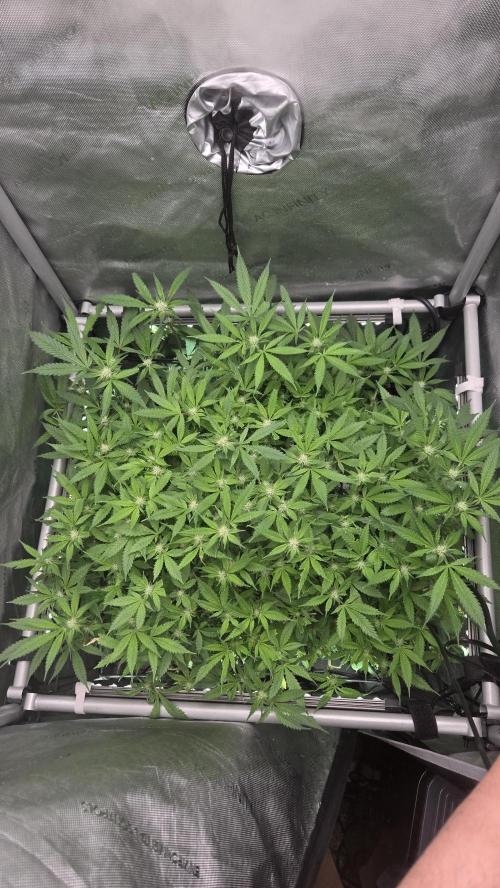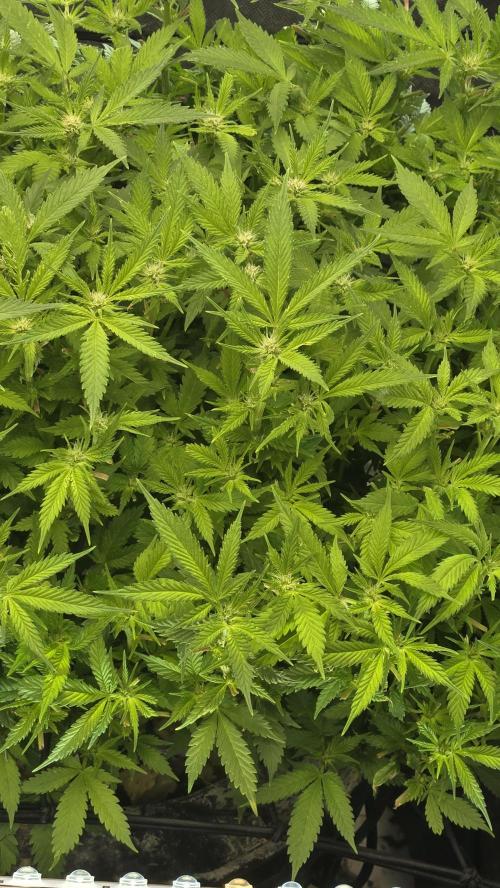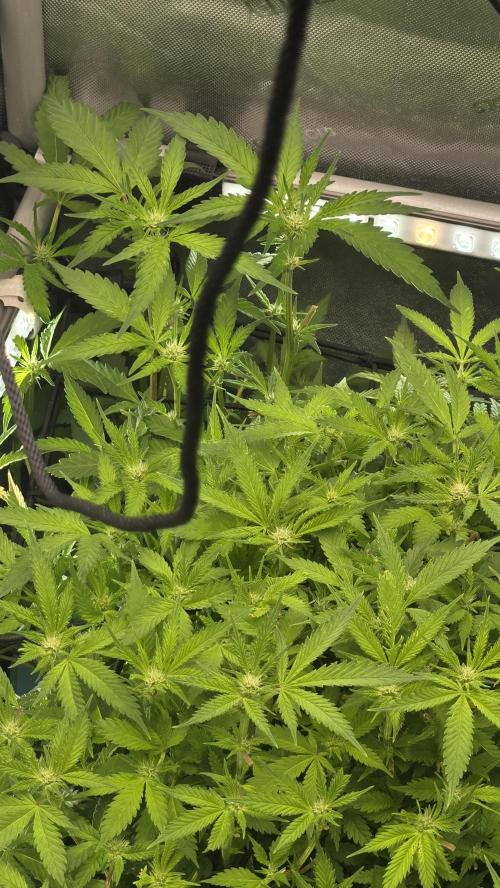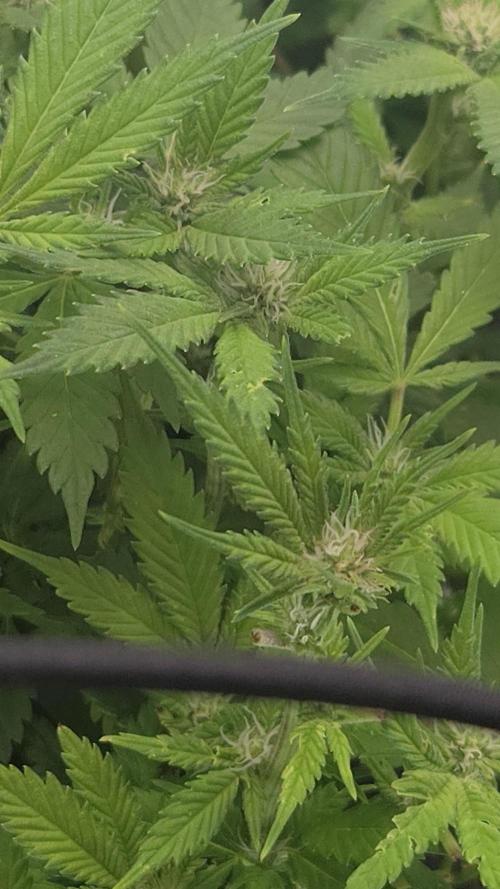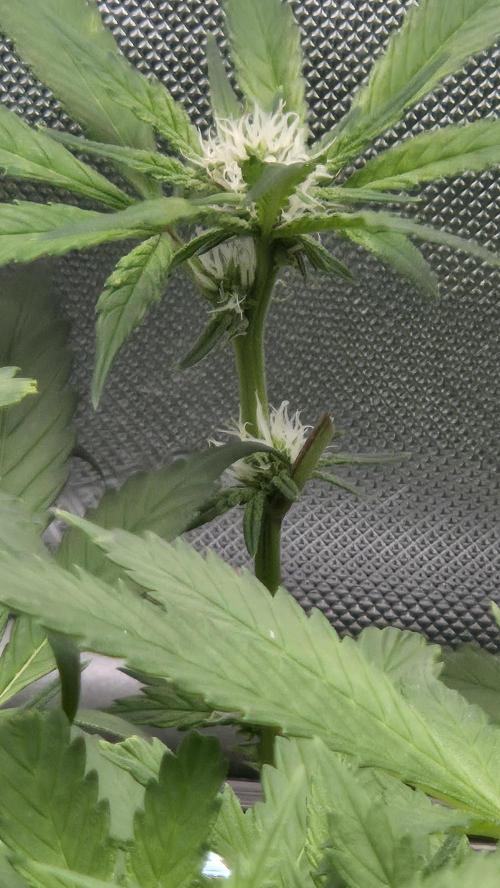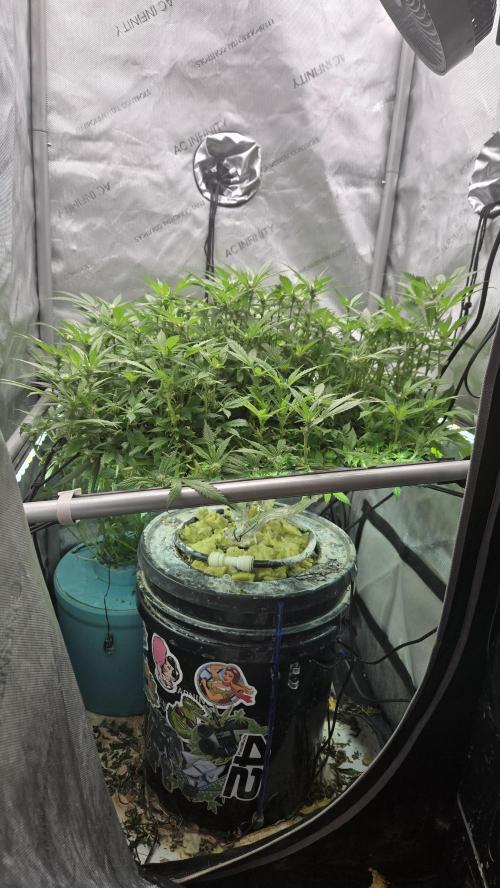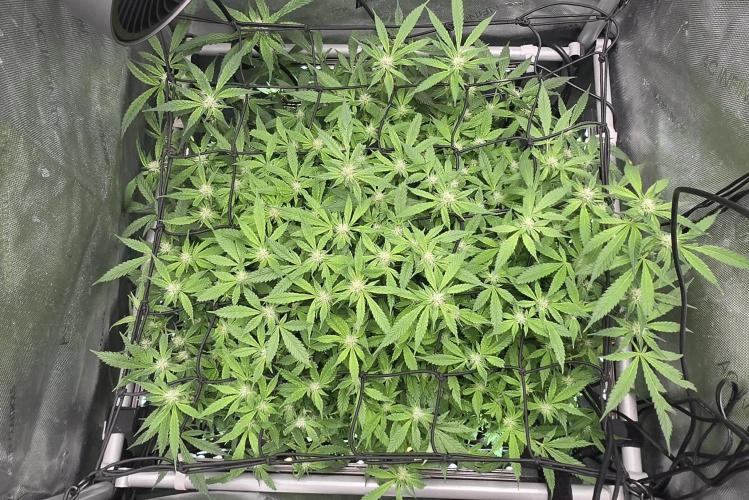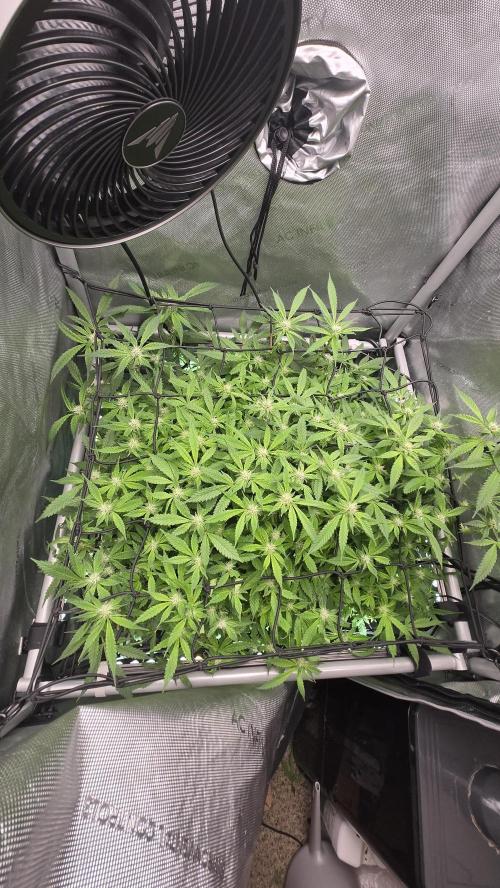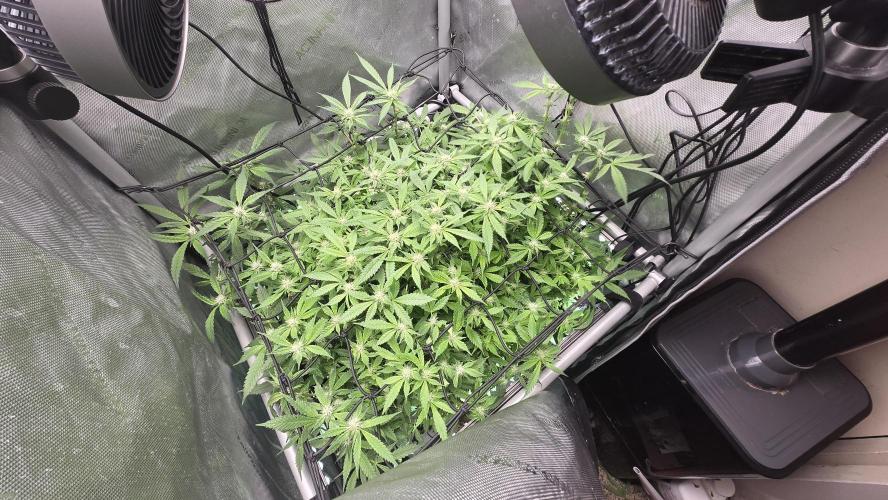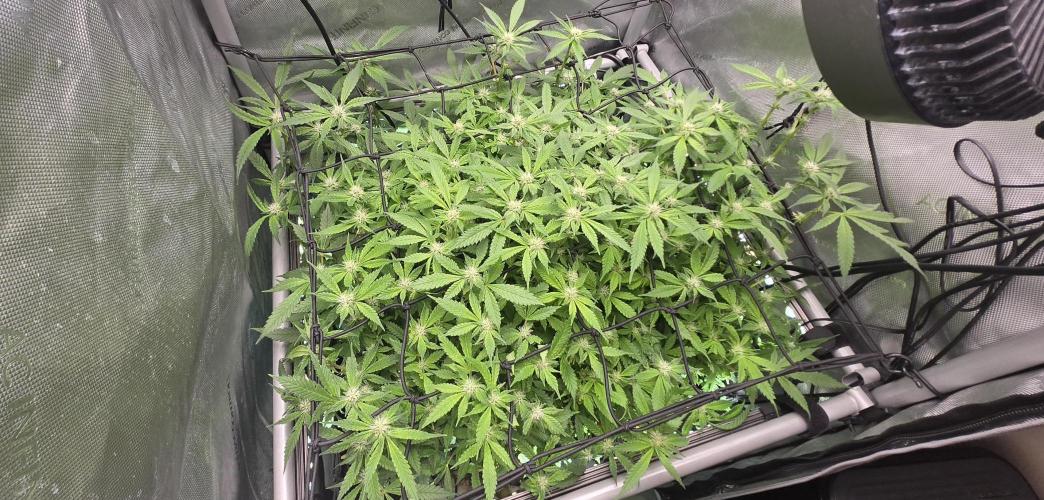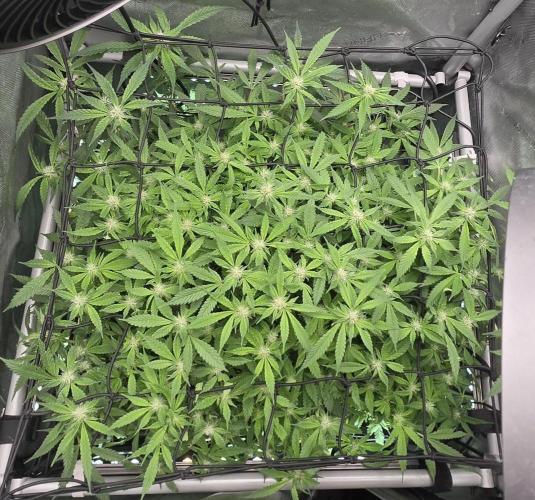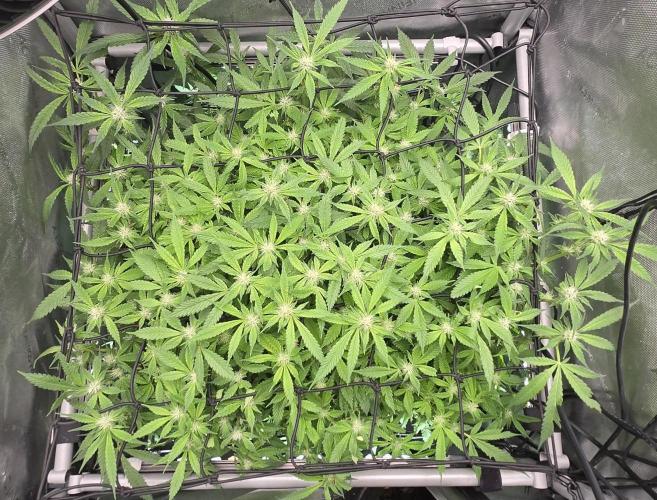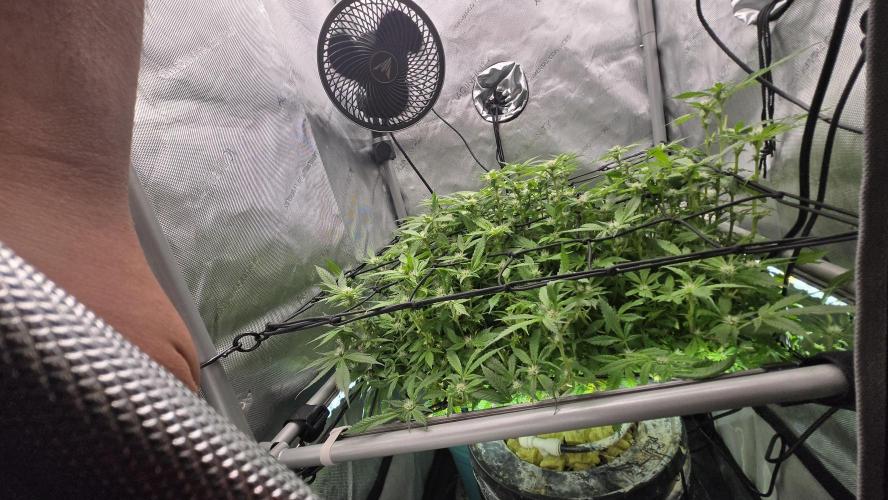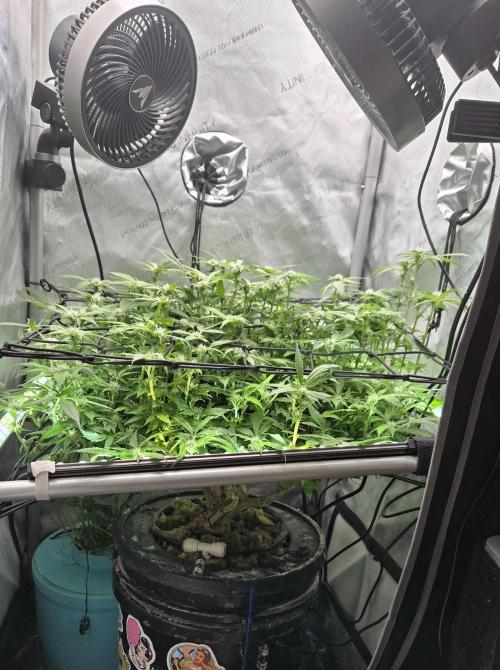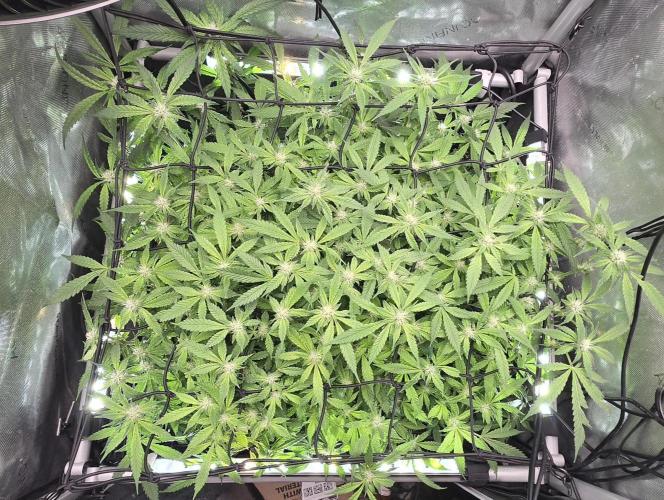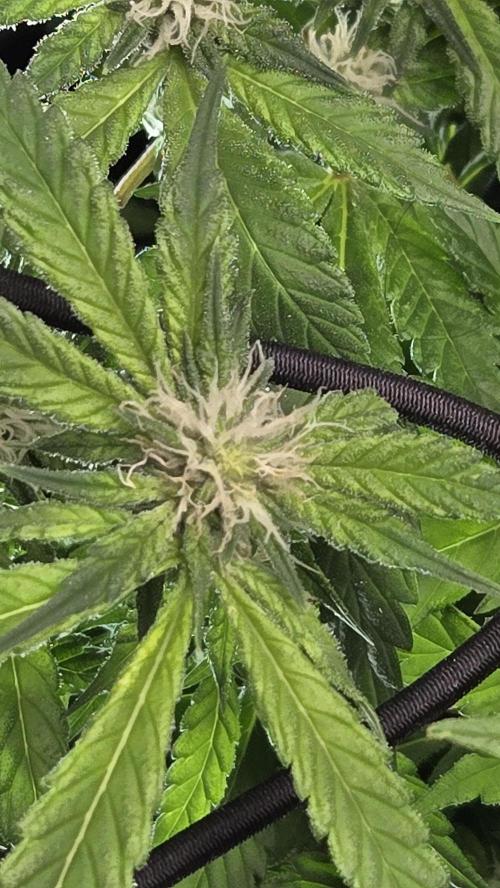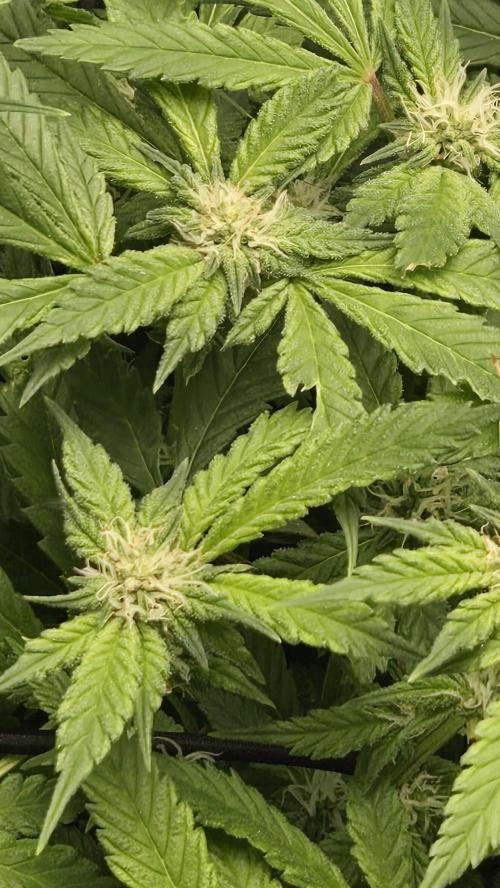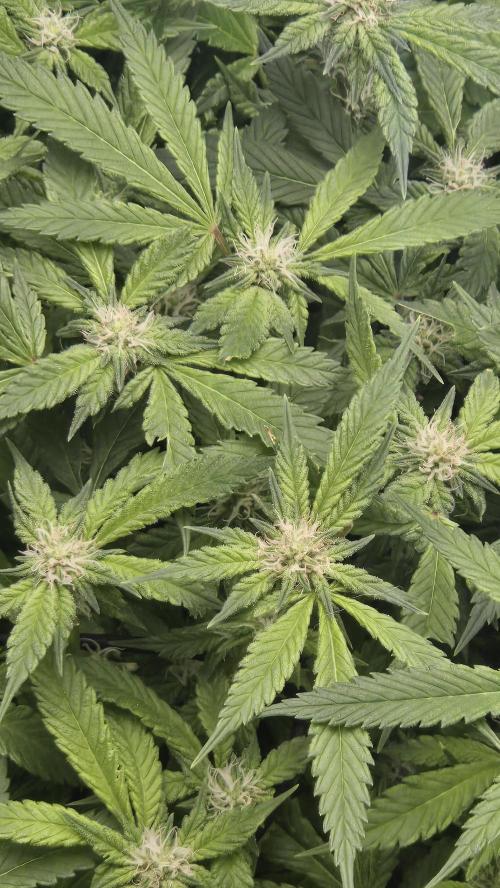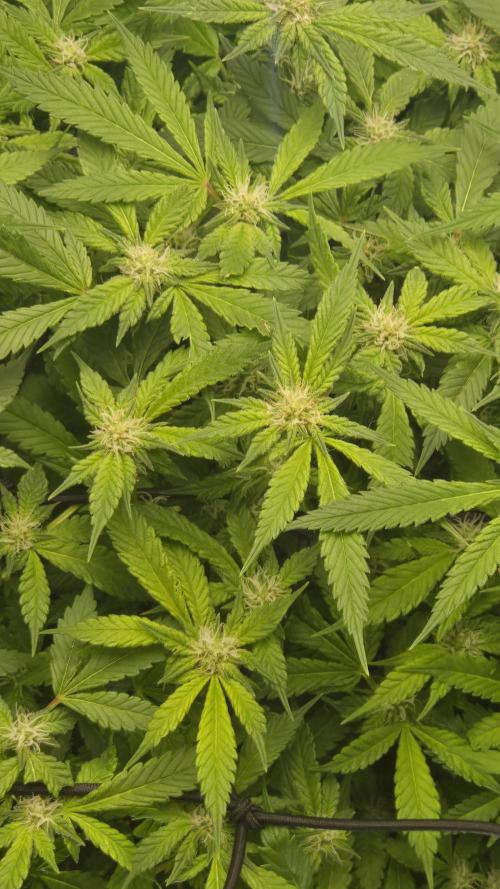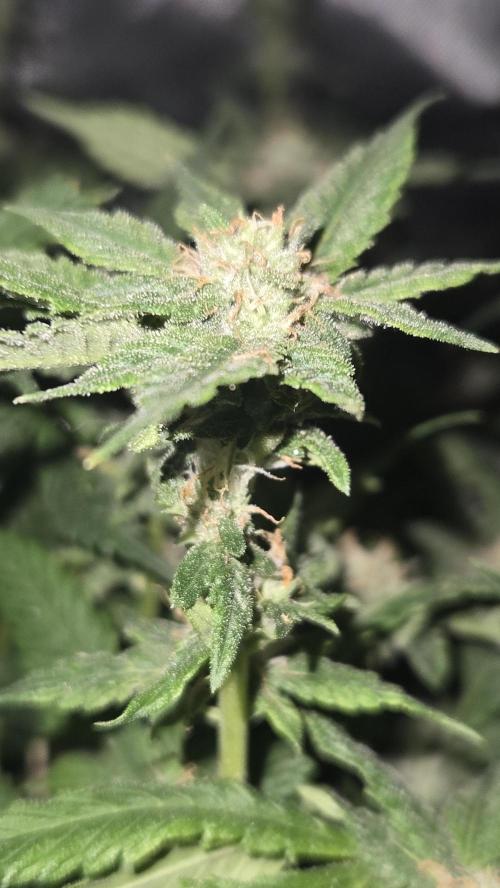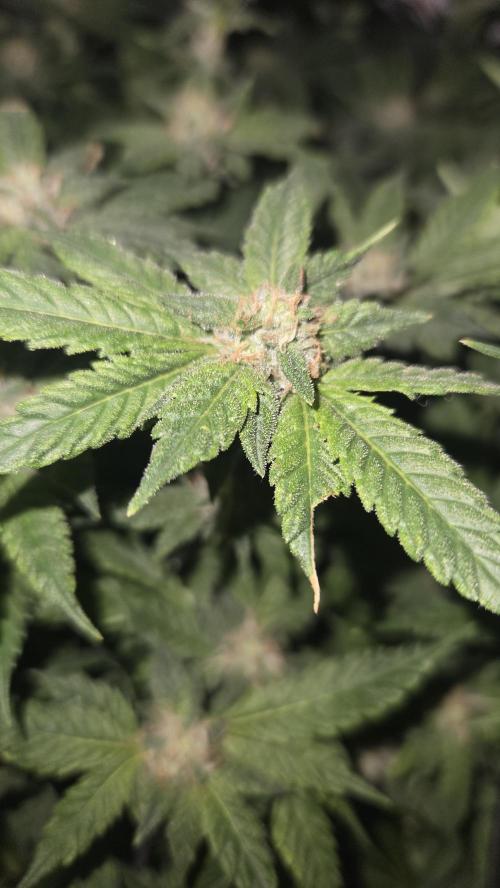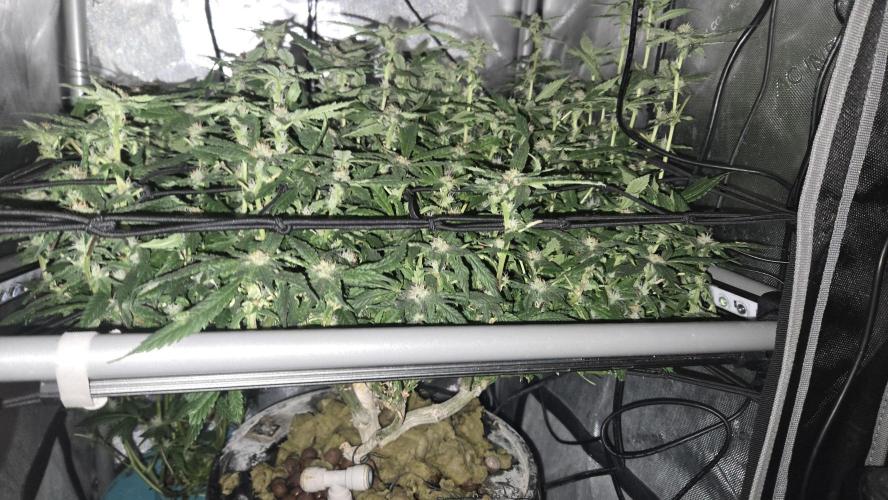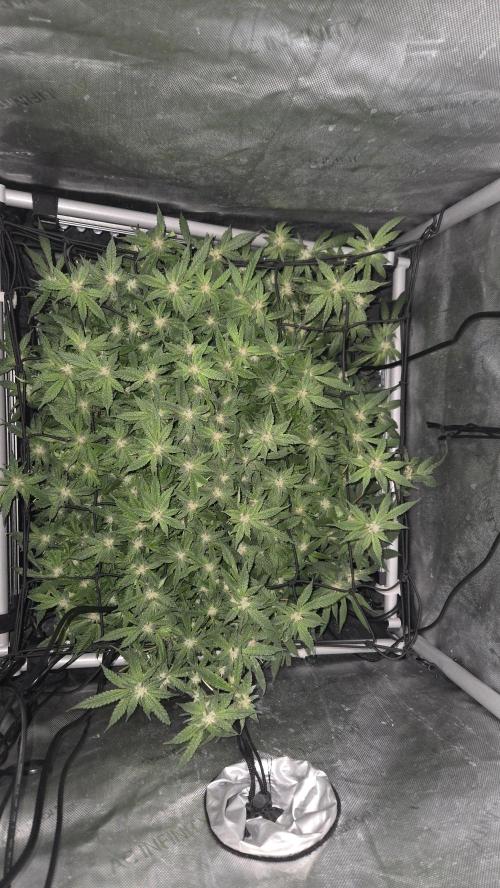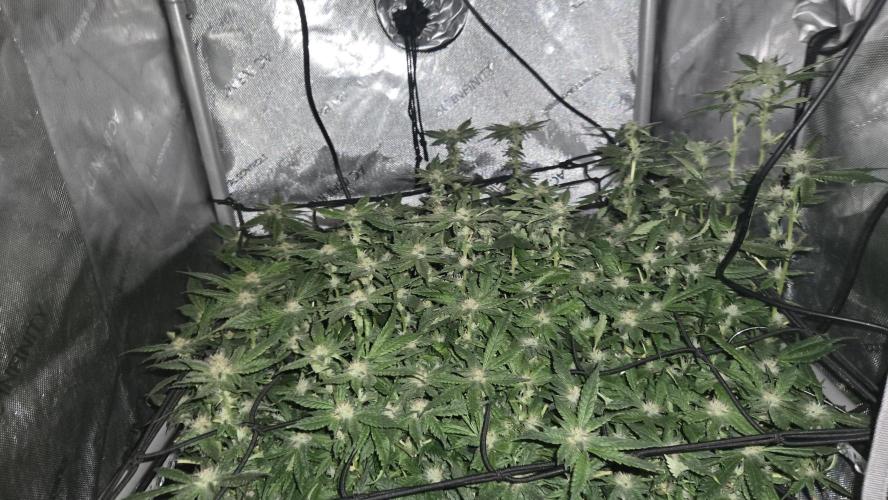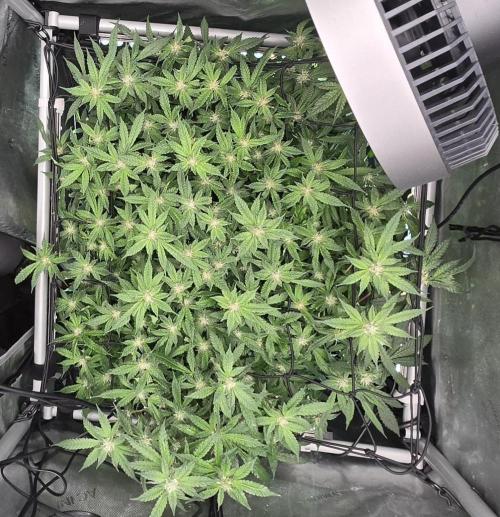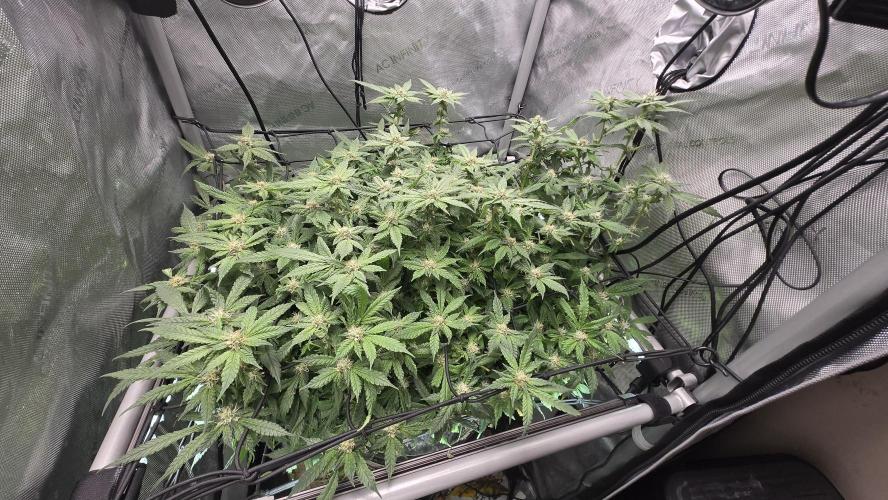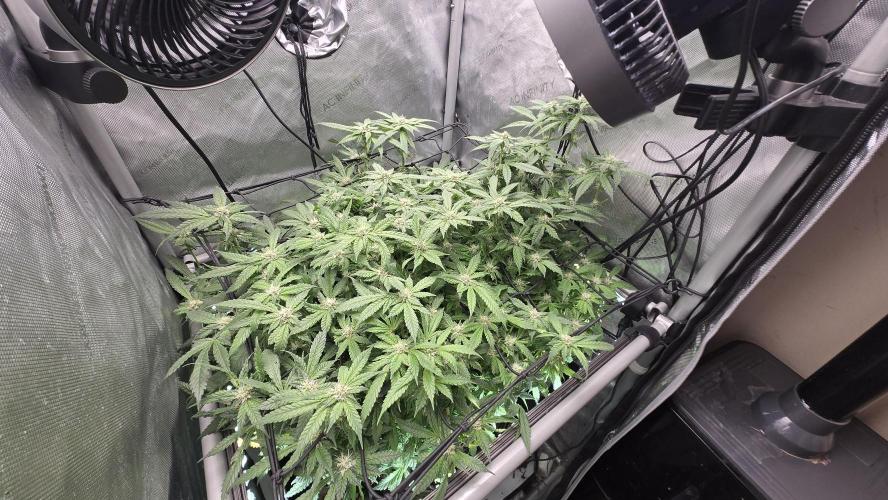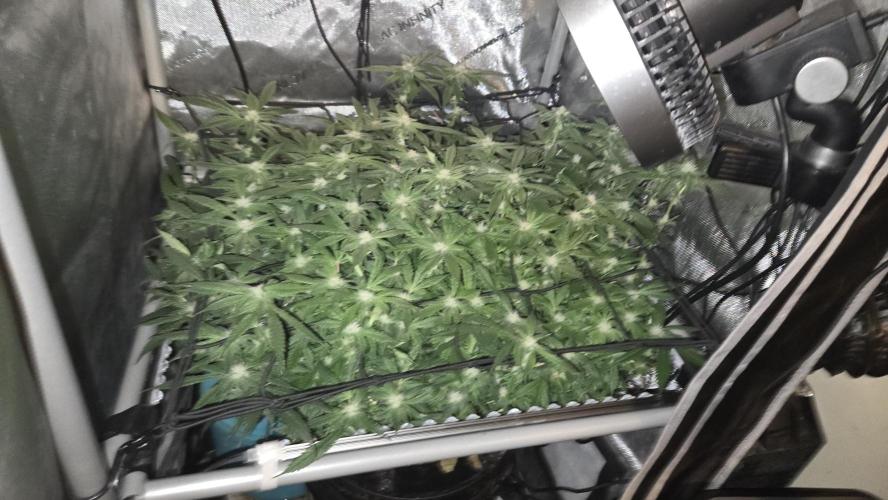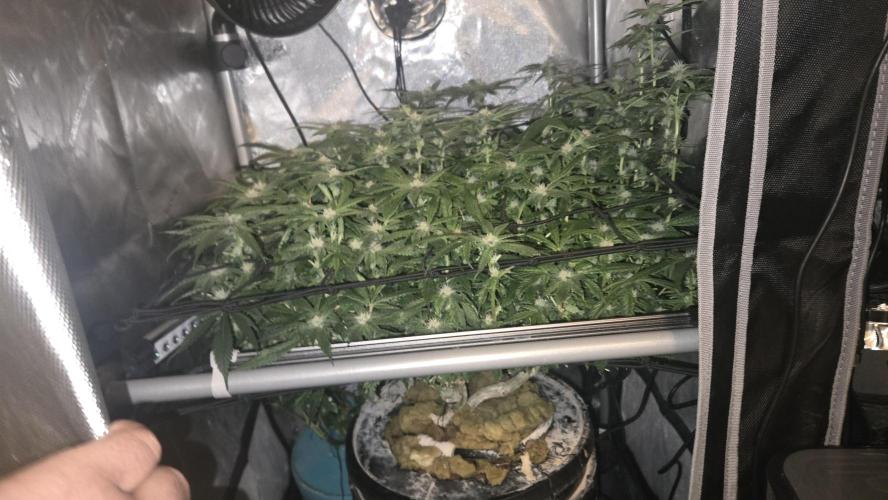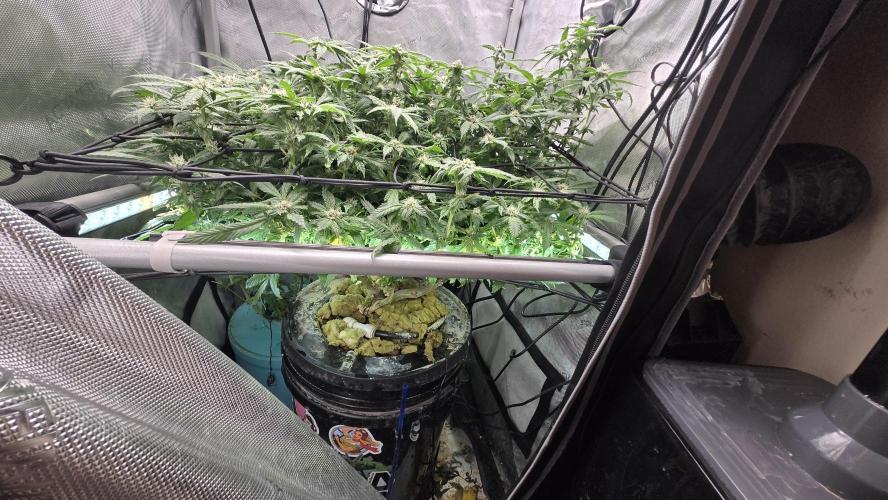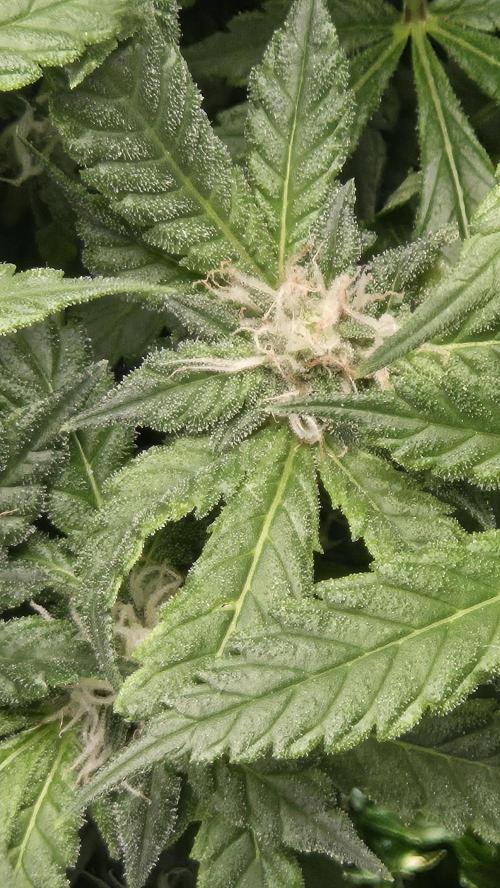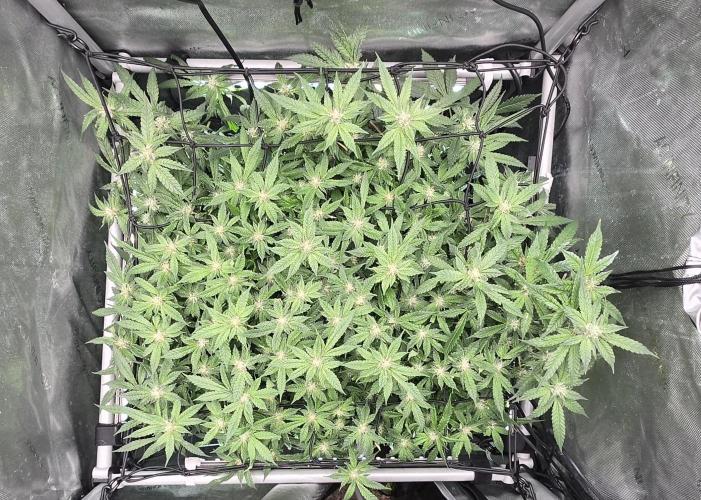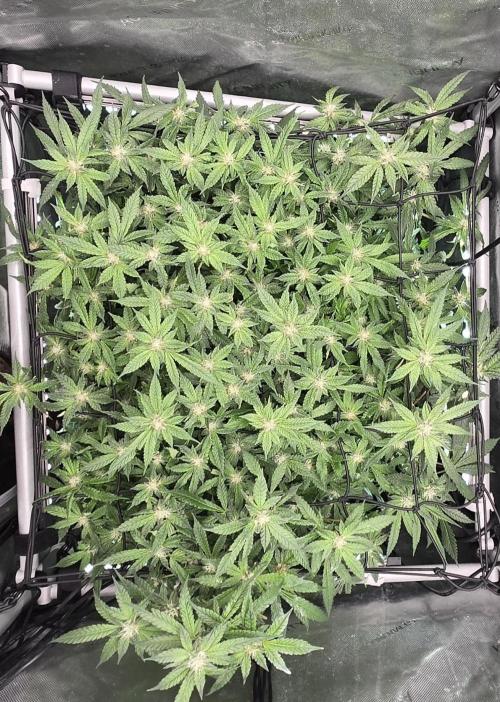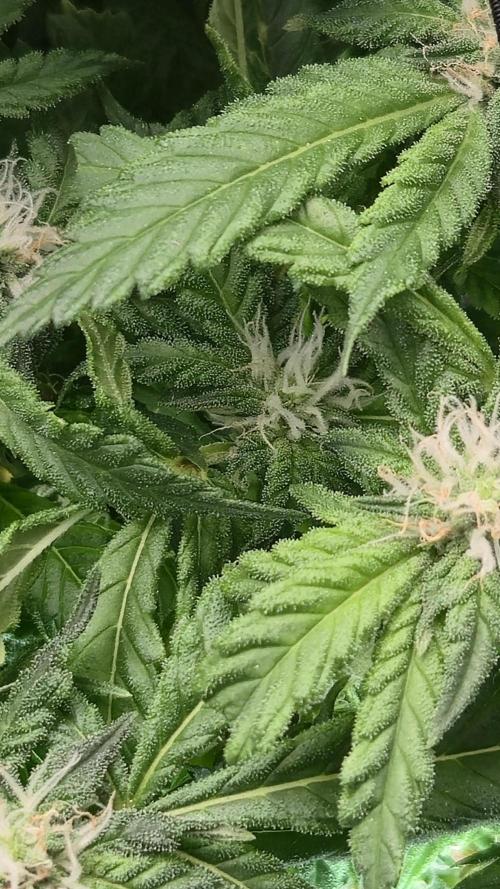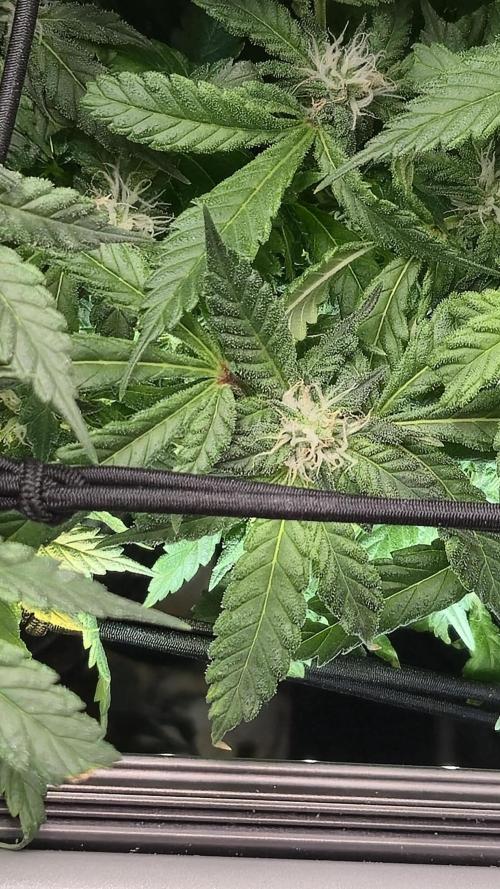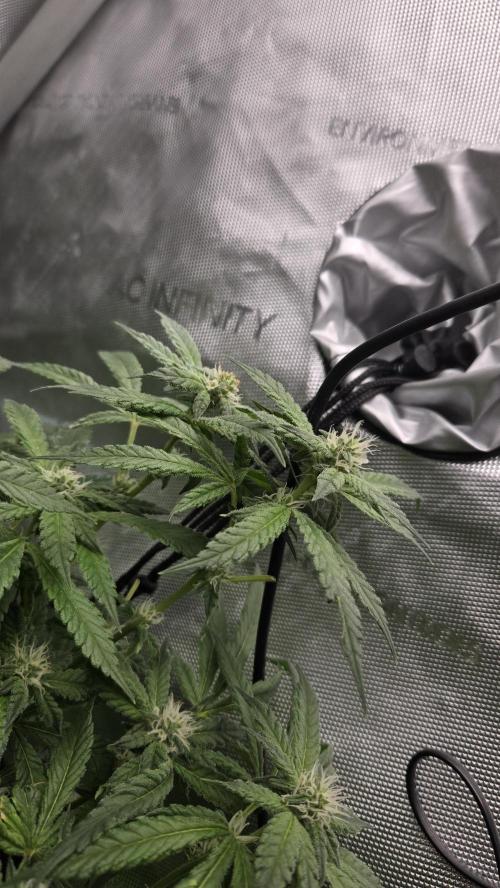By continuing to use the website or clicking Accept you consent to our cookies and personal data policy and confirm that you are at least 18 year old. For details please see Privacy Policy and Terms
Accept
StarLink

starlink

Hydro
single bucket
Mars

Advanced Nutrients
Substrate
Indoor
Room Type
Manifolding
weeks 10
LST
weeks 10
FIMing
weeks 10
Defoliation
weeks 10
ScrOG
weeks 10, 13
Start at 13 Week
G
Germination4mo ago
Nutrients 2

Sensi Bloom Part A Professional Series
0.528 mll

pH Perfect Sensi Bloom Part B
0.528 mll
ShawarmaKing So 10 ML of A + 10 ML of B
2 likes
comments
Share
Used method
Other
Germination Method
1
Week 1. Vegetation4mo ago
8 hrs
Light Schedule
Normal
Smell
Nutrients 9
Armour Silica
0.528 mll

Sensi Bloom Part A Professional Series
1.321 mll

pH Perfect Sensi Bloom Part B
1.321 mll
ShawarmaKing This run started with a careful, step-by-step approach to ensure the Starlink developed a strong foundation for vigorous growth and resin-rich flowers. After germination, I placed the seedling into my DWC system, providing consistent oxygenation and hydration to support root health.
To avoid overwhelming the young plant, I began with a light nutrient mix of 10 ml total for the entire bucket, resulting in a starting TDS of around 150–170 ppm. As the plant settled in and began producing new sets of leaves, I monitored pH closely, keeping it between 5.8–6.1, and watched for any signs of stress. Seeing none, I carefully ramped up the nutrients: 15 ml, then 20 ml, and eventually reached 25 ml total as the plant’s uptake increased, with TDS rising in stages from 250 ppm to 500–550 ppm.
To encourage robust root development and protect against pathogens, I applied Great White mycorrhizae, dusting it directly on the roots during a reservoir change. I also introduced Voodoo Juice at half strength initially, allowing the beneficial microbes to colonize the root zone before moving to full strength in the next feeding.
As vegetative growth accelerated, I began supplementing with Armor Si (silica) to reinforce cell walls and thicken the stems in preparation for topping and training. Starting with 0.25 ml per gallon, I slowly increased to 1 ml per gallon, premixing it with RO water first to avoid precipitation in the reservoir.
When the plant reached the right node count, I performed a clean topping cut to encourage lateral branching and create a fuller canopy. To allow lower shoots to catch up, I adjusted my light height slightly, encouraging even growth and mild stretching.
Around this time, I began noticing a surprisingly strong terpene aroma coming from the plant—even this early in the veg cycle. Recognizing this as a sign of excellent genetic expression, I decided to introduce Purpinator earlier than most growers do. I started with 10 ml total for the bucket, gradually increasing to 25 ml, with the goal of priming the plant’s flavonoid and terpene pathways. The idea was to amplify aromatic potential and set the stage for vibrant colors and rich terpene profiles well before flowering.
Alongside Purpinator, I added Bud Candy at 1 ml per gallon to provide carbohydrates and amino acids, supporting microbial activity and supplying the plant with additional energy during this critical growth phase.
Now the Starlink is thriving: bushy, vibrant, and showing vigorous lateral growth. The early aroma is already impressive, and the gradual nutrient ramp-up combined with microbial support and early terpene enhancement has created the perfect conditions for a high-yielding, resin-packed flower cycle.
I used the default veg, seedling setting in the ac infinity app keeping the light 14 inches away.
2 likes
1 comment
Share
4
Week 4. Vegetation3mo ago
8 hrs
Light Schedule
Normal
Smell
Nutrients 9
Armour Silica
0.528 mll

Sensi Bloom Part A Professional Series
1.321 mll

pH Perfect Sensi Bloom Part B
1.321 mll
ShawarmaKing The following week things are going to get crazy
1 like
comments
Share
5
Week 5. Vegetation3mo ago
8 hrs
Light Schedule
Normal
Smell
Nutrients 9
Armour Silica
0.528 mll

Sensi Bloom Part A Professional Series
1.321 mll

pH Perfect Sensi Bloom Part B
1.321 mll
ShawarmaKing The following week we're going to be pushing the plant to its limits to its breaking point allowing it to thrive to its full genetic potential.
1 like
comments
Share
6
Week 6. Vegetation3mo ago
8 hrs
Light Schedule
Normal
Smell
Nutrients 9
Armour Silica
0.528 mll

Sensi Bloom Part A Professional Series
1.321 mll

pH Perfect Sensi Bloom Part B
1.321 mll
ShawarmaKing We had a mainline break and the clone is doing well so far so good but this main line break down the main stem with actually a blessing in disguise. Next week's post you will see all the new colas that were formed as a result of the stress induced here I will create an artificial knuckle using wire, masking tape and gorilla glue. The reason I will reinforce it is so that when I do high stress training again the split won't break open again.
1 like
comments
Share
7
Week 7. Vegetation3mo ago
Normal
Smell
Nutrients 9
Armour Silica
0.528 mll

Sensi Bloom Part A Professional Series
1.321 mll

pH Perfect Sensi Bloom Part B
1.321 mll
ShawarmaKing So this week concludes all the high stress training that needs to be done now I just got to let it naturally fill up the rest of the tent since I already made a lot of new flowering sites and nodes it was a hard journey and I frankensteined a lot of this. I push the plant to the brink of what it could do. Broke a few branches along the way but I think it came as a blessing in disguise. So the plan right now is to stick with light befoliation for the next 7 to 10 days allow these new nodes to keep stacking and just let it grow vigorously I purposely pushed back the veg and prolonged it to the early veg stage as much as I could and we'll see the results.
1 like
4 comments
Share
8
Week 8. Vegetation3mo ago
Normal
Smell
Nutrients 9
Armour Silica
0.528 mll

Sensi Bloom Part A Professional Series
1.321 mll

pH Perfect Sensi Bloom Part B
1.321 mll
ShawarmaKing If I let it veg untouched until the end of the month, I’d be setting myself up for a massive plant — especially in DWC. By that time, I’d likely see it fill the entire 2x2 tent, wall to wall, with thick branching and strong vertical growth.
I wouldn’t defoliate or lollipop at all until right before flower. Letting it chill and do its thing would give it time to fully recover from any stress and bulk up naturally. The inner shoots that are shaded right now would likely push through the canopy on their own, and the weaker ones that don’t can be chopped later when I clean it up.
By waiting, I’d have more bud sites, a stronger root system, and a fuller canopy — I’d just need to make sure the airflow is solid to avoid moisture issues. Once I decide to flip, I’d go in, do a proper lollipop, and start flower with a clean, strong structure that’s fully packed with potential.
So yeah, if I do nothing and just feed and monitor it, by the end of the month I’d have a monster ready to bloom.
So with the training clips removed. The clips were likely applying pressure at certain points on the stem or branches, which can slightly restrict vascular flow. The plant’s vascular system — mainly the xylem (for water and minerals) and phloem (for sugars and signaling molecules) — is responsible for distributing everything the plant needs to grow. However I think it was worth the trade off especially with the bonsai like structure I have created. These points are definitely woody for sure and they are definitely holding its shape.
1 like
comments
Share
9
Week 9. Flowering18d ago
Normal
Smell
Nutrients 10
Armour Silica
0.528 mll

Sensi Bloom Part A Professional Series
1.321 mll

pH Perfect Sensi Bloom Part B
1.321 mll
ShawarmaKing First day of flip
likes
comments
Share
10
Week 10. Flowering18d ago
Normal
Smell
Nutrients 10
Armour Silica
0.528 mll

Sensi Bloom Part A Professional Series
1.321 mll

pH Perfect Sensi Bloom Part B
1.321 mll
ShawarmaKing I noticed there was not a lot of gross documenting the horizontal stretch during flower So I wanted to put this here.
likes
comments
Share
Used techniques
Defoliation
Technique
Manifolding
Technique
FIMing
Technique
ScrOG
Technique
LST
Technique
11
Week 11. Flowering18d ago
Normal
Smell
Nutrients 10
Armour Silica
0.528 mll

Sensi Bloom Part A Professional Series
1.321 mll

pH Perfect Sensi Bloom Part B
1.321 mll
ShawarmaKing Week three of flower marks a major transition for the Starlink (Lychee × Medellin) hybrid. The canopy has completely filled the trellis, with every branch reaching upward evenly, creating a uniform and balanced structure. Stretch has officially ended, and the tops are now setting their bud sites in perfect formation. Under the Acefarmer full-spectrum LED running at roughly 80 percent intensity, the light coverage remains even from corner to corner, with no hotspots or shadowed areas. Internodal spacing is tight and consistent, and the stems have thickened nicely, strong enough to support the weight of upcoming colas. Airflow throughout the canopy is excellent, thanks to early defoliation and careful training.
The environment has been stable—around 78 °F during the day, 70 °F at night, and humidity holding near 50 percent. Nutrient levels are steady at about 1000–1050 PPM (2.0 EC) with a pH between 5.8 and 6.0. The plant is now running on a bloom-focused nutrient mix: slightly reduced nitrogen, elevated phosphorus and potassium, and a touch of silica to strengthen cell walls during early bud formation. Top-offs and pH adjustments are handled daily to keep the reservoir consistent, and the response from the plant has been outstanding—lush green foliage, no burn or clawing, and vigorous daily growth.
Pistils are now standing tall and beginning to cluster, marking the onset of the pre-bulking phase. Over the next week, calyxes will begin to swell and trichomes will start to appear on the sugar leaves. The aroma has started to reveal itself when brushing the tops—a subtle, sweet, lychee-like scent that hints at the strain’s unique lineage. The plan is to hold nutrient strength for another week before lightly introducing a PK booster around day 28, while maintaining airflow and humidity below 50 percent to prepare for heavier flowering.
Overall, the grow is perfectly on track. The canopy’s symmetry, the health of the foliage, and the even light distribution all point toward a high-yielding, frosty harvest ahead. This stage sets the foundation for density and resin production in the weeks to come, and the plant couldn’t look stronger going into the heart of the flower cycle.
3 likes
comments
Share
12
Week 12. Flowering7d ago
Normal
Smell
Nutrients 10
Armour Silica
0.528 mll

Sensi Bloom Part A Professional Series
1.321 mll

pH Perfect Sensi Bloom Part B
1.321 mll
ShawarmaKing Just some slight bulking in the buds
likes
comments
Share
13
Week 13. Flowering7d ago
Normal
Smell
Nutrients 10
Armour Silica
0.528 mll

Sensi Bloom Part A Professional Series
1.321 mll

pH Perfect Sensi Bloom Part B
1.849 mll
ShawarmaKing This thing is starting to look deadly.
likes
1 comment
Share
Used techniques
ScrOG
Technique
Enjoying this diary? Follow for more updates!
Prefer the old Diary view?
Go back to the old Diary view







